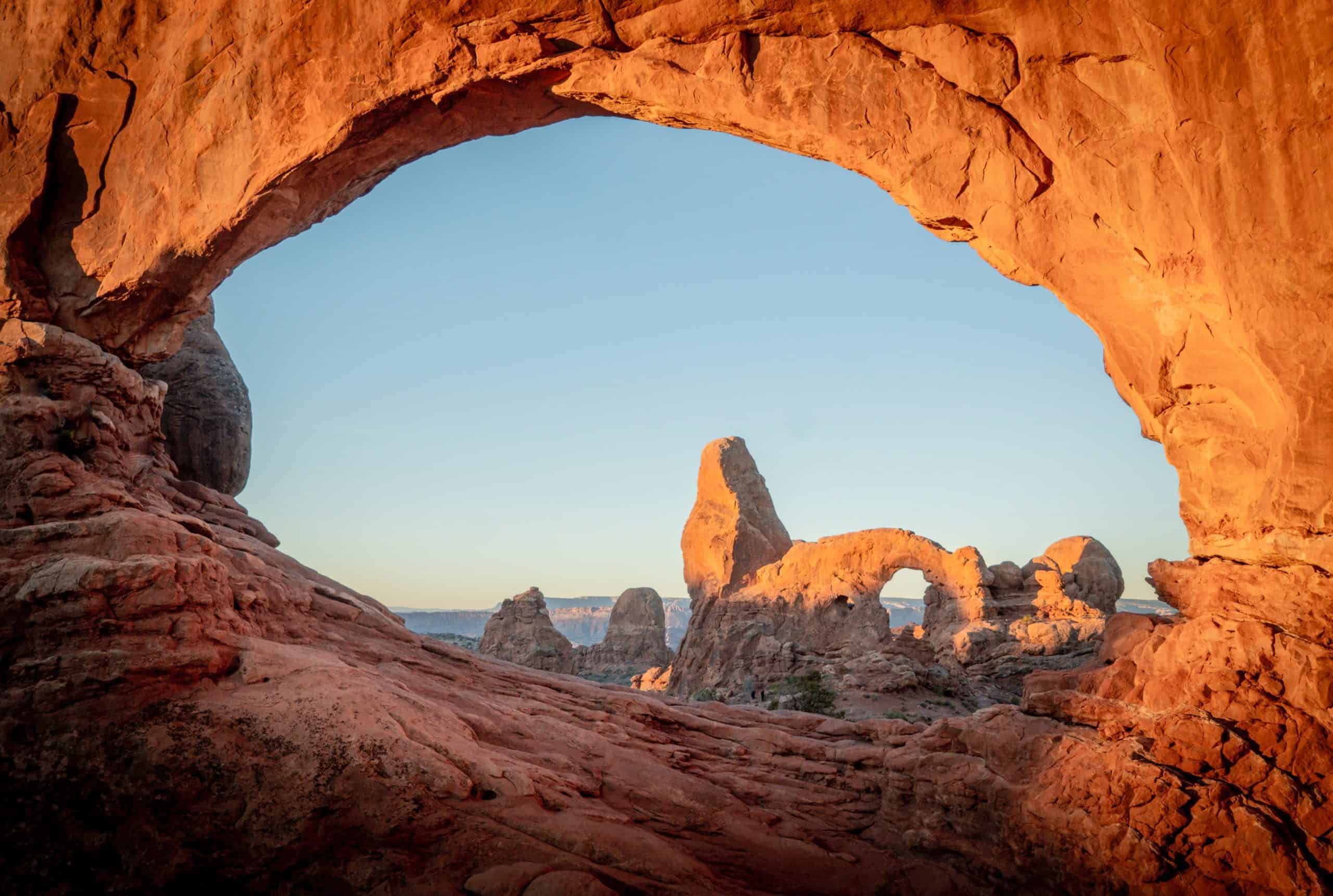If you’ve ever set eyes on one (or several) national parks in the US, you probably know how compelling and habit-forming they can be.
From forests of trees, high peaks, and beautiful landscapes, all the way to snow-capped volcanoes and salt lakes, there’s just a lot of magic waiting to be discovered.
Since you’re here, odds are you’re looking to explore more protected areas, and you’re ready to add them to your bucket list – or even make one from scratch because US national parks seem to be the only thing you could need more of in your life right now!
To help you make as much time as possible to explore these awe-inspiring destinations, I compiled a full US national park list so you could plan your vacations in readiness.
Let’s get some parks ticked off your (and our) bucket list by giving you a sneak peek of the 63 national parks!
How Many National Parks Are in the United States?
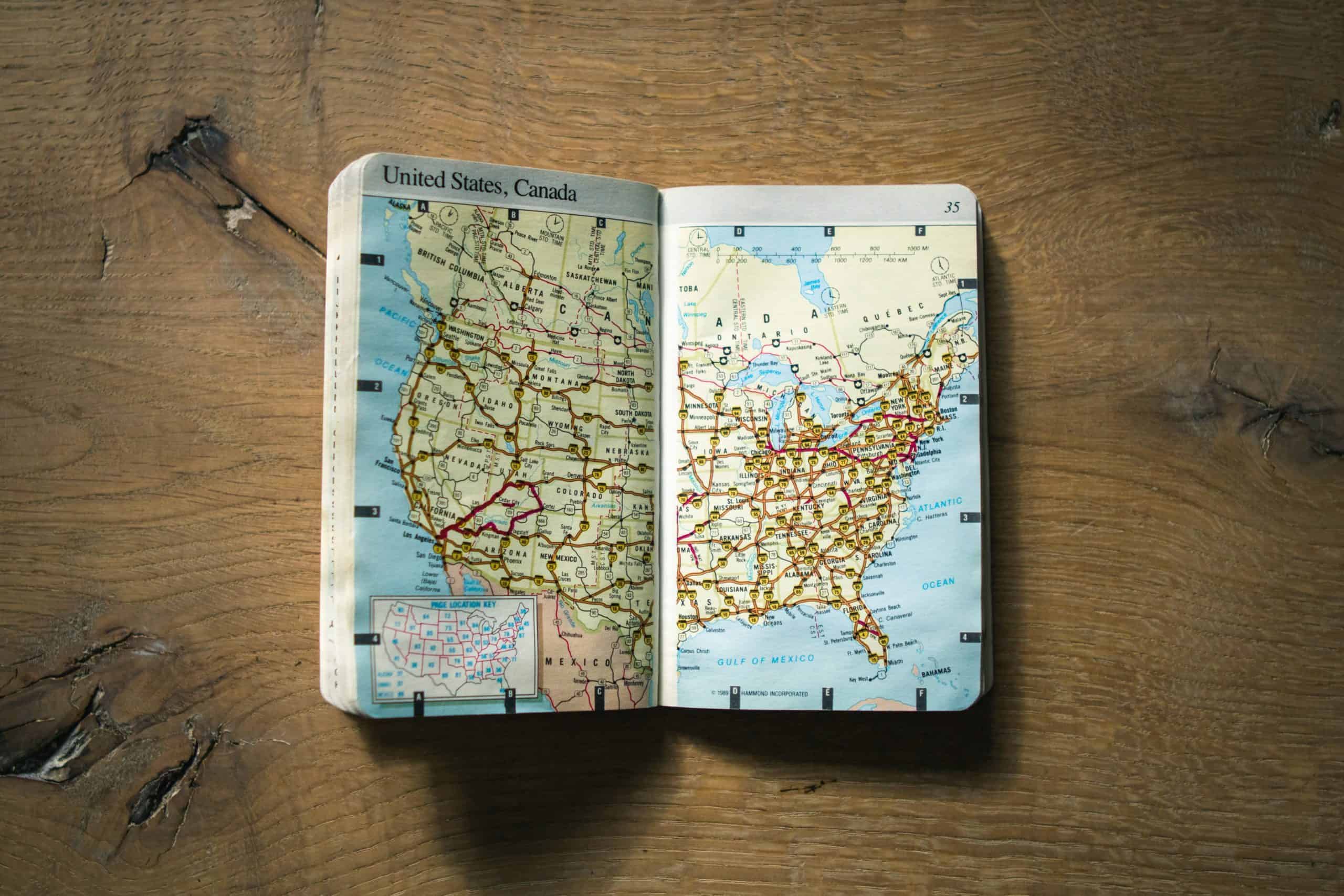
Before we get started, how many US national parks are there, anyway? Well, all in all, the US is home to 423 astonishing national park sites, divided into 19 different designations and amounting to more than 85 million acres of land in the 50 states, the District of Columbia, and US territories – all managed by the National Park Service.
However, not all of them enjoy the same popularity or considered national parks. When it really comes down to it, there were just 62 US national parks that were stealing the show as of 2020, attracting millions of visitors worldwide per year.
In late 2020, rumor had it that we were getting a 63rd US national park, and just recently, we did! So, today, the US has 63 national parks, including the newly added protected area of New River Gorge National Park and Preserve (which was previously a national river).
Which State Has the Most US National Parks?

The state with the most US national parks is California! So, if you want to tick a couple of US national parks off your bucket list in one trip, California is the state to visit. It features nine US national parks, closely followed by Alaska that has eight national parks.
Further exploring US national parks by state, right after California and Alaska, Utah and Colorado have the highest number of US national parks with five and four parks, respectively. So, you know where to start!
What Is the Only State Without a National Park?
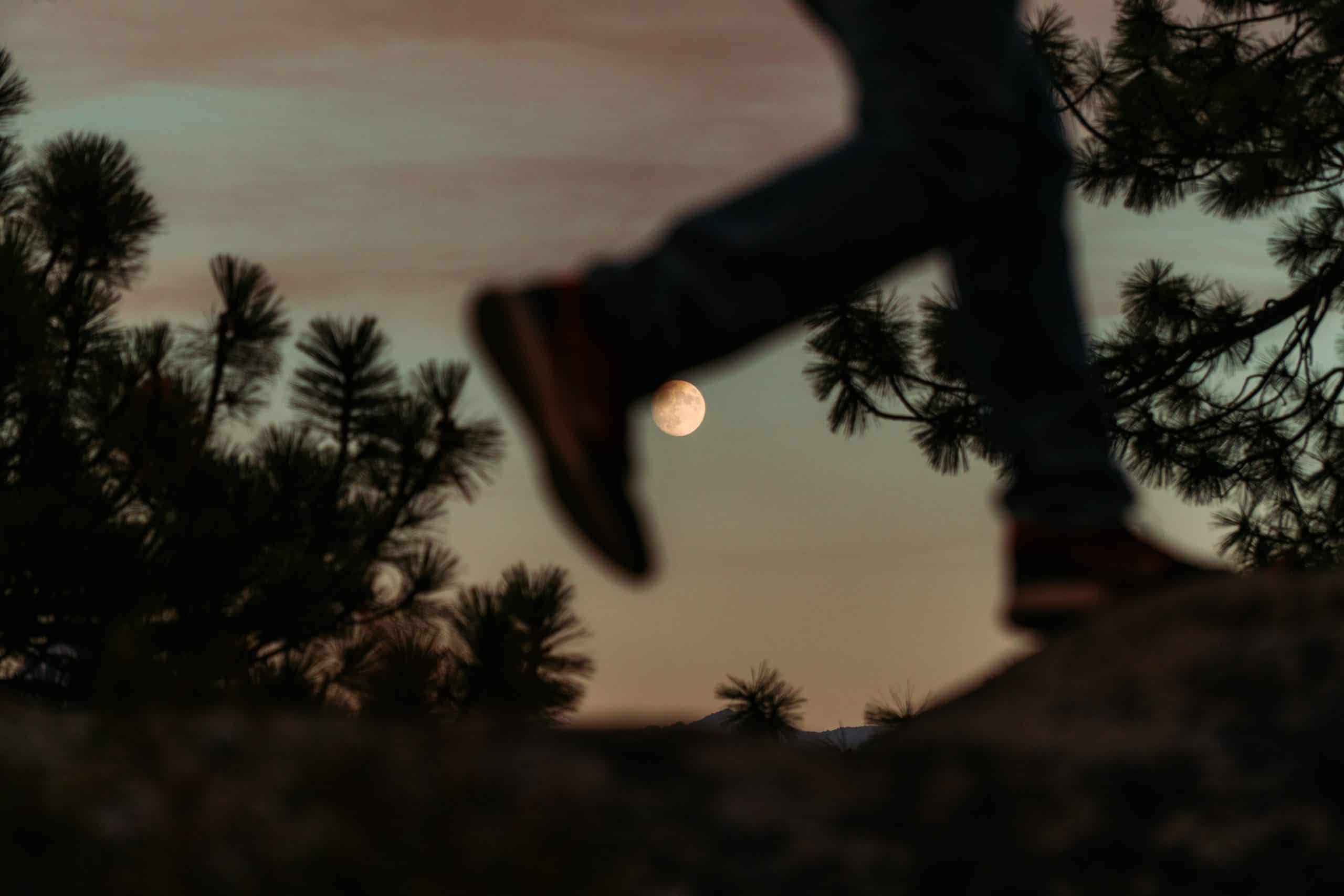
While Delaware has long been known as the only state without a US national park, 20 states actually don’t have US national parks, according to the National Park Service.
Namely, these are Alabama, Connecticut, Delaware, Georgia, Iowa, Kansas, Louisiana, Maryland, Massachusetts, Mississippi, Nebraska, New Hampshire, New Jersey, New York, Oklahoma, Pennsylvania, Rhode Island, Vermont, West Virginia, and Wisconsin.
Some lists also include Idaho and Illinois, but Idaho encompasses a significant segment of Yellowstone National Park, and Illinois encompasses a zone of the Gateway Arch National Park – so they’re technically not national-park-free.
A Complete US National Park List
Now that you know which states to jot down at the beginning of your bucket list and which you’ll probably be eliminating, it’s time to introduce you to the list of national parks in the US and brief about what makes each of them unique.
Note: These are not the US national parks by state, but rather in alphabetical order.
Here are the 63 national parks!
Acadia National Park, Maine
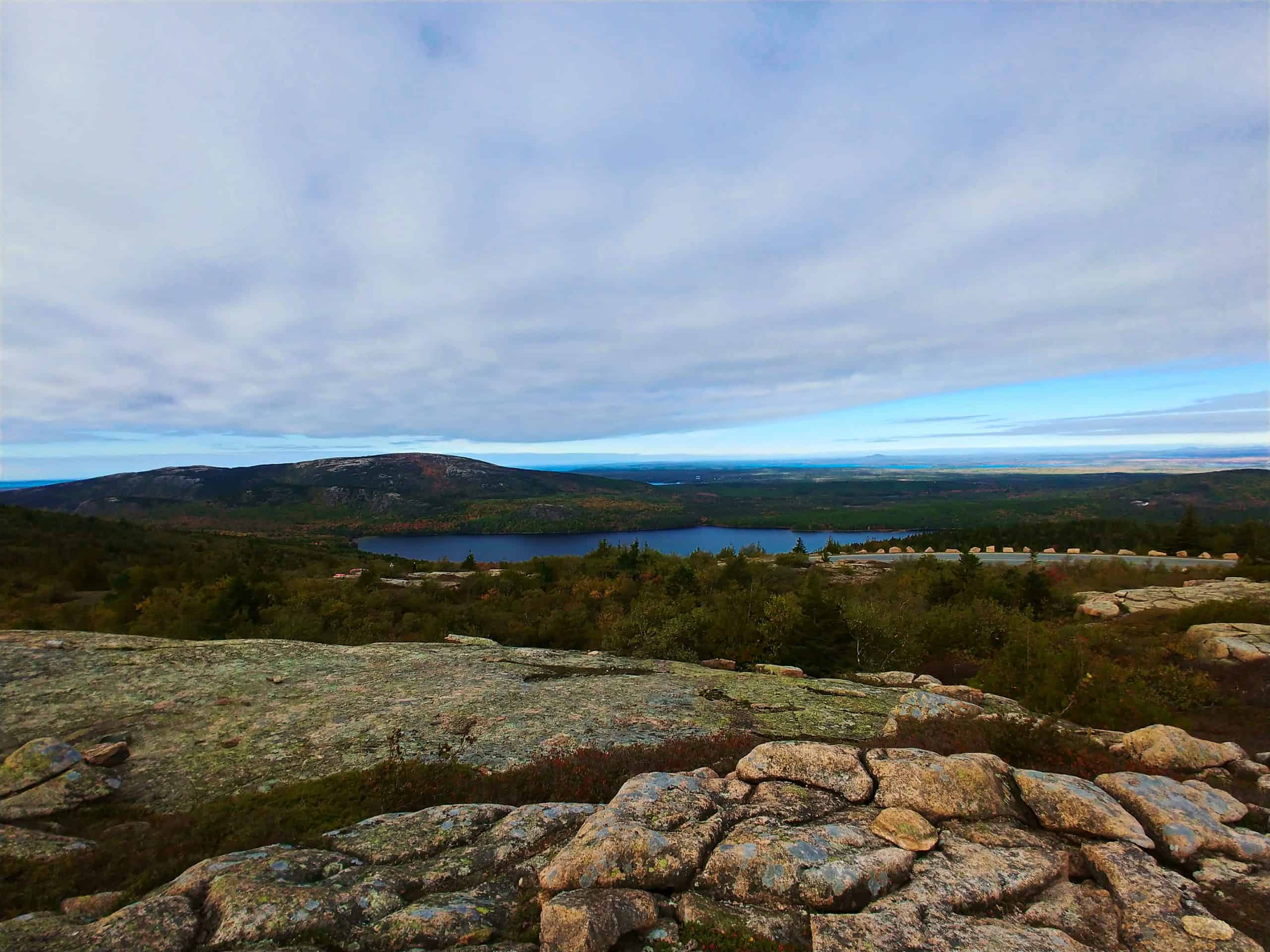
Made up of a cluster of islands, Acadia National Park is an Atlantic coast recreation area, and you can probably already guess what that means – scenic mountains, breathtaking sea views, and enchanting forests.
For a one-of-a-kind experience, drive to the Cadillac Mountain’s highest point for an unequaled, elevated sunrise view. Between October and March, the Cadillac Mountain is the first place to view sunrise in the US, so you’re literally getting the front seat.
Moreover, a landmark you can’t possibly miss at Acadia National Park is the Thunder Hole! While seemingly a simple natural rock inlet, you’ll experience a redefined meaning of “thunder” when you hear deep thunderous booms as waves crash into it, producing high-flying splashes – as high as 40 feet.
For a less thrilling escapade, visit the Jordan Pond Found for a fine dining experience at the Jordan Pond House restaurant or go horseback riding on the park’s carriage roads to wander around Acadia National Park.
Get Google Maps directions here!
Arches National Park, Utah
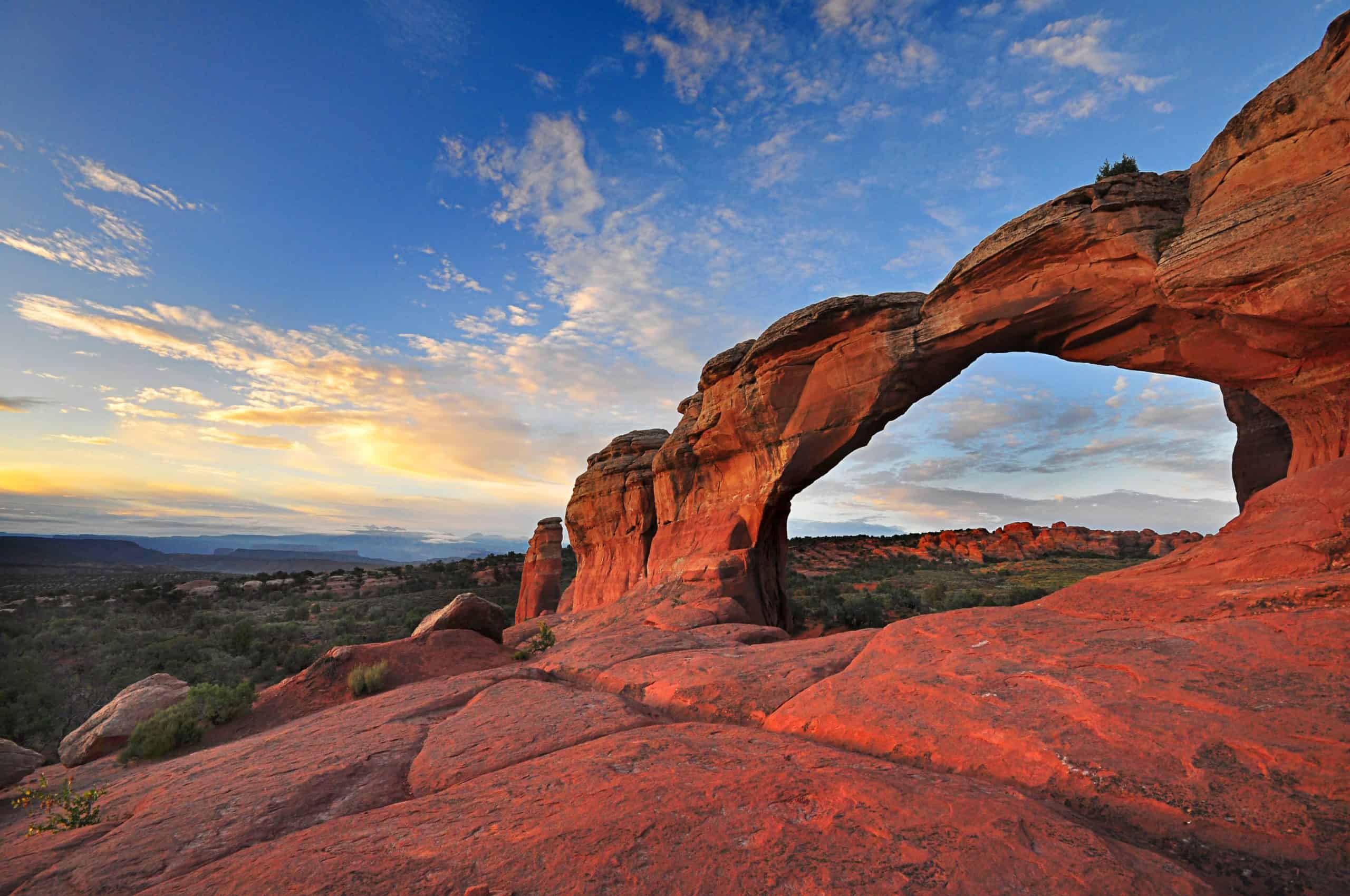
Arches National Park contains the largest concentration of natural sandstone arches in the world, making it one of the most popular US national parks in the west. For pure geological wonders, there isn’t a park that would rival Arches National Park.
Since the park houses above 2,000 natural sandstone arches, you’ll witness a “real-life gallery” of rock formations. Paradoxically, they appear as if they’re about to go to rack and ruin only to find them tall and balanced, although some date back to 65+ million years!
The world’s favorites are several:
- There’s the 52-foot-tall Delicate Arch that confidently free stands.
- There are the Devil’s Garden rocks and arches that were impressively formed through erosion.
- The iconic 128-foot Balanced Rock, the park’s largest, weighing nearly the same as 27 blue whales, is astonishing!
While you’re at it, book a ranger-led Fiery Furnace hike for a maze-like adventure on irregular sandstone, narrow ledges, loose sand, gaps, and more.
Get Google Maps directions here!
Badlands National Park, South Dakota
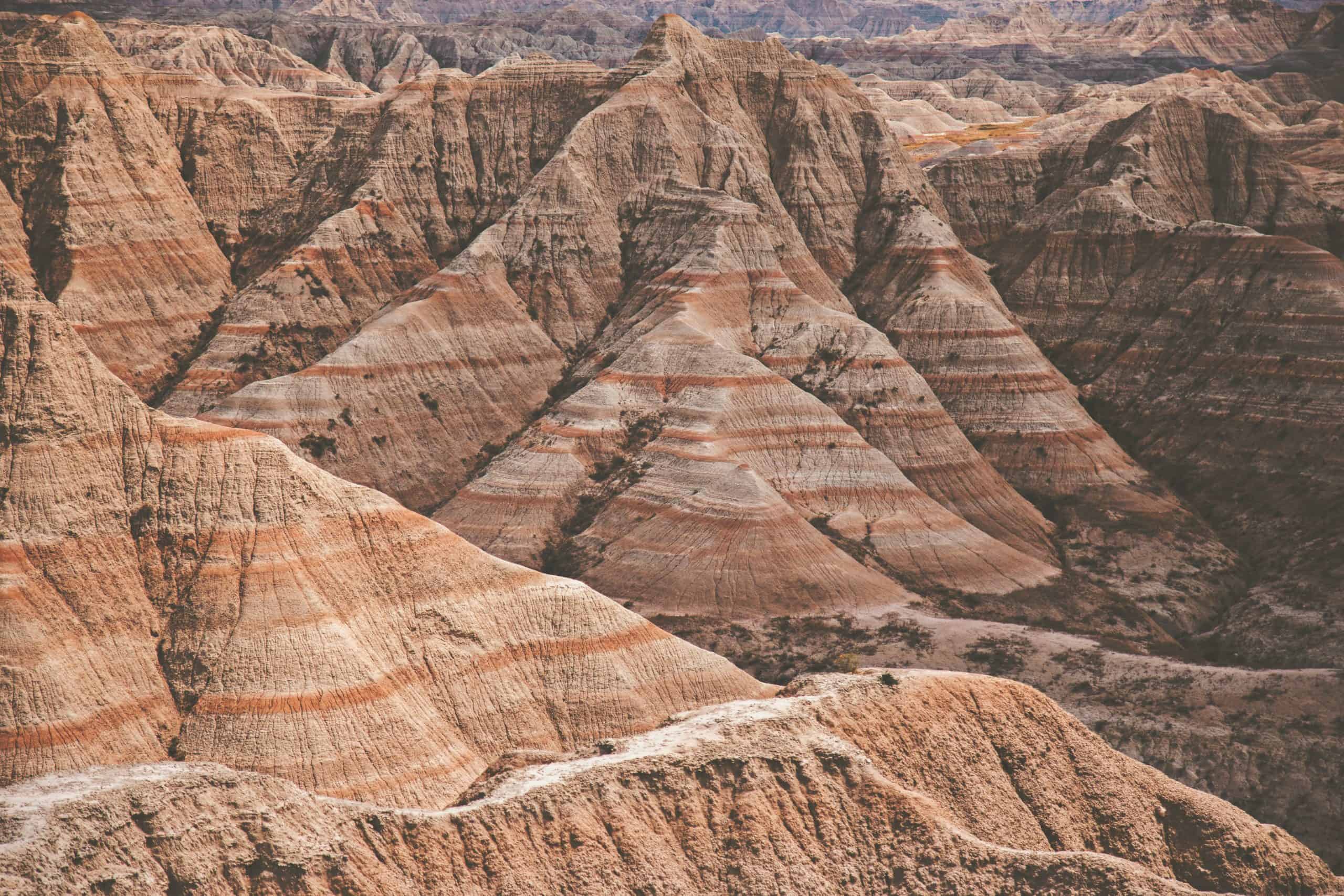
Called the “land of stone and light” by the National Park Service, Badlands National Park continues to attract worldwide crowds for its geologic deposits that house one of the world’s richest fossil beds. Imagine strolling through a park where ancient horses and rhinos once did!
Today, Badlands National Park protects prairie ecosystems of bighorn sheep, pronghorns, prairie dogs, prairie rattlesnakes, birds of prey, black-footed ferrets, American bison, and more endangered species of North America.
The Notch Trail is perfect for hiking down to the White River Valley and simultaneously obtain a 360-degree view of the prairie.
Since Badlands National Park is relatively isolated from busy cities with crowds, this is a magical opportunity for you to sky gaze, and park rangers do an excellent job of presenting night sky viewing programs under the Milky Way.
Speaking of rangers, families can attend a “Junior Ranger Program” to hike the Fossil Exhibit Trail with children and get hands-on experience with fossils!
Get Google Maps directions here!
Big Bend National Park, Texas
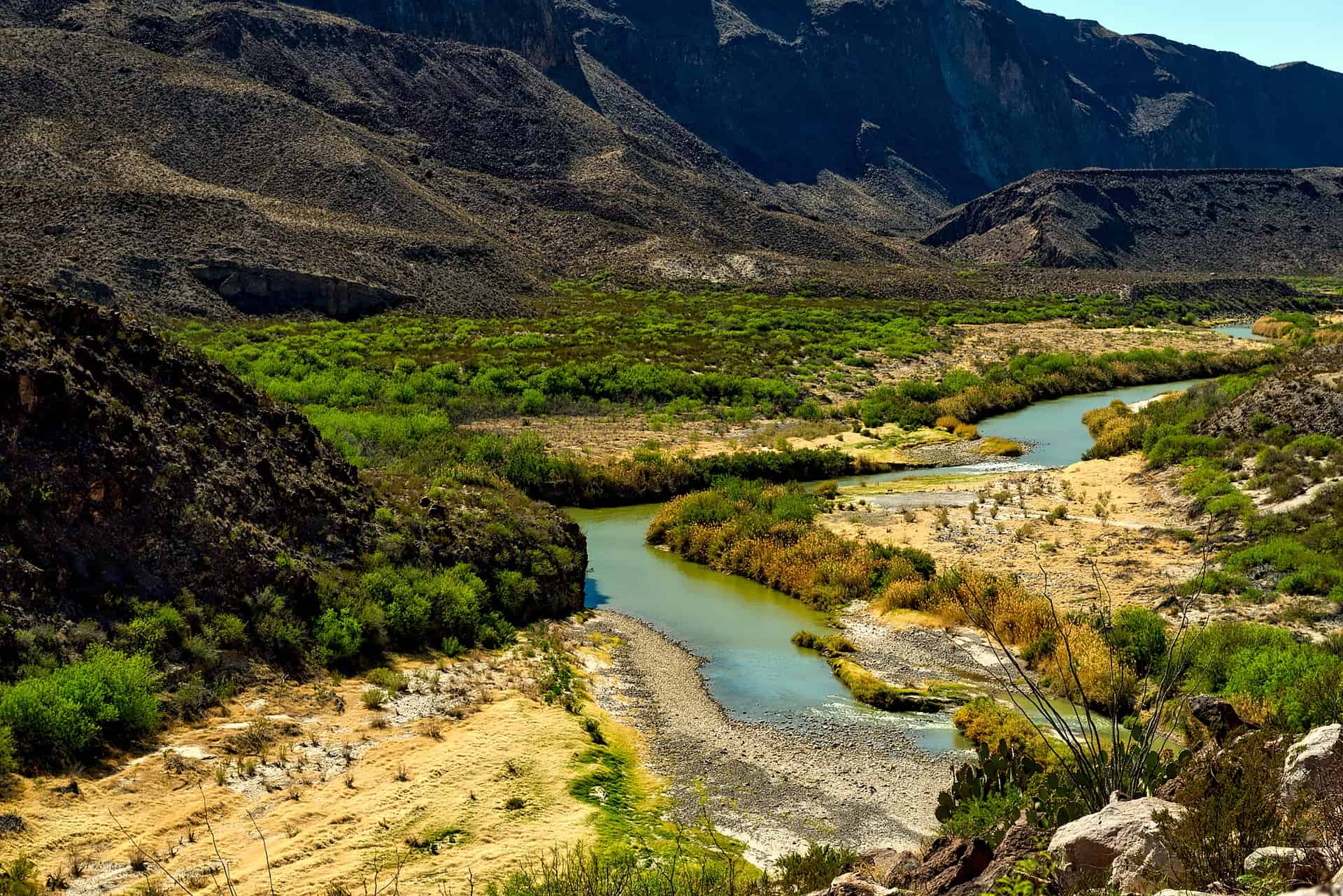
A park that’s claimed to have more registered bird species than any other national park, Big Bend National Park is a refuge for hundreds of species – not just birds. From tenacious cactus to flora and fauna, its natural desert seems to be just the right habitat for many.
To see for yourself the extent to which the Big Bend National Park is home to desert wildlife, The Ross Maxwell Scenic Drive provides you with the sightseeing you need while accompanying you to the Castolon Historic District, Santa Elena Canyon, and the ruins of Sam Nail Ranch.
And as you take the drive, pause for a hike; it can be hard to resist the temptation! The top trails are Emory Peak, Hot Springs Canyon, Boot Canyon, and Devil’s Den.
The park actually has more than 150 miles of hiking trails (whether desert or mountains) to explore.
And if time allows, visit the Fossil Discovery Exhibit for replicas of dinosaur bones!
Get Google Maps directions here!
Biscayne National Park, Florida
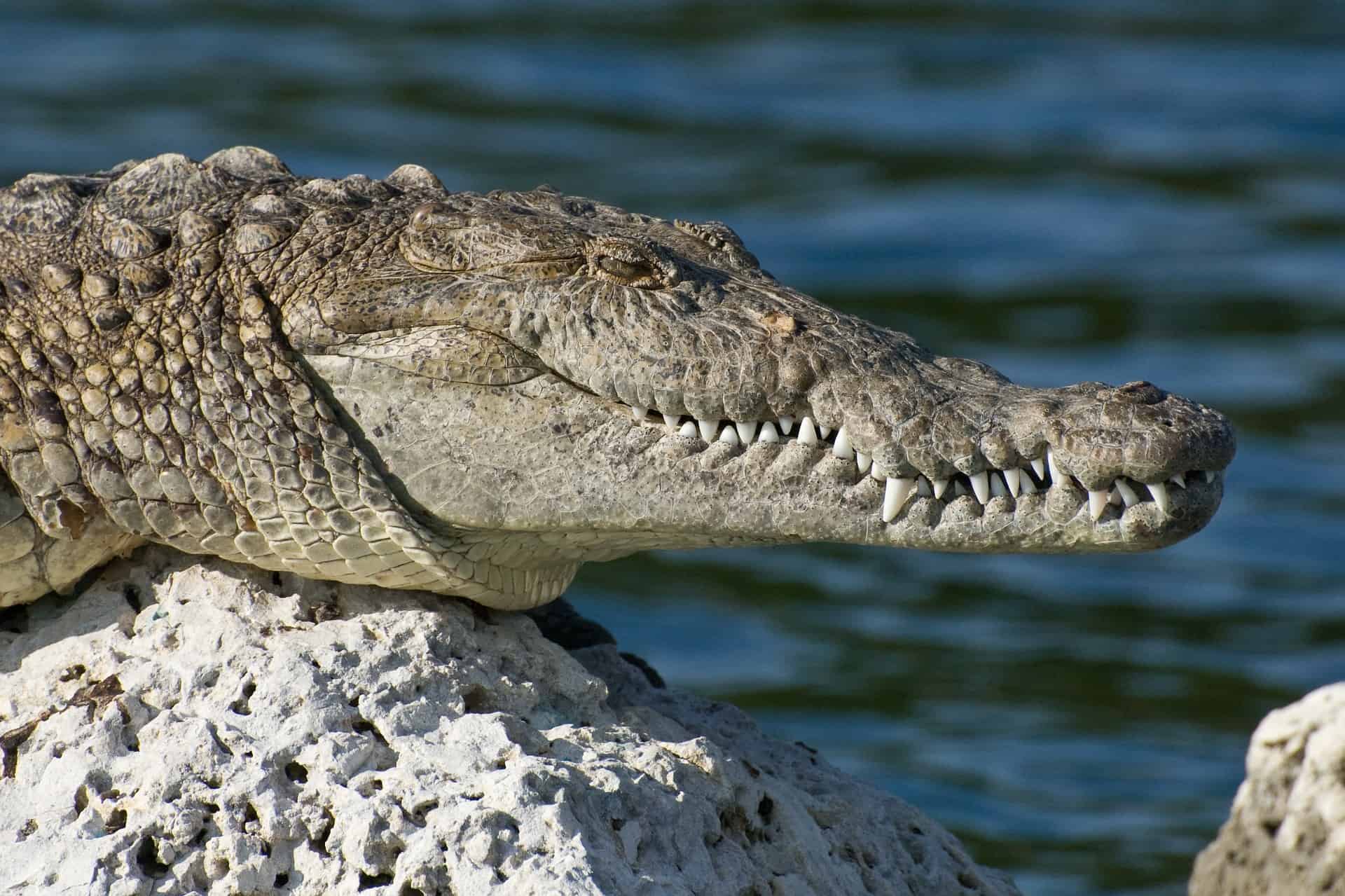
With reefs and islands that are only accessible by boat, Biscayne National Park is a paradise for outdoor enthusiasts who happen to love the sea and marine life.
Biscayne National Park preserves a distinct combination of emerald islands, coral reefs, and aquamarine waters. Its history book carries thousands of years’ worth of stories – from pirates to shipwrecks.
When it comes to activities, the sea is yours! Boat, camp, watch wildlife, snorkel, dive, fish, canoe, kayak, or whatever makes you happy.
The shorelines and bay waters will welcome you with open arms, all with a backdrop of a peaceful sky, whichever activity you choose. Just make sure to check the regulations of the park operations first before proceeding.
For a full-blown experience, a guided boat tour to Biscayne Bay will give you some valuable insight into shipwrecks, aquamarine life, presidents, conquistadors, and much more.
Also, snorkeling the underwater Maritime Heritage Trail connects several dive sites (mostly shipwrecks).
Get Google Maps directions here!
Black Canyon of the Gunnison National Park, Colorado
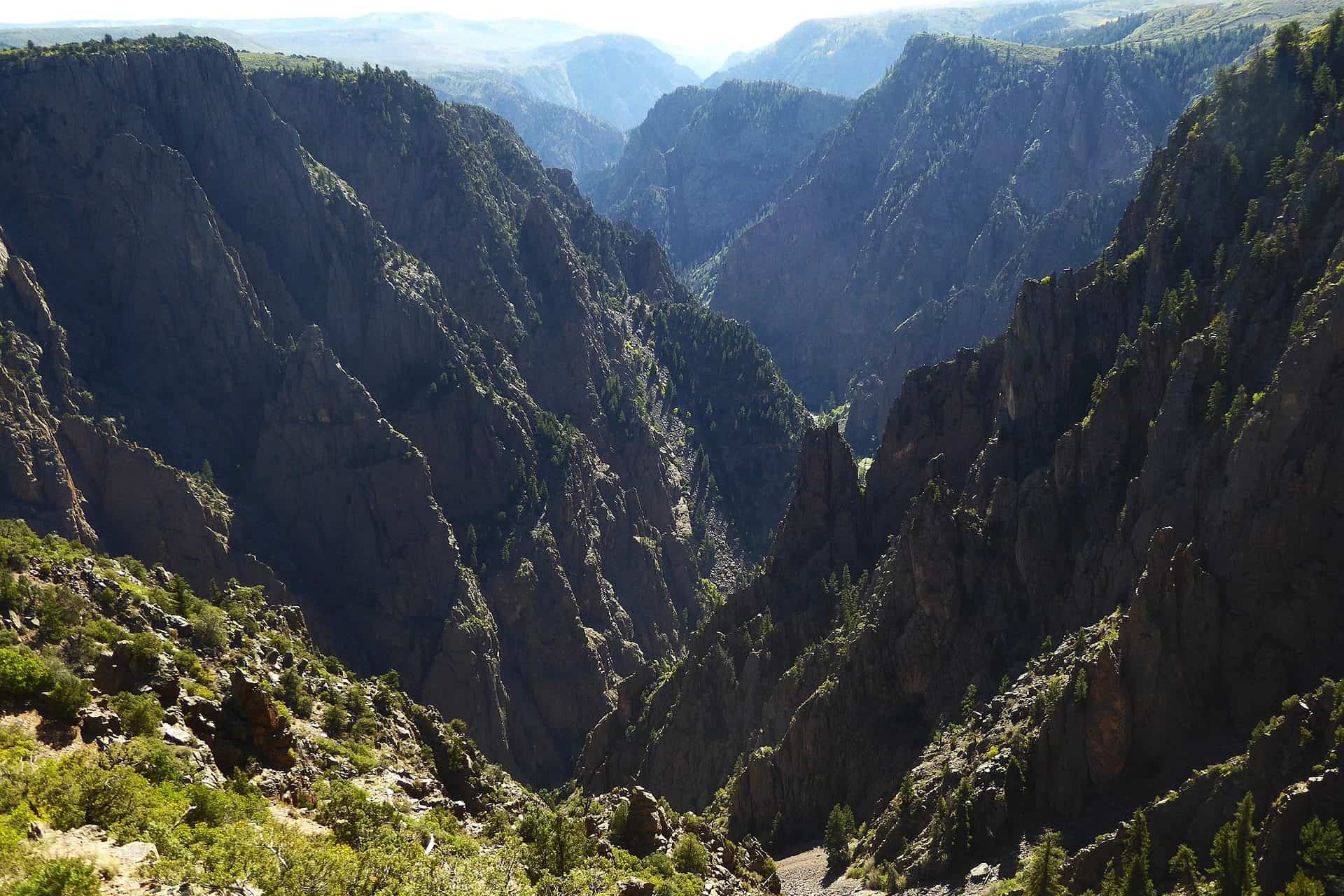
Astonishingly deeper than even the Grand Canyon, the Black Canyon of the Gunnison National Park provides an unrepeated blend of breadth and narrowness at once. While it’s incredibly deep, it’s also super narrow, making it an even more incredible scenery.
The Black Canyon of the Gunnison National Park provides you with a glimpse of the steepest granite cliffs, oldest rocks, and beautiful skies. That’s especially with the presence of the Gunnison River around.
For dramatic backdrops, roads and trails on the north and south rims give you that, while the East Portal Road leads to the river. These same trails are for hiking, like Oak Flat Loop, North Vista, and Chasm View.
Don’t miss the chance to see the Painted Wall cliff at Black Canyon, too! It’s the tallest in Colorado and a pleasure to look at with its color contrasts.
Wherever you go in Black Canyon, keep an eye out for mule deer, yellow-bellied marmot, and golden-mantled ground squirrels.
Get Google Maps directions here!
Bryce Canyon National Park, Utah
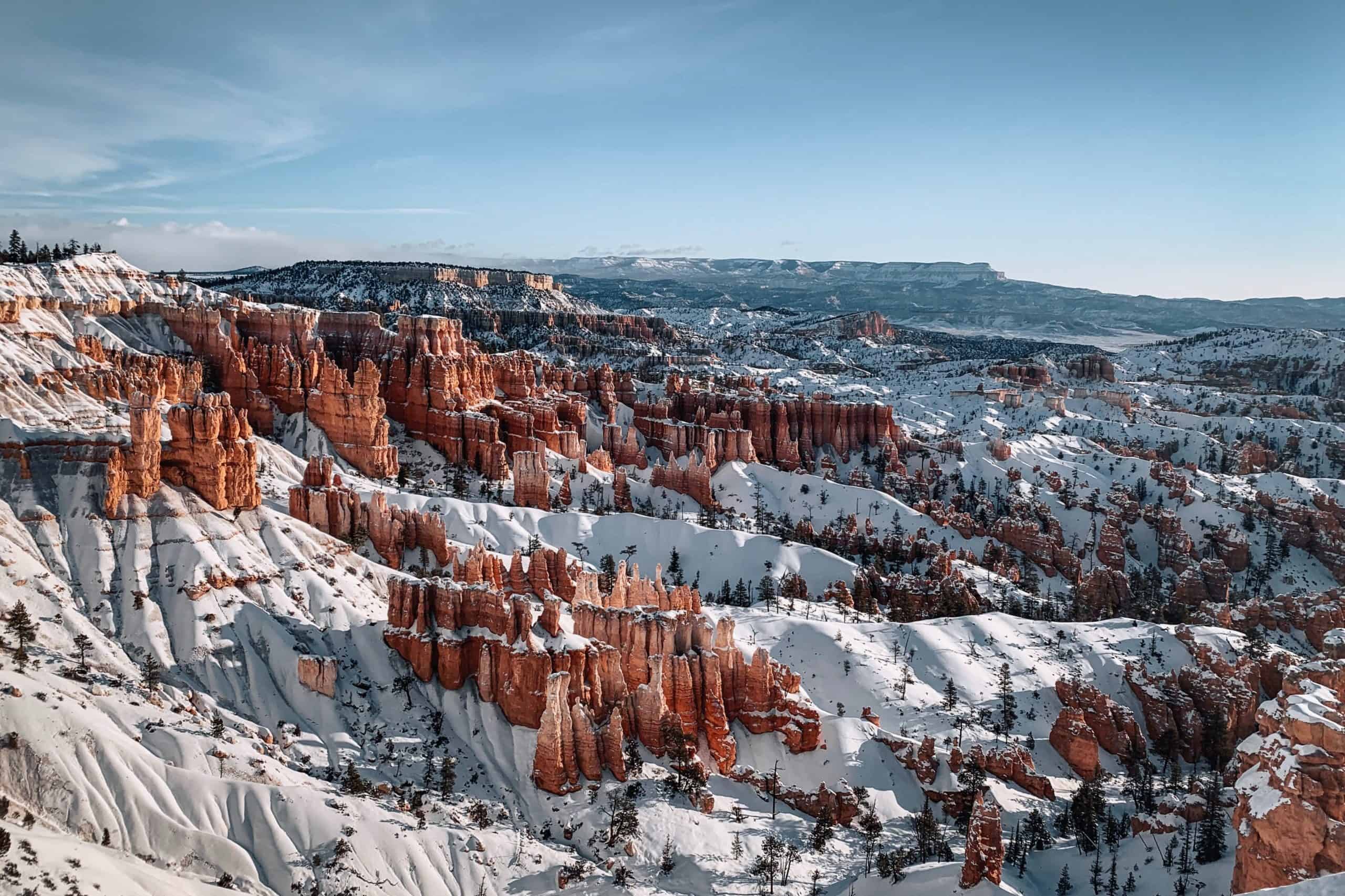
Looking to hike, camp, fish, bike, relax, watch the sunset and sunrise, or be amazed by geology? Bryce Canyon National Park should be your next destination. I know its name says “canyon,” but it isn’t – instead, Bryce Canyon is a collection of natural amphitheaters!
Suppose you’ve always been seeing irregular rocks in books and movies but never in reality. In that case, you’re about to see them at Bryce Canyon National Park, a stamping ground for the world’s largest concentration of hoodoos. Whether red, pink, orange, white, or any other unusual color associated with rocks, get ready to lay eyes on some unusual ones!
For a short hike, Mossy Cave will be your trail best friend! But for a longer one, don’t miss the Rim Trail hiking path for a chance to see the Sunrise and Sunset Points as well as the Inspiration and Bryce Canyon Points for sweeping canyon views and up-close views of the hoodoo formations. A must-see!
Get Google Maps directions here!
Canyonlands National Park, Utah
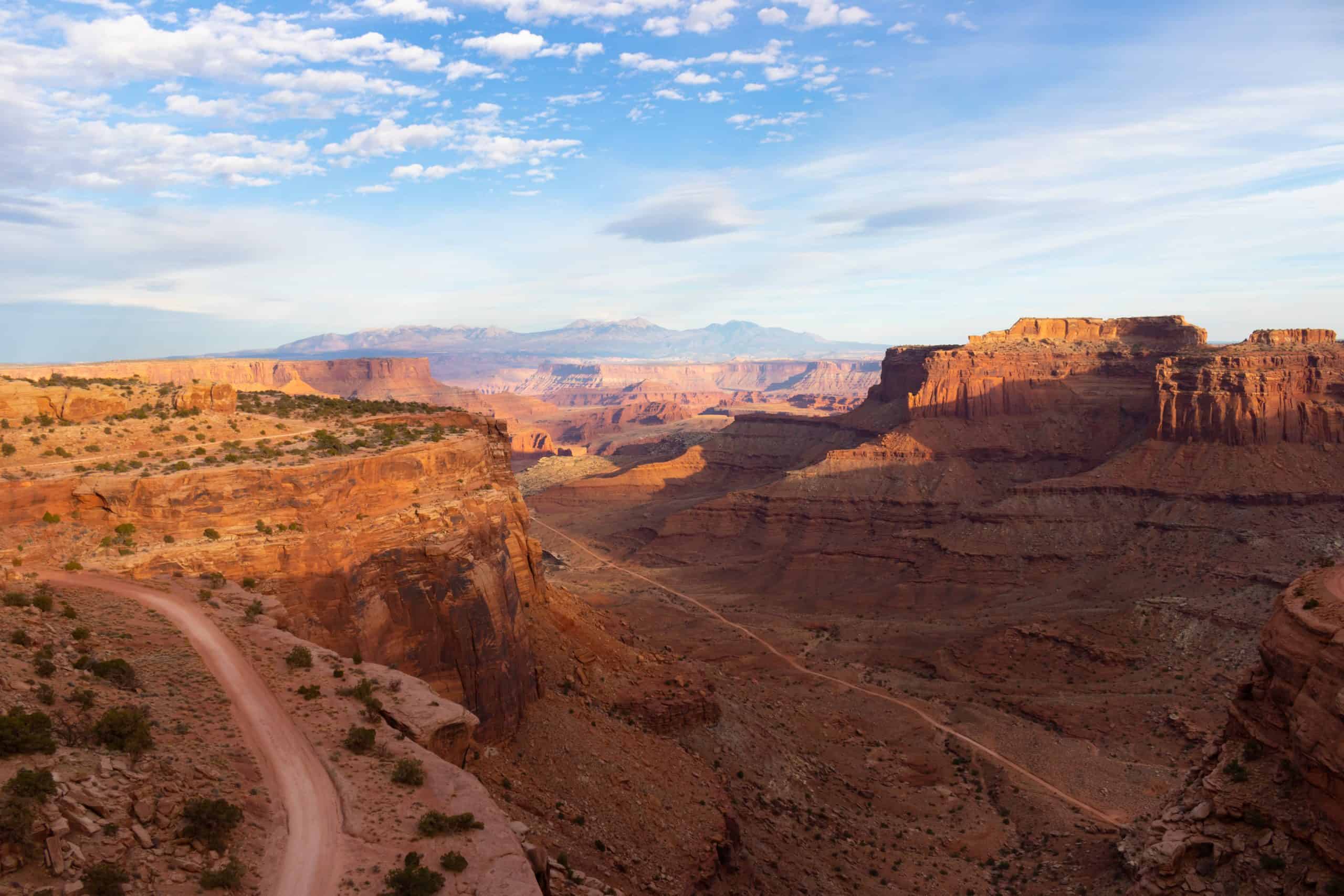
Preserving a beautifully colored landscape, Canyonlands National Park has one of the most dramatic desert panoramas, including amazing-formed canyons, arches, buttes, and mesas – all by the Colorado River.
The Canyonlands National Park is divided into four districts: Island in the Sky, The Needles, The Maze, and the rivers that divide the park. While each offers a different experience, they share the rough and ready desert.
So, where should you go? You could go to the Island in the Sky Mesa, hiking trails, or drive roads to accompany you to the backcountry for picturesque scenery. You could also walk to the Grand View Point to see The Needles and The Maze – if time is tight, this path guarantees you to tick the right boxes.
If you’re not in a rush, The Needles will present you with eye-catching rock spires and geologic formations, while the wild Maze is among the most dangerous places to hike in the United States, so it’s for experienced hikers!
Get Google Maps directions here!
Capitol Reef National Park, Utah
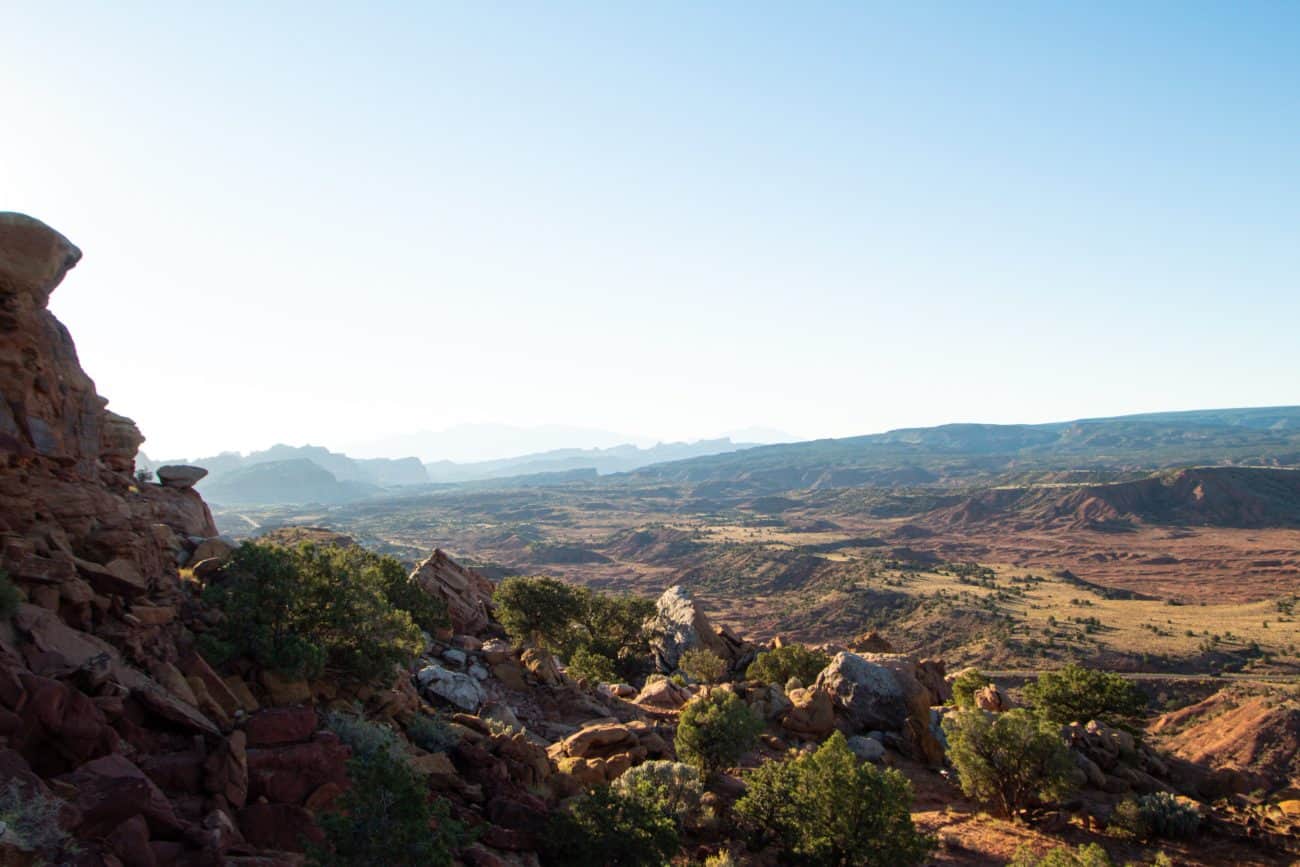
If you’re a fan of spectacular slot canyons, cliffs, and domes, you’ll consider Capitol Reef National Park, Utah’s hidden gem for its geological wonders and history of Native Americans.
Whenever Capitol Reef National Park is mentioned, so is Waterpocket Folds, a 100-mile “wrinkle” in the Earth’s crust, and that’s the highlight of the park’s geological features.
As a result of the wrinkle, distinct formations are standard, even in the way rugged cliffs and canyons look! Plus, layers of golden sandstone amplify the effects of the scenery.
Apart from that, the Capitol Reef National Park encompasses other trails, like Chimney Rock pillar and Hickman Bridge arch, making for strolls and short but sweet treks. Moreover, the multiple rock layers make for the ideal canyoneering experience.
Finally, tour the Scenic Drive road for a scenic drive (yes, that’s the actual name!), and don’t miss picking fresh fruits from the park’s dedicated orchard – it’s the only national park with that option!
Get Google Maps directions here!
Carlsbad Caverns National Park, New Mexico
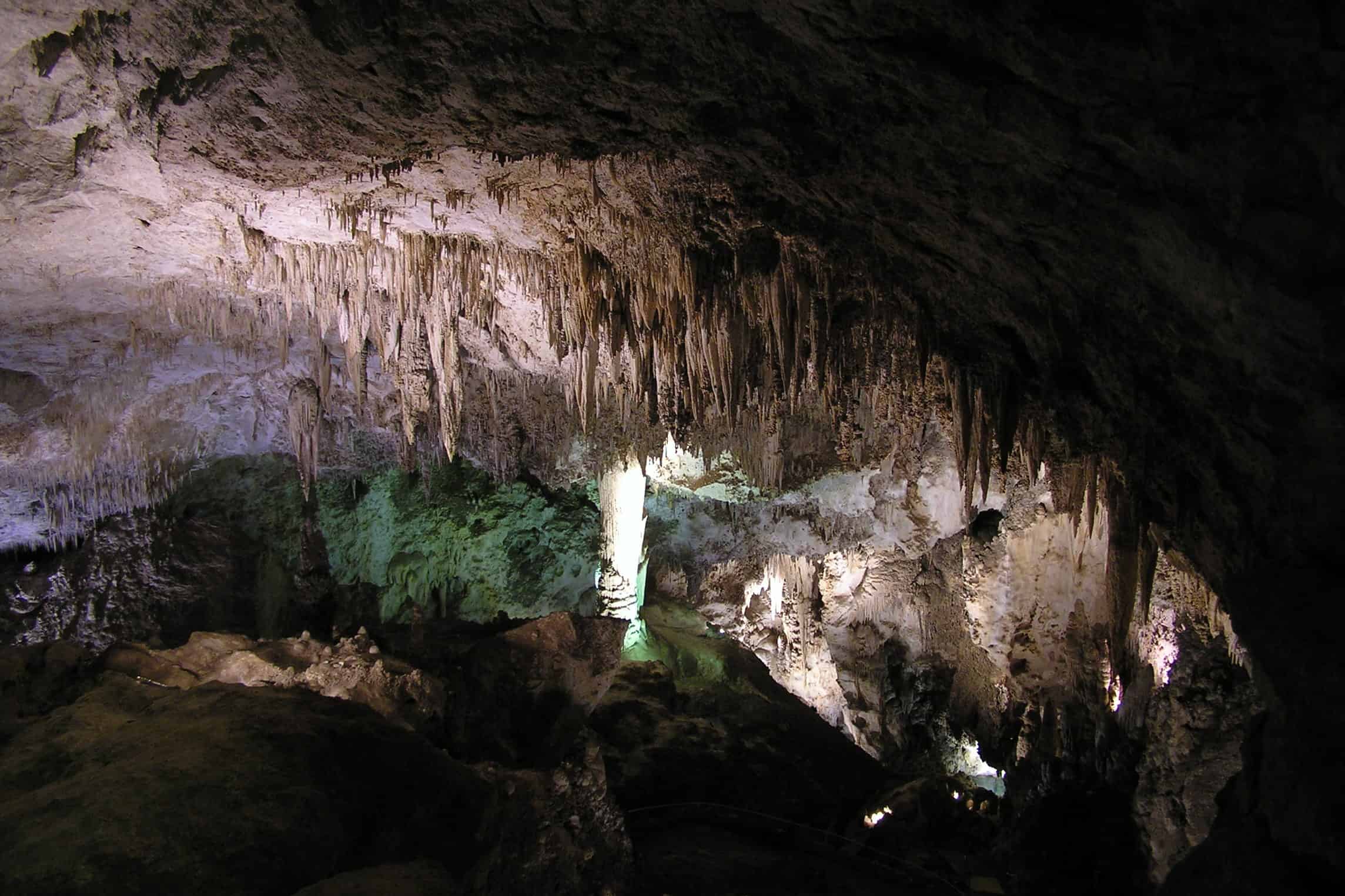
Featuring around 119 caves, the Carlsbad Caverns National Park is a wonderland of rocks and caves that came about due to limestone dissolving sulfuric acid.
While the Carlsbad Caverns National Park protects the caves beneath it, above them is a whole different world, full of abundant wildlife, cacti, mountain landscapes, and high ancient sea ledges. All of that and more is accessible through the Natural Entrance.
On the note of caves, Big Room Carlsbad Caverns is a must-see, a large limestone chamber, actually the largest in North America. The best part about visiting the chamber is that you could do it on your own, allowing you to take in its astonishing space at your own pace and get a share of solitude.
If you’re into bats and are fascinated by them, you’ll be happy to hear that Brazilian free-tailed bats visit the caves from April to October. See them as they fly out of the caves before sunset!
Get Google Maps directions here!
Channel Islands National Park, California
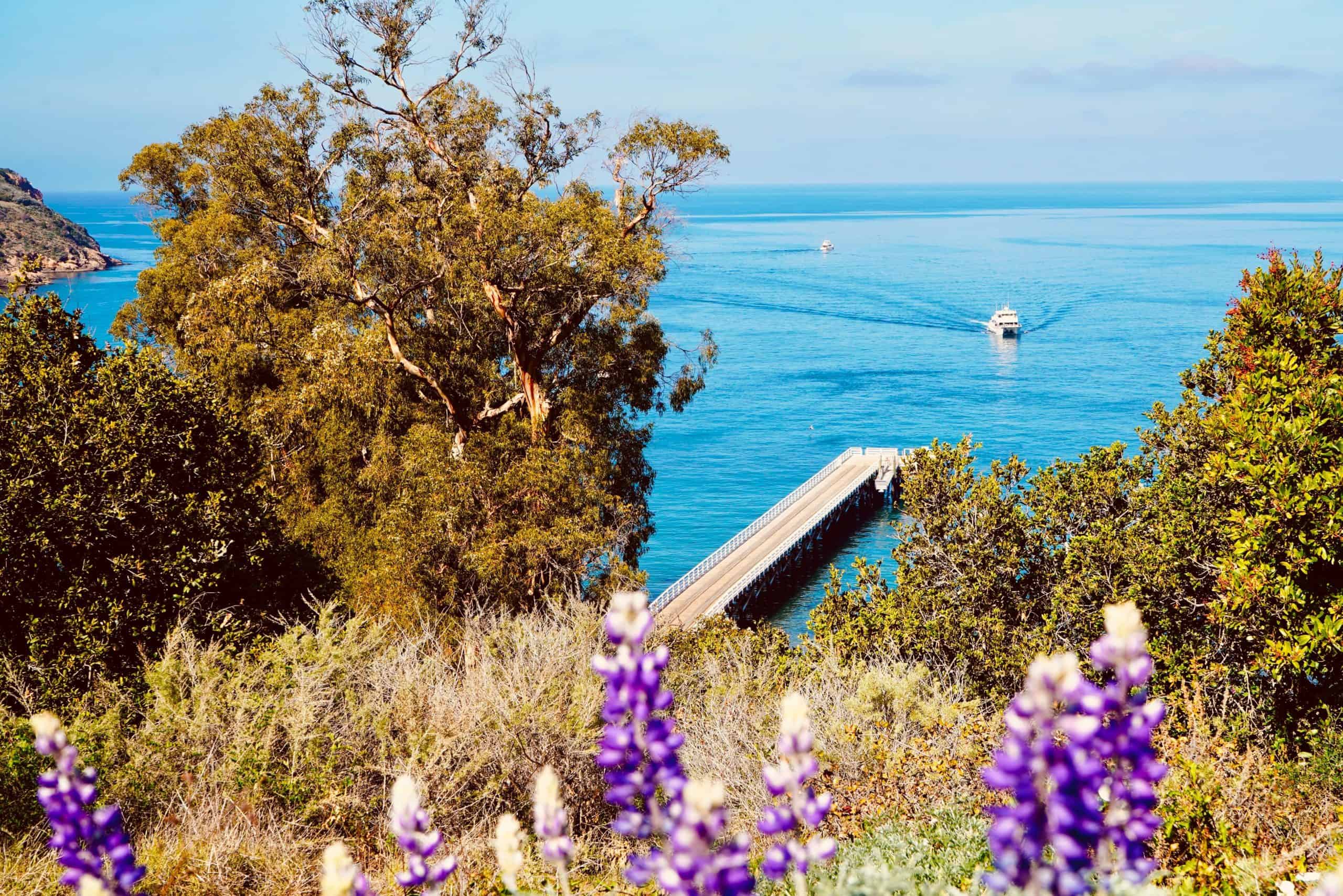
If you feel like all US national parks resemble one another and you’re seeking scenes and species as scarce as hen’s teeth, Channel Islands National Park should be the first on your bucket list.
Consisting of five islands, the Channel Islands National Park is a breeze to visit all year. With that said, spring is ideal for wildflower bliss, and winter is top-notch for wildlife watching.
When it comes to remarkable destinations, Anacapa Island is known for its trails leading to a 1932 lighthouse and a clifftop on Inspiration Point, while Santa Cruz Island is admired for its sea caves, especially the Painted Cave.
Santa Rosa Island is all about pines unique of their kind, and Santa Barbara Island is where seabirds reside.
Ultimately, visit Channel Islands National Park if you’re looking for a break from the daily urban life – you’ll forget there’s life among the five islands (Channel Islands), especially Santa Barbara and Santa Cruz!
Get Google Maps directions here!
Congaree National Park, South Carolina
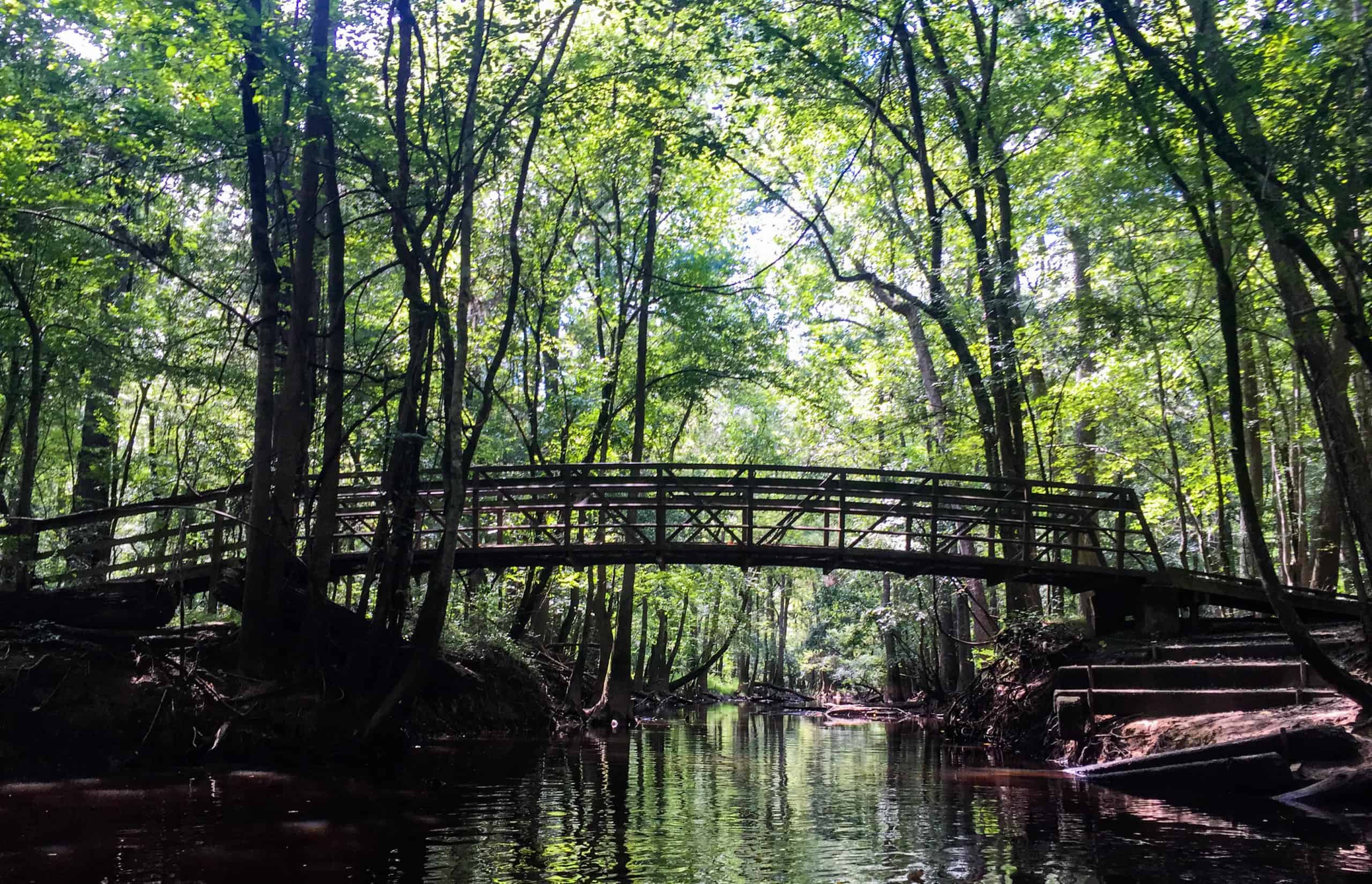
Congaree National Park is an isolated world of biodiversity, preserving the “largest intact breadth of old-growth bottomland hardwood forest” remaining in the United States. While its gigantic state champion trees are its hallmark, I’d opt to say that its crown jewels are, in fact, its waterways.
My top recommendation would be to take a canoe trip (ranger-guided one) through the great swamp and see the diversity of animals living within it, including sea turtles, birds, fish, and more.
Speaking of canoes, there’s a marked canoe trail that allows you to bring your own canoe and PFD to canoe down Cedar Creek and enjoy its beauty. Fishing is also allowed!
However, the park has its doors wide open for different ways of exploration, so if you’re more comfortable on foot, Congaree National Park has more than 25 miles of hiking trails as well as 2.4 miles of boardwalk that grants you access to Weston Lake and more trails.
Get Google Maps directions here!
Crater Lake National Park, Oregon
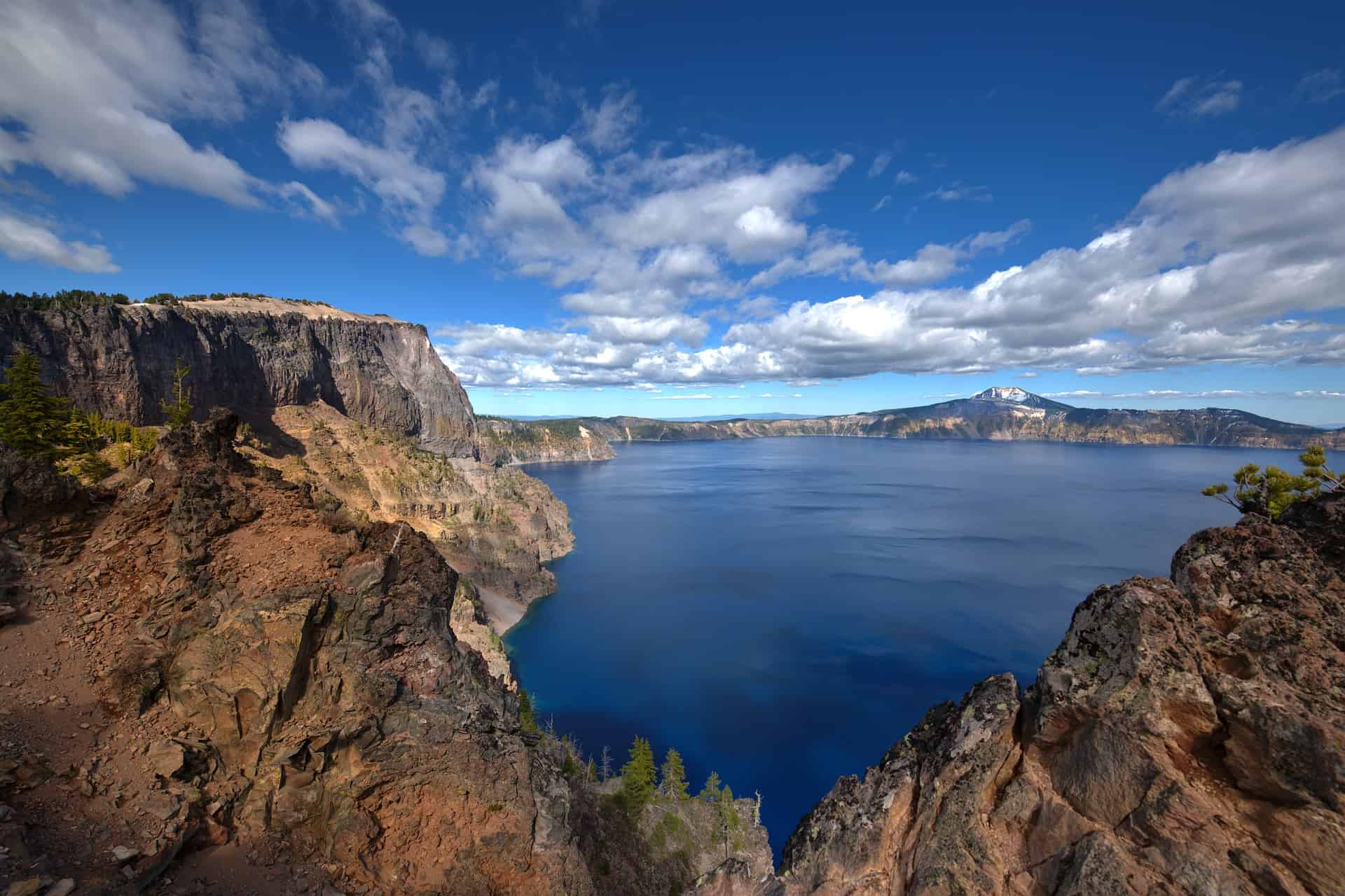
Crater Lake National Park is one that’ll take you more than just a moment to sink in its history. More than 7,000 years ago, natives witnessed its coming to life following the collapse of a tall peak due to a violent eruption. The result? Not what you expect. Today it’s the deepest lake in the United States and one of the world’s most pure lakes.
At the peak of the Cascade Mountain Range, you visualize the mesmerizing colors of the blue water. Even when Crater Lake is invisible when clouds take over, you’ll still gaze in wonder at the stunning view.
You’ll also notice a cinder cone near the edge of the lake. That’s Wizard Island, named that way since it resembles a wizard’s hat – and some say that it’s an active volcano.
For a full view of the significant volcanic formations of Crater Lake National Park, take a drive on The Rim Drive surrounding the lake!
Get Google Maps directions here!
Cuyahoga Valley National Park, Ohio
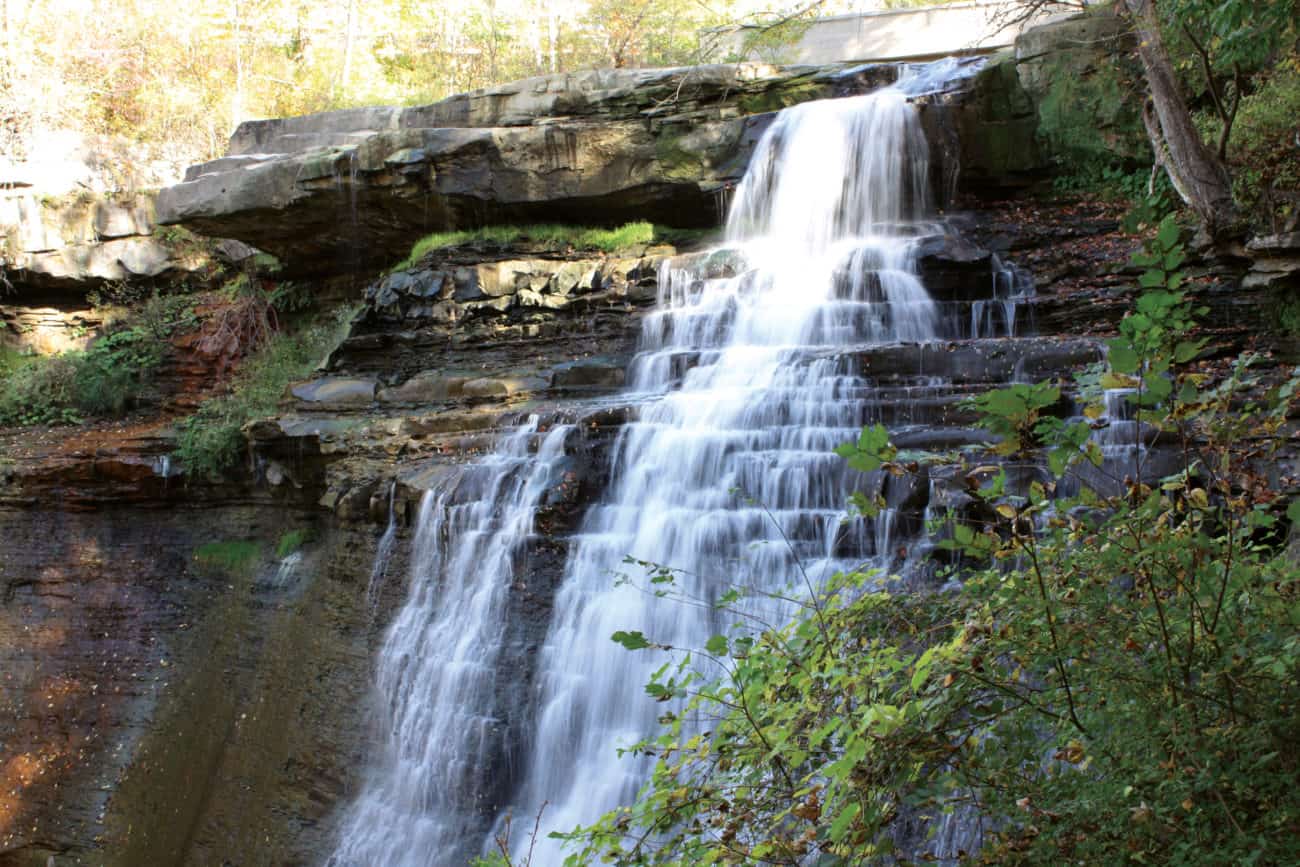
For a combination of a national park and an urban place, which you don’t come across every day, Cuyahoga Valley National Park is among the few US national parks providing that blend, making it exceptional. Plus, Cleveland and Akron are a very short distance away, which are urban areas themselves.
There’s much to be discovered within the Cuyahoga Valley National Park, from rolling hills and farmlands to native plants and wild animals inhabiting it. But what’s truly fascinating to think of while strolling the park is that the Cuyahoga River once caught on fire in 1969 as a result of suffering decades of pollution from industrial waste.
Over the 50 years that followed, significant efforts went into restoring the river, and the result is what you see today! And not just that, but there are also many recreational activities to enjoy along the river, including hiking, golfing, kayaking, snowshoeing, cross-country skiing, trail riding, and a lot more.
Get Google Maps directions here!
Death Valley National Park, California
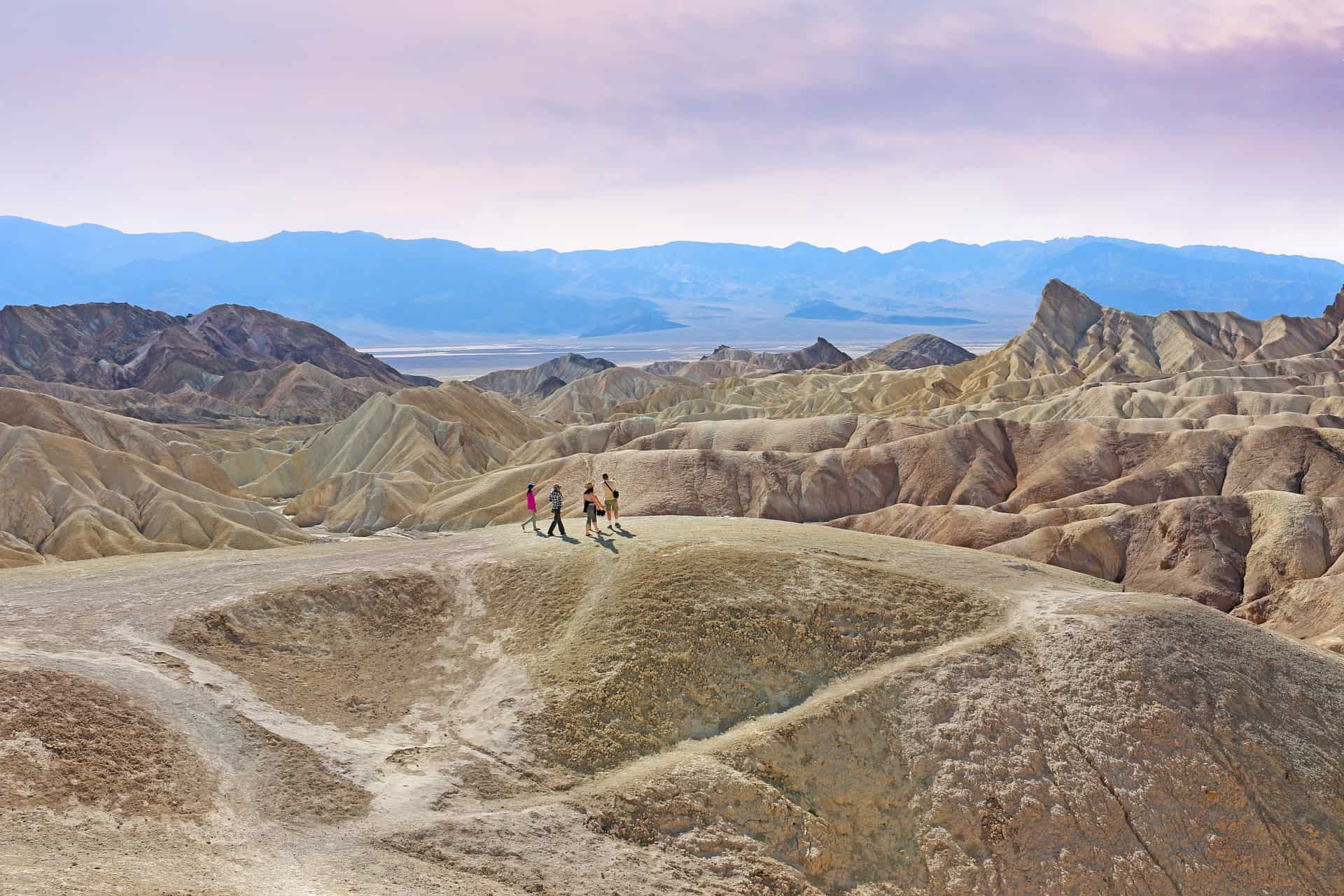
Straddling the California-Nevada border, Death Valley National Park is the “land of extremes.”
Imagine a place with consistent water shortages and extreme summer heats only to be frosted with snow and rainstorms during winter!
Just as diverse as its climate are Death Valley National Park’s inhabitants, the environment breeds wildflower fields, tiny fish in lush oases, sliding rocks, and undomesticated animals.
Moreover, at 282 feet below sea level lies Badwater Basin, the lowest point in North America. In contrast, the peaks of the mountains are as high as 11,000 feet – highs and lows at their finest!
Depending on when you visit Death Valley National Park, one of its landmarks is Scotty’s Castle, a magnifier of the 20s and 30s. Once called the Death Valley Ranch, the village was an engineer’s home, a wealthy matron’s vacation, and a getaway for a mystery man.
Unfortunately, the castle’s area faced a flood and is closed until at least 2022.
Get Google Maps directions here!
Denali National Park and Preserve, Alaska
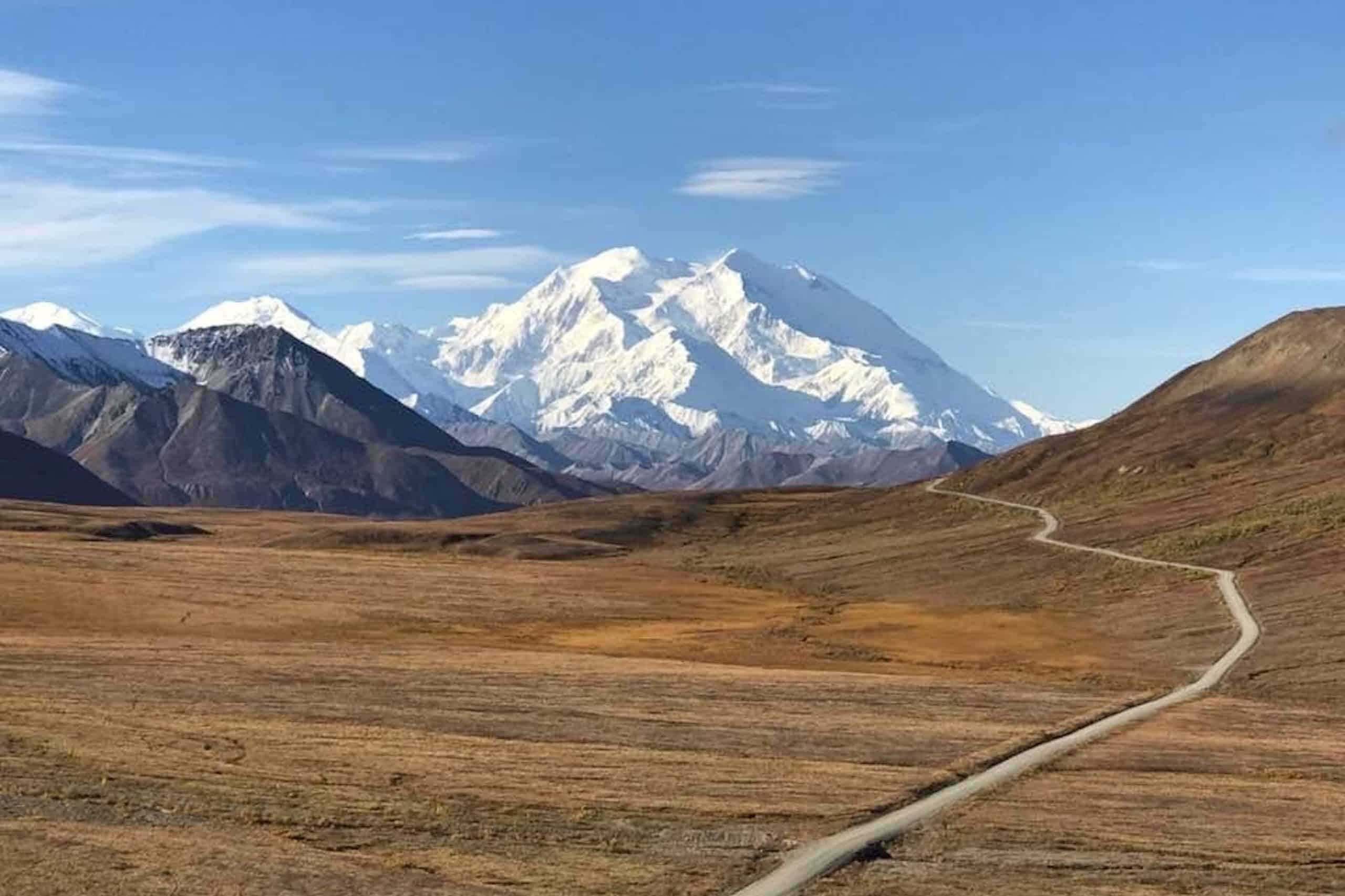
Formerly known as Mount McKinley National Park for actually housing Mount McKinley (now Denali), North America’s tallest peak, Denali National Park and Preserve consists of six million acres of wildland.
It’s home to wildlife animals, including wolves, grizzly bears, moose, caribou, and Dall sheep.
Since the scenery is pretty much to die for, take the golden chance to take a bus trip around the Denali National Park since most of its single road is only accessible by tour buses, anyway.
More importantly, the buses are only available during the summer, so that’s when you should plan your visit. You could also go solo by renting bicycles or using park shuttles!
Likewise, summer is the best season for activities at Denali National Park! Be it backpacking, hiking, mountaineering, rafting, biking, the low-elevation taiga forest, braided glacial rivers, snowy mountains, and high alpine tundra leave nothing desired. Just be prepared to meet bears along the way. Bear spray is highly recommended!
Get Google Maps directions here!
Dry Tortugas National Park, Florida
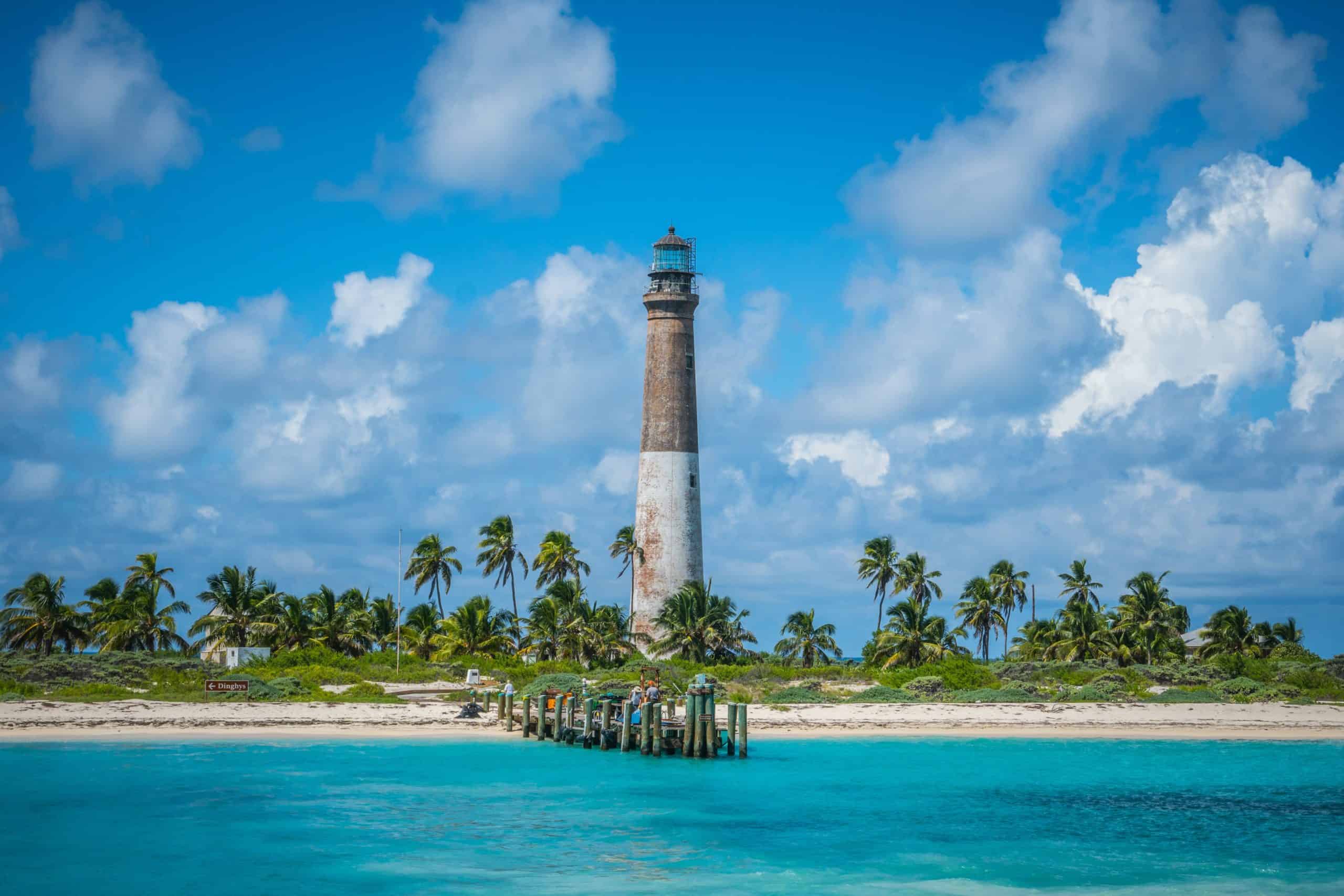
Similar to the modern-day Maldives, Dry Tortugas National Park is a water escapade! Consisting of seven islands only accessible by boat or seaplane, the park is the perfect dive site, nesting site, and relaxation site! Other than the water, the park also has some protected coral reefs.
Most prominently, the Dry Tortugas National Park is known for being home to Fort Jefferson, a massive coastal fortress and the largest brick masonry structure in the United States, spanning more than 16 million acres. Around the location in Garden Key are impressive beach landscapes!
For turtles, head to the Loggerhead Key and also take a glance at the Windjammer Wreck, the remains of an 1875 ship – it also happens to be a popular dive site!
It’s worth noting that this is a park that requires some preparation, especially if you’re thinking of camping overnight.
Hint: take the Yankee Freedom boat to get you to Garden Key!
Get Google Maps directions here!
Everglades National Park, Florida
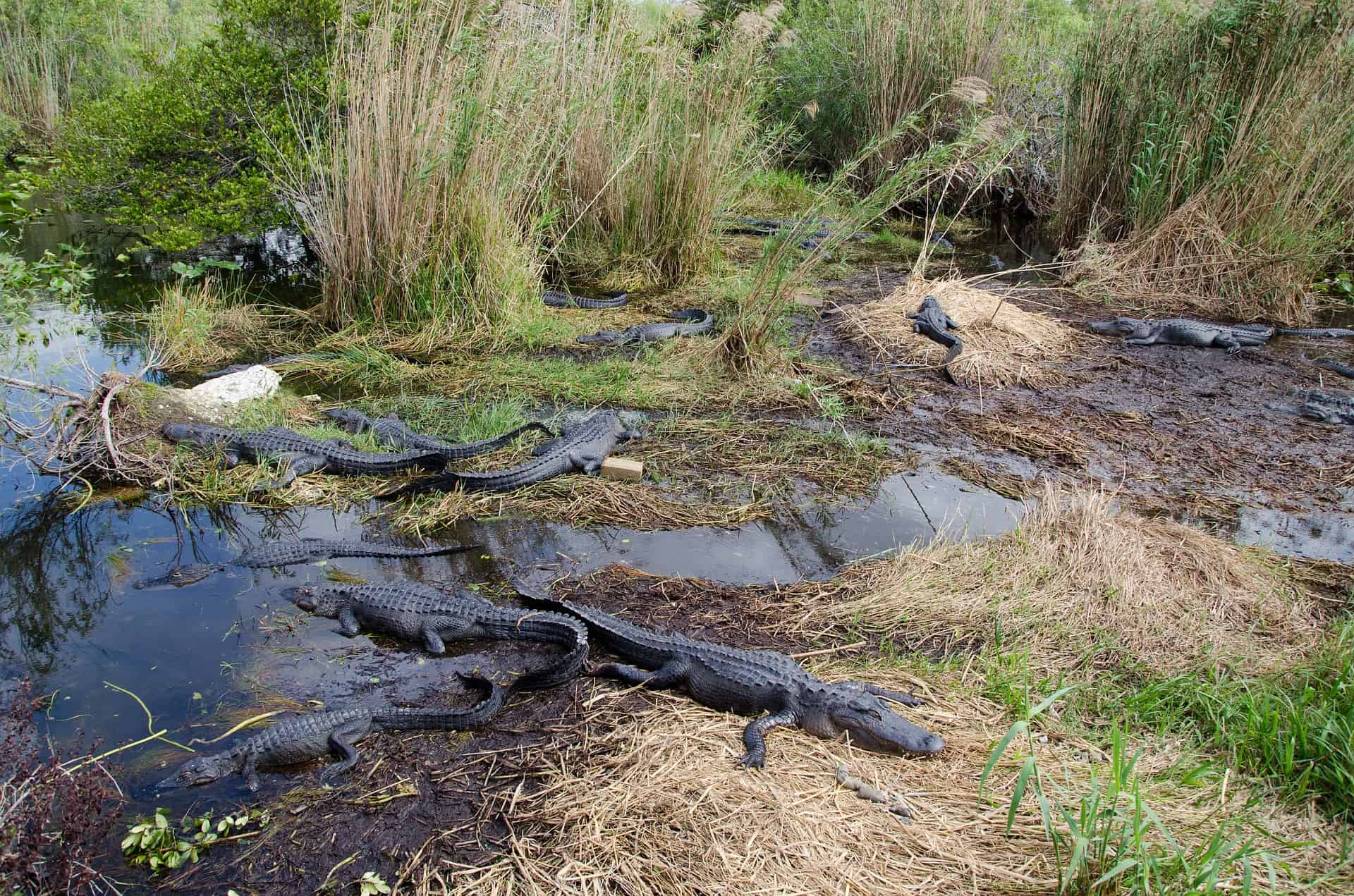
Everglades National Park is the United States’ largest subtropical wilderness area, preserving and protecting habitat for some of the rarest and most endangered species, including the leatherback turtle, American crocodile, Florida panther, and the West Indian manatee. For that, the park is a World Heritage Site and an International Biosphere Reserve.
The best thing to do at Everglades National Park is to take guided canoe trips through the parts of the park that form its “heart”.
If you go on an uncrowded day, you may be able to go on a ranger-led trip to slog through swamps wearing muck boots.
Even with canoeing trips, I must give you a heads up that you’ll only be able to enjoy a fraction of the park’s beauty because it’s extremely large – one of the largest, actually. So, this is one of the parks you need to have a plan for!
Get Google Maps directions here!
Gates of the Arctic National Park and Preserve, Alaska
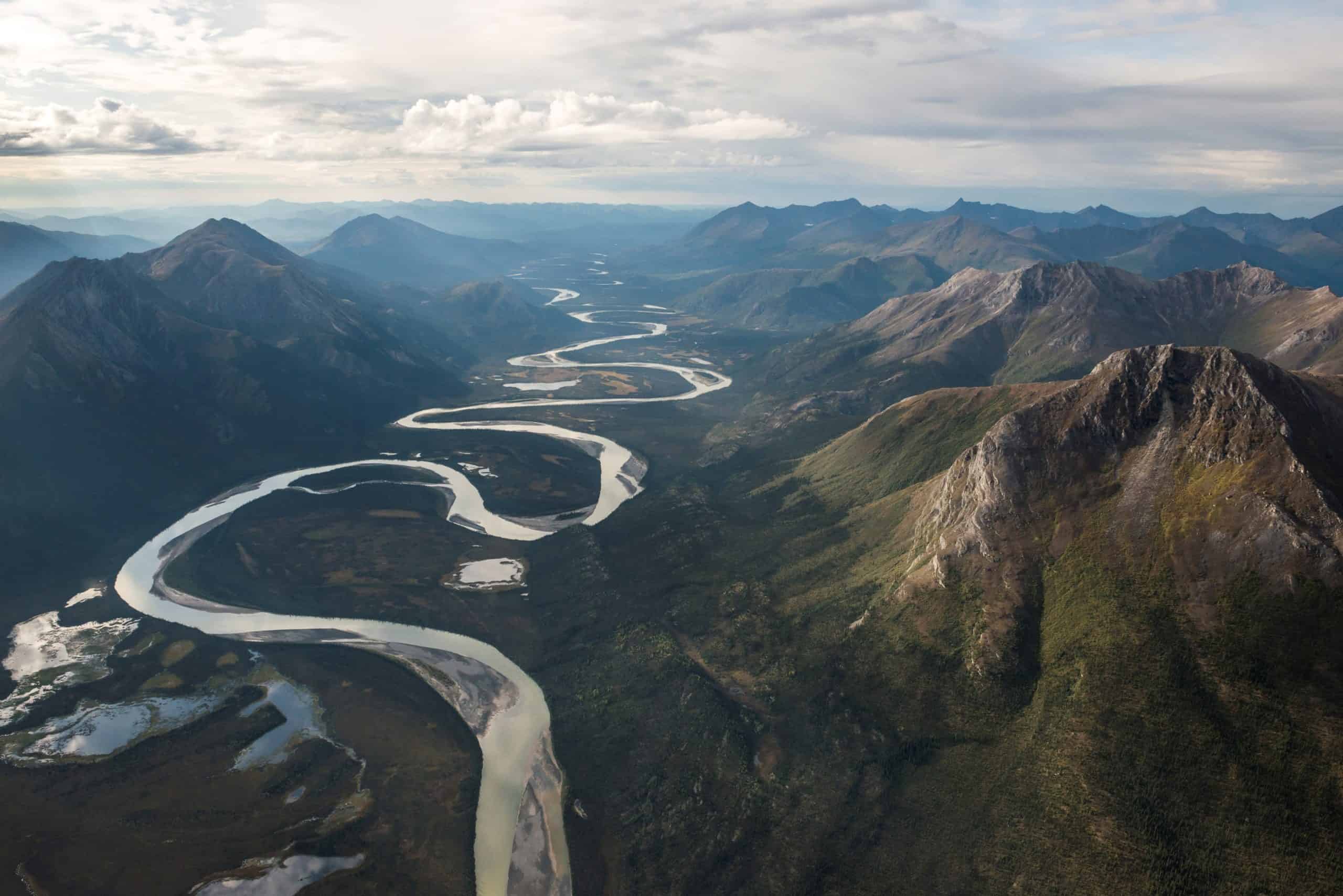
Sitting right above the Arctic Circle, the Gates of the Arctic National Park and Preserve is different from any other US national park.
Why? Because it doesn’t have any roads or trails.
Instead, when you visit the Gates of the Arctic National Park, you see how people lived before with ecosystems consisting purely of land. But that doesn’t mean that beautiful scenery is lacking; at all! Wild rivers, glacier-carved valleys, blue ridge mountains, and aurora-lit night skies are there to make the park magical.
The broad valleys and sweeping vistas are the ideal water destinations for rafting, canoeing, pack rafting, and more water activities! Paddle through them for a blend of wild and scenic landscapes, and watch fish species like grayling, chum salmon, and more!
And you can always hike through the Gates of the Arctic National Park – access begins in Fairbanks, Alaska! But watch out for grizzly bears, muskox, caribou, moose, and Dall sheep.
Get Google Maps directions here!
Gateway Arch National Park, Missouri
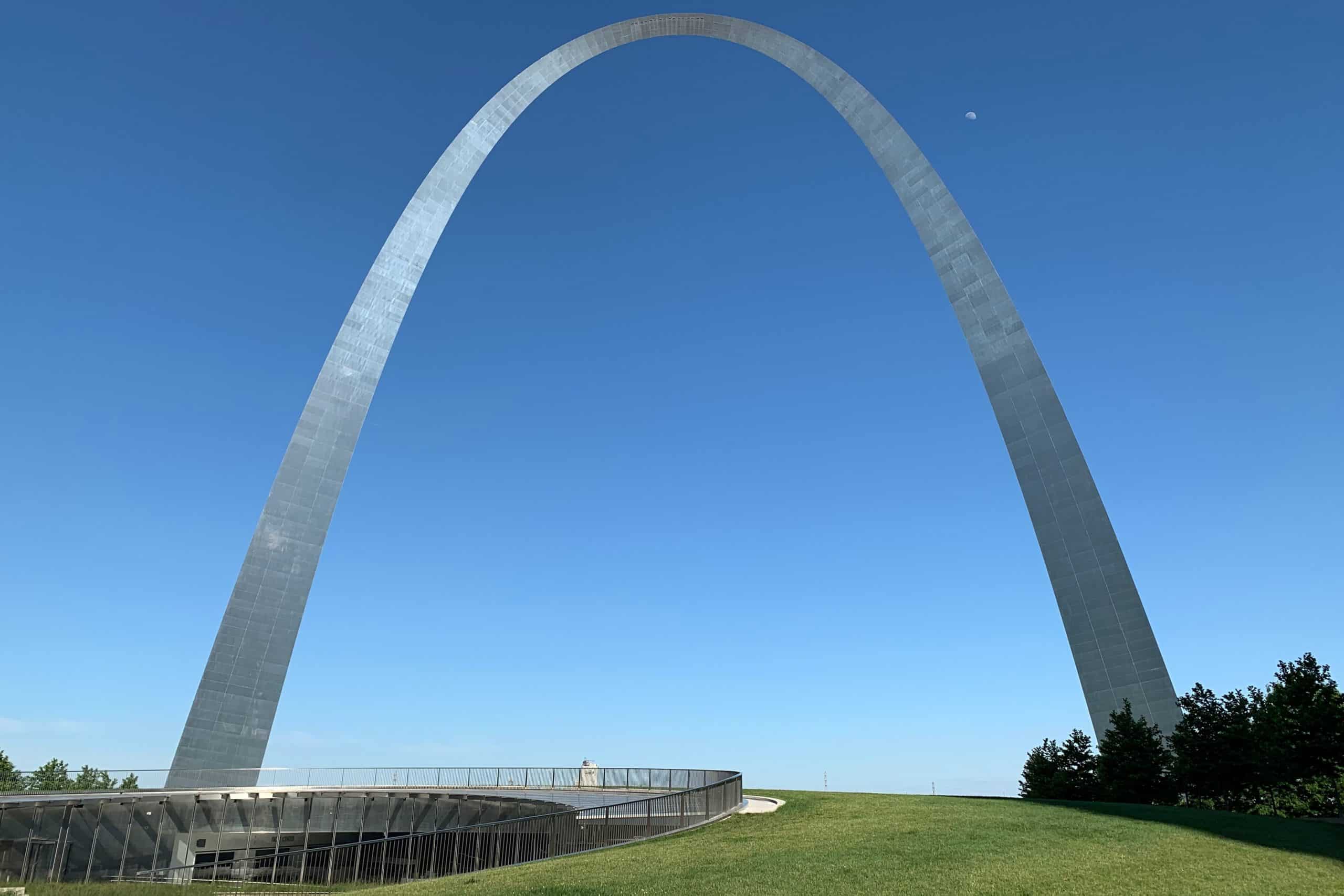
Gateway Arch National Park is one of the recent additions to the national parks list, officially introduced in 2018, mainly in memory of Thomas Jefferson’s role in the westward expansion, the pioneers shaping its history, and Dred Scott for his freedom efforts in the Old Courthouse.
Today, the park stands its position as one of the most urban parks you can encounter.
What’s unique about this park is that, for once, it’s easy to access the riverfront thanks to the presence of new Riverview pathways, giving everyone an equal opportunity to reflect on the park’s nature and landscape.
Speaking of landscapes, it’s a mid-century modern one complemented by pedestrian lanes and bike paths everywhere around the park.
Undoubtedly, 16 historical panels are dedicated to the events, places, and people that shaped the westward expansion, including a French colonial village, a riverfront metropolis, and the infamous Arch building.
The absolute eye-catching of all, in our opinion, is the Old Courthouse!
Get Google Maps directions here!
Glacier Bay National Park and Preserve, Alaska
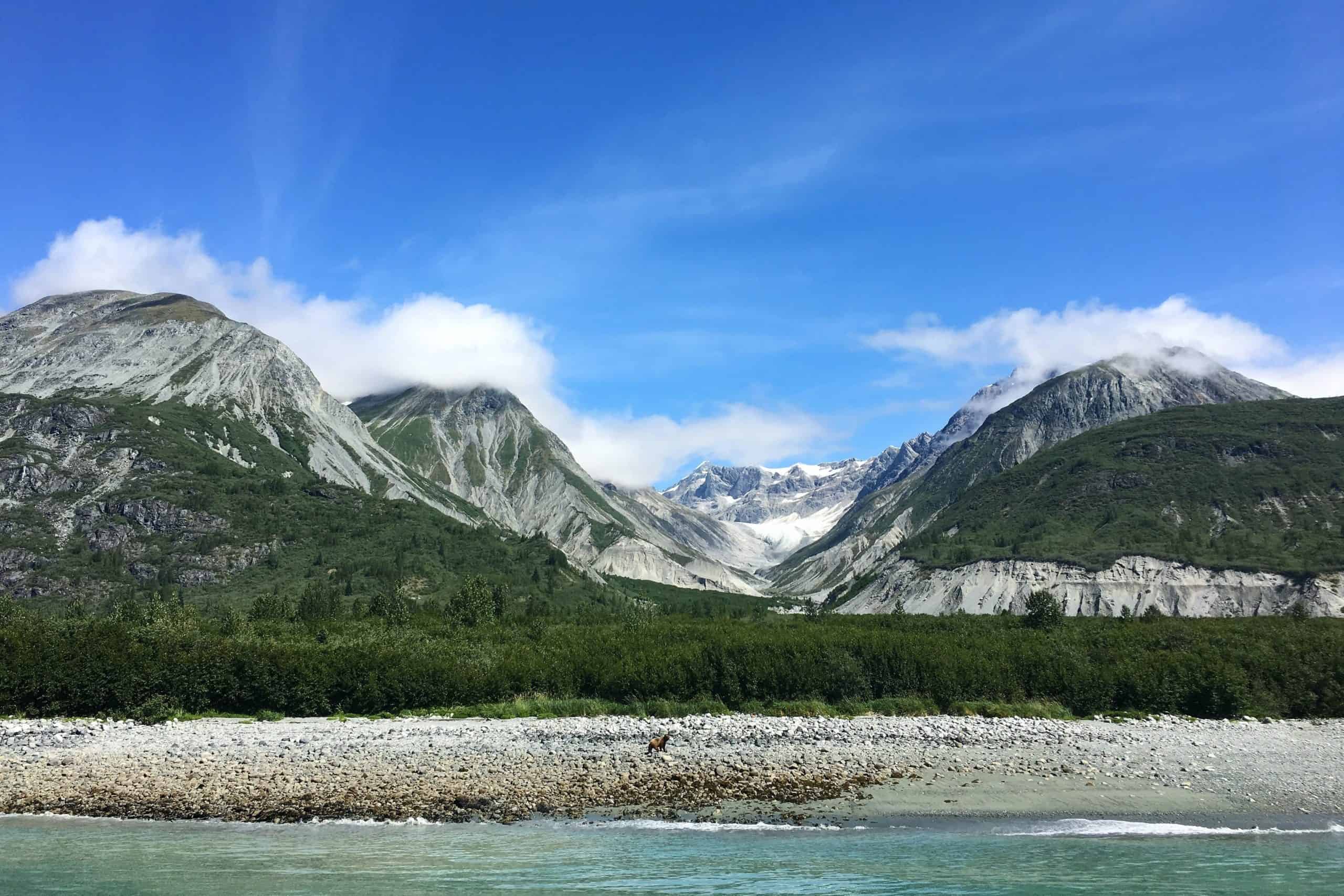
Embracing a uniquely dynamic ecosystem, Glacier Bay National Park and Preserve has some of the most breathtaking tidewater glaciers, snow-capped mountains, temperate rainforests, deep sheltered fjords, and so much more.
The park is part of a 25-million acres World Heritage Site (Alaska’s Inside Passage), and when you see it, you’ll know why. Mostly, the park can only be accessed through either plane or boat, with most visitors entering via cruise ships.
Once you do, I highly recommend you book a seat on Baranof Wind, a cruise ship offering daily excursions for sightseeing through Glacier Bay National Park and Preserve. The itinerary is comprehensive and highlights the ecosystem’s key components.
Keep an eye out in case it’s your lucky day for a chance to see a grizzly bear, gliding porpoise, steller sea lion, and humpback whale.
If you don’t see them with your naked eye, you’re guaranteed to hear their hard-to-ignore assortment of sounds that’ll leave you guessing.
Get Google Maps directions here!
Glacier National Park, Montana
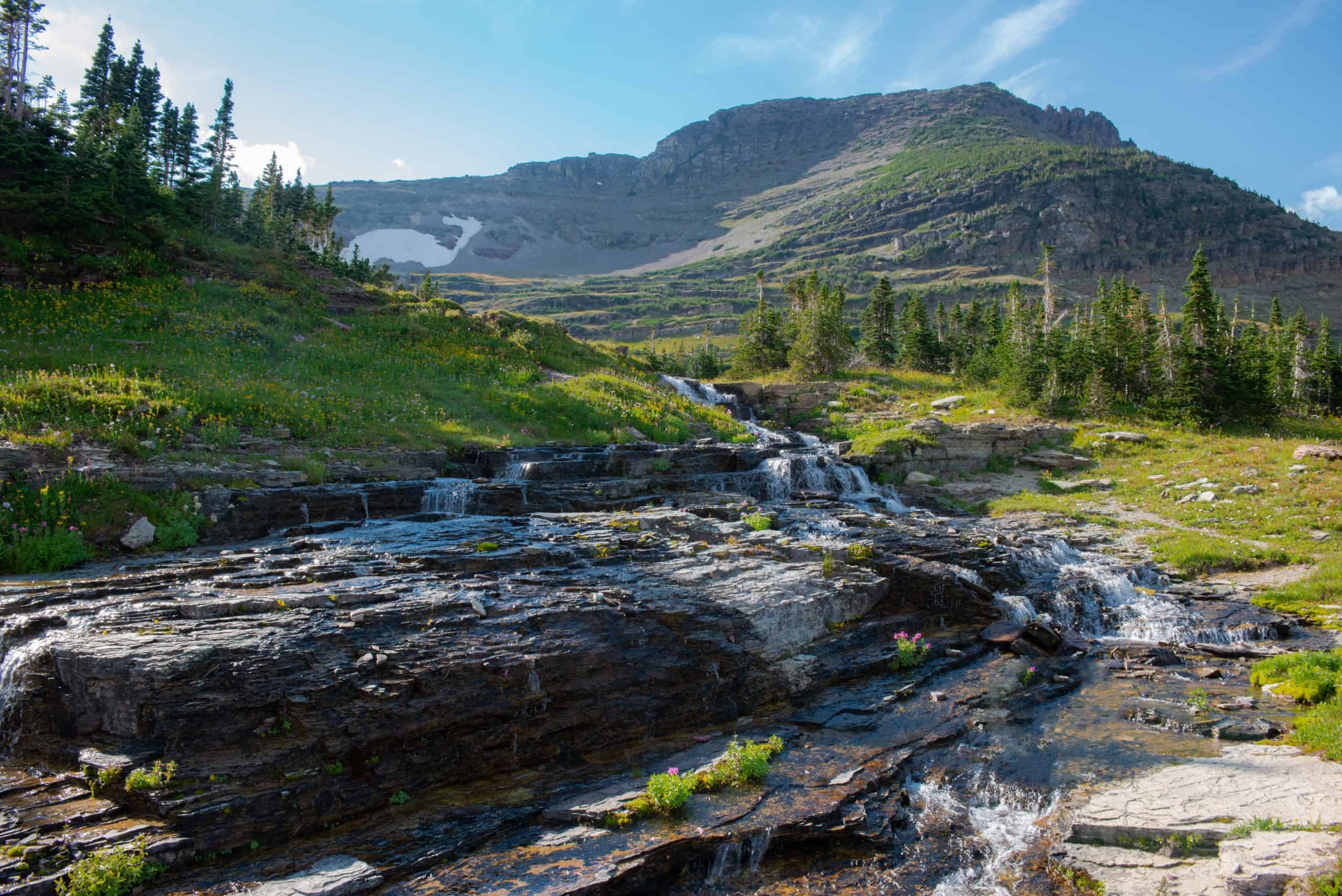
Named after the residues of glaciers from the ice age, Glacier National Park is the go-to for wilderness and sightseeing.
Since it boasts more than a million acres of terrain, including glacial-carved mountain peaks, naturally cascading waterfalls, and scenic mountain roads, it’s known as the “Crown of the Continent”.
Given the situation of global warming and climate change, there’s no better time to visit Glacier National Park before it loses the ice that makes it distinct.
The highlight of your visit should be the Going-to-the-Sun Road, spanning the width of the park. Since it passes through the majority of the park’s terrain types, you won’t miss out if it’s the only road you pass by.
If you have time, one of the shortest but worthwhile hikes to do at Glacier National Park is the Hidden Lake Overlook!
Not only will you enjoy spectacular views, but you’ll see wildlife animals like grizzly bears, black bears, mountain goats, badgers, wolverines, and much more!
Get Google Maps directions here!
Grand Canyon National Park, Arizona
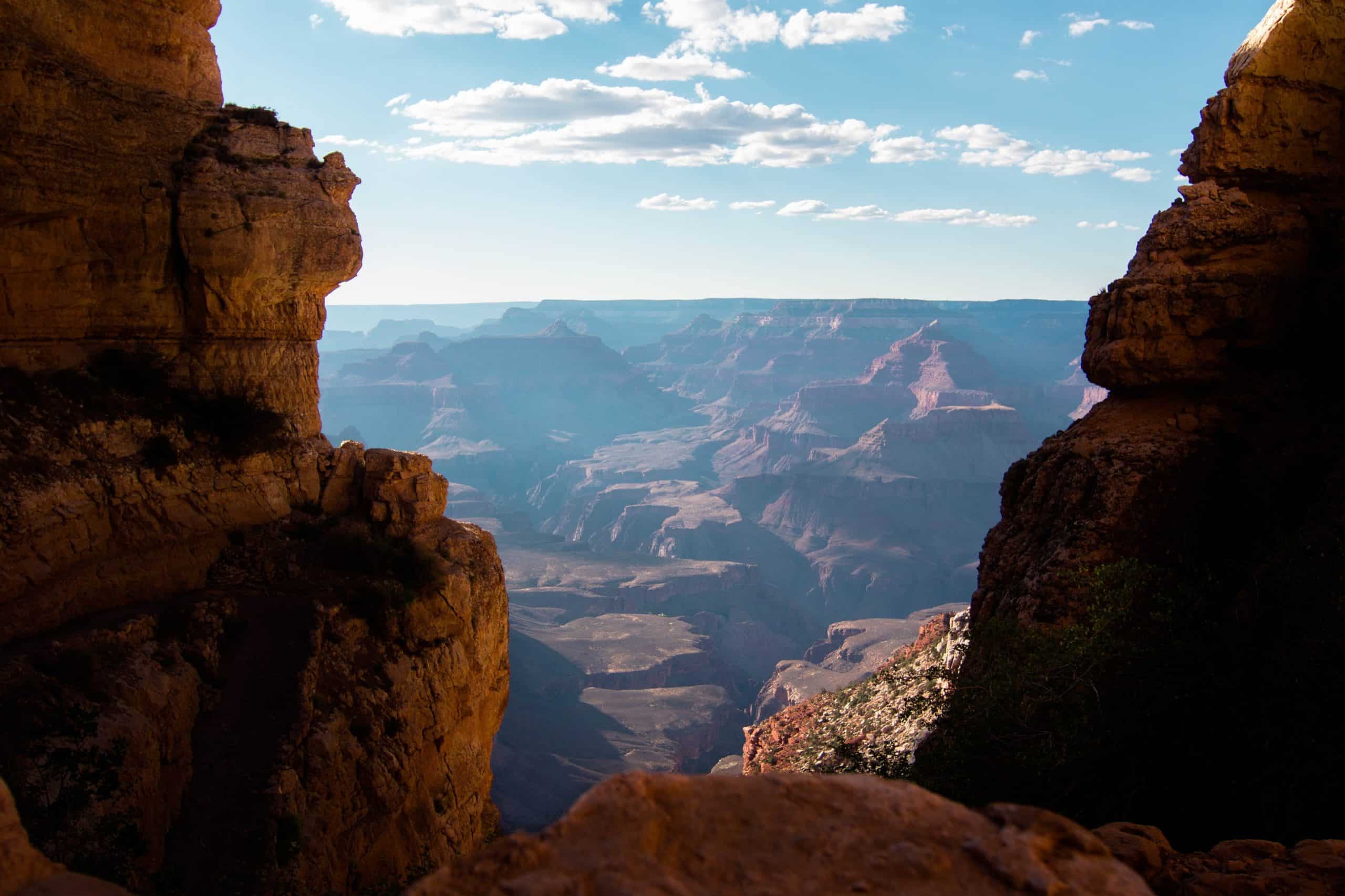
A UNESCO World Heritage Site, Grand Canyon National Park indeed speaks history on so many levels, starting with its layered bands of red rocks to its broadened views of the canyon.
Other than the chance to lay eyes on the breathtaking views, the activities to do at Grand Canyon National Park are sky high!
If you’re a hiker, the Grand Canyon Rim-to-Rim Hike is an unforgettable adventure.
And indeed, an endeavor worth the wait is the extended kayak or river rafting trip on the 277-mile Colorado River to explore hidden gems of Grand Canyon National Park that you can only access by the river of Colorado, including hidden waterfalls and side canyons.
Plus, you can watch the sunrise through canyon walls in a movie-like encounter!
While the South Rim tends to be the star of the show, consider visiting the North Rim for relaxation time and photograph with as little commercialism and crowds as possible, unlike the South Rim.
Get Google Maps directions here!
Grand Teton National Park, Wyoming
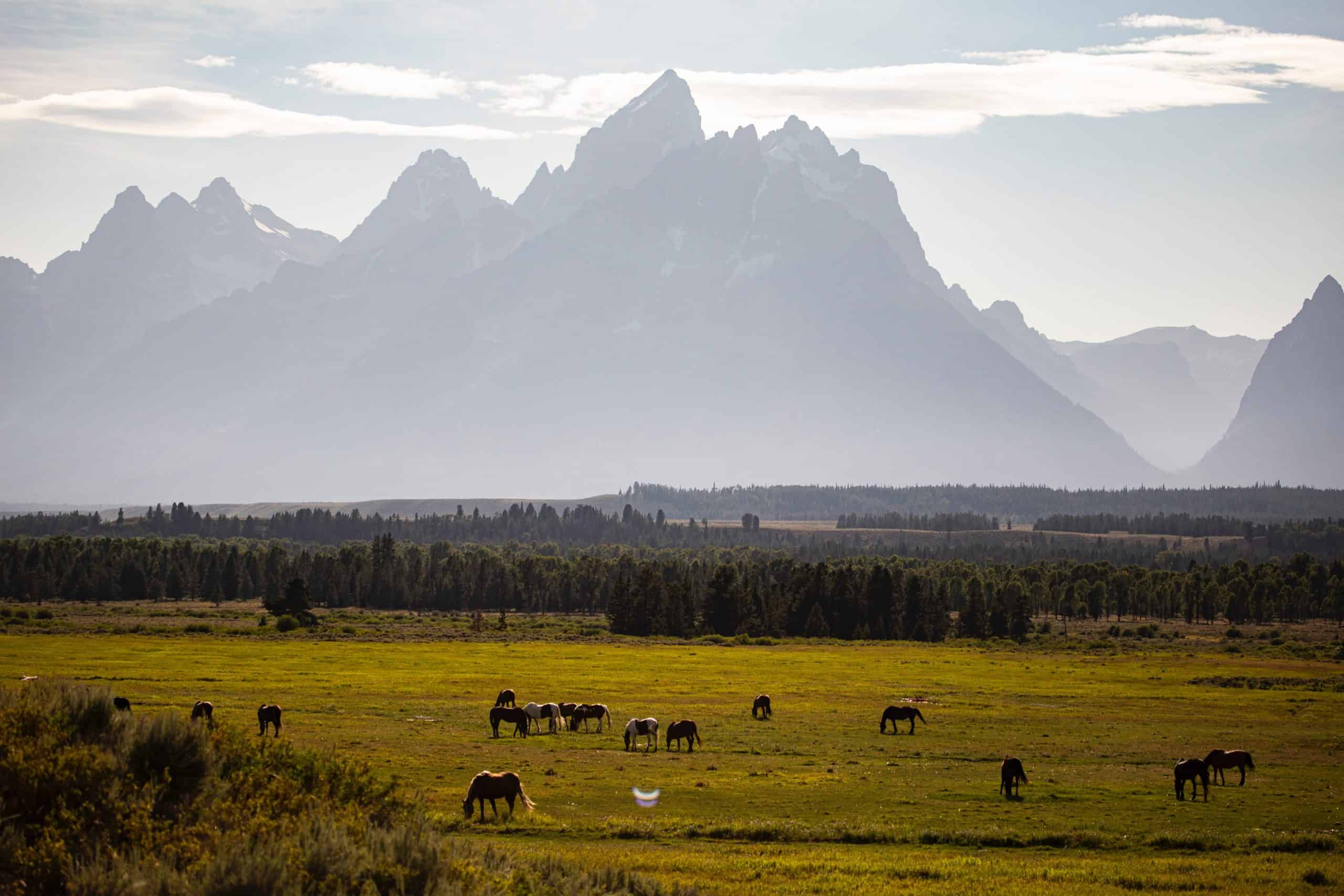
For the ultimate hiking experience in a national park, look no further than Grand Teton National Park in Wyoming. While it certainly has incredibly scenic drives, its trails are where it shines.
With over 200 miles of trails, it won’t be the slightest bit difficult to choose a spot to hike at!
There’s a trail for everyone. Reach the heart of the Teton Range through a hike into Garnet Canyon or the Grand View Point, explore the Snake River through hiking the Flagg Canyon, and get a glimpse of wildflowers by hiking around the Emma Matilda Lake.
Photographers will also have to dedicate time to portray the natural beauty of the Grand Teton National Park. Being a national park with a rich history and many cultural attractions, including homesteads and cattle ranches, there are endless “wow” views to capture.
For the epitome of sceneries, take a boat trip to Jenny Lake!
Get Google Maps directions here!
Great Basin National Park, Nevada
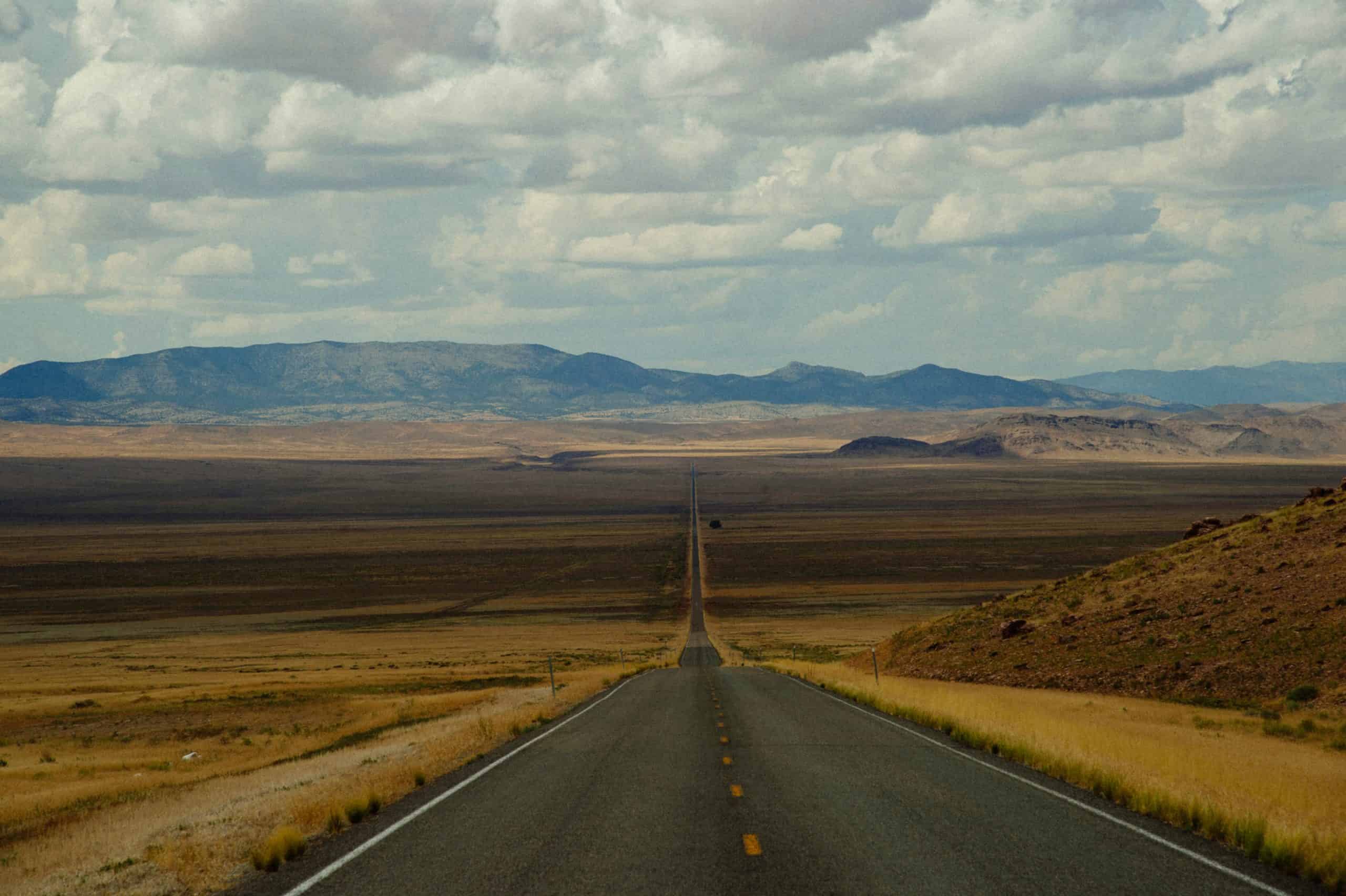
Contrary to popular belief, the Great Basin National Park is more than just a desert in Nevada. In fact, this is one of the most diverse US national parks with a lot of discoveries waiting to be stumbled into.
First things first, you can’t visit Great Basin National Park without checking out the ancient bristlecone pines. One of them is Pinus longaeva, the long-living species that are utterly resilient to the weather and deficient soils. They’ve been alive for more than 5,000 years!
Then, another fascinating can’t-miss is the limestone Lehman Caves, full of wildflowers, stalactites, cave shields, marble, expansive rooms, and over 300 rare shield formations.
Because a scenic drive is inevitable, please take my word for it and take the Wheeler Peak Scenic Drive to see the Nevada mountains of the South Snake Range, sagebrush oceans, and the rugged desert!
Get Google Maps directions here!
Great Sand Dunes National Park and Preserve, Colorado
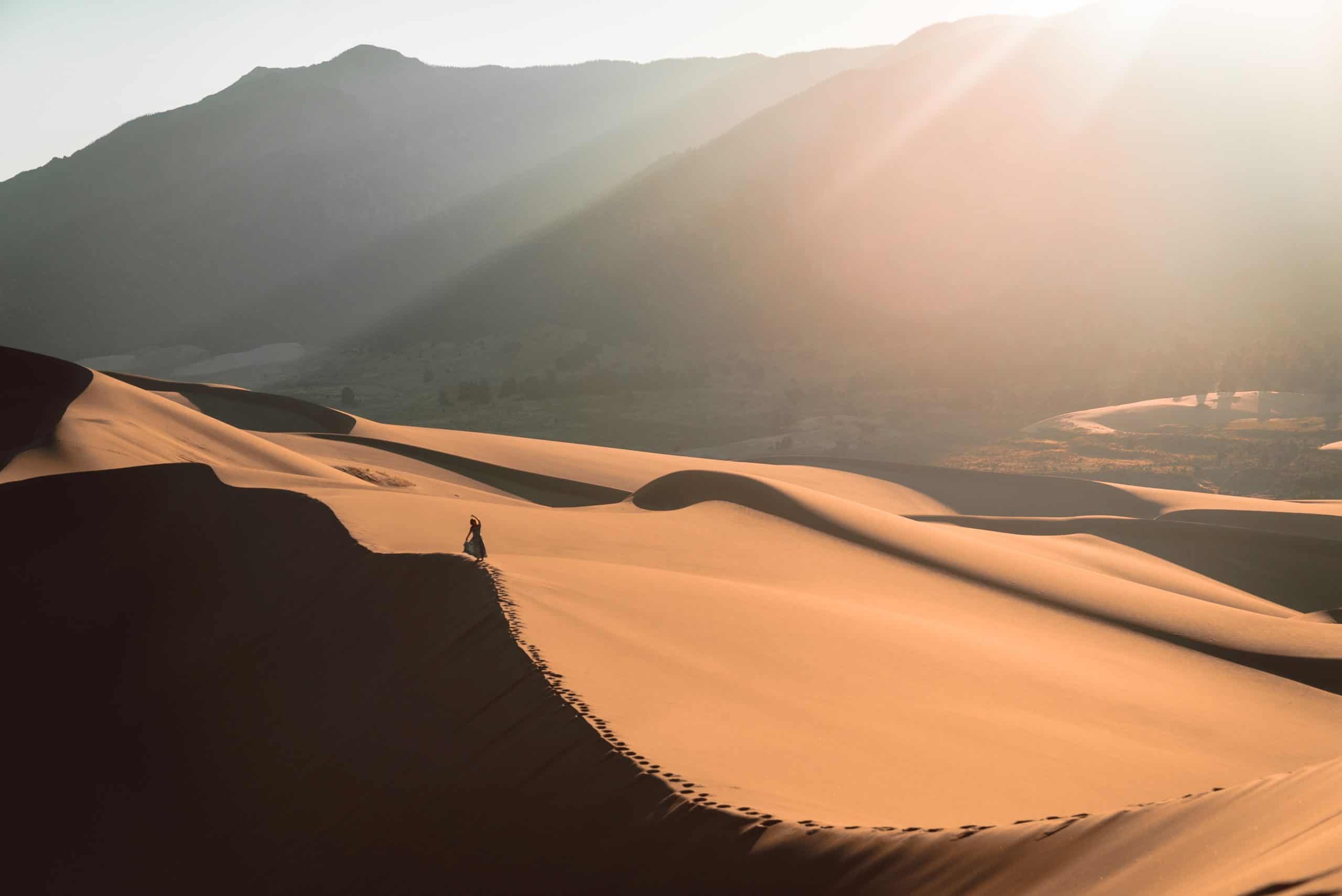
The Great Sand Dunes National Park and Preserve provides an epic scenery with diversity in every corner, combining massive dunes, forests, wetlands, alpine lakes, grasslands, and beyond.
For starters, the Great Sand Dunes National Park is known for its vast sand dunes, including The Star Dune, the tallest in North America at 229 meters. Moreover, it also incorporates Colorado’s distinctive beaches, Medano Creek. But be aware, it’s a seasonal one that sometimes dries up.
As for the backcountry, the Medano Pass Primitive Road brings together the Great Sand Dunes with the Wet Mountain Valley, intersecting with deep sand areas and passing by trails leading to forests and wetlands trout and tundra wildlife.
While not many people know how to enjoy the sand, one of the best ways is to climb to the peak of one of the dunes! And if you’re a lucky summer visitor, it’s possible to rent sleds and slide down on the dunes for some great fun.
Get Google Maps directions here!
Great Smoky Mountains National Park, Tennessee
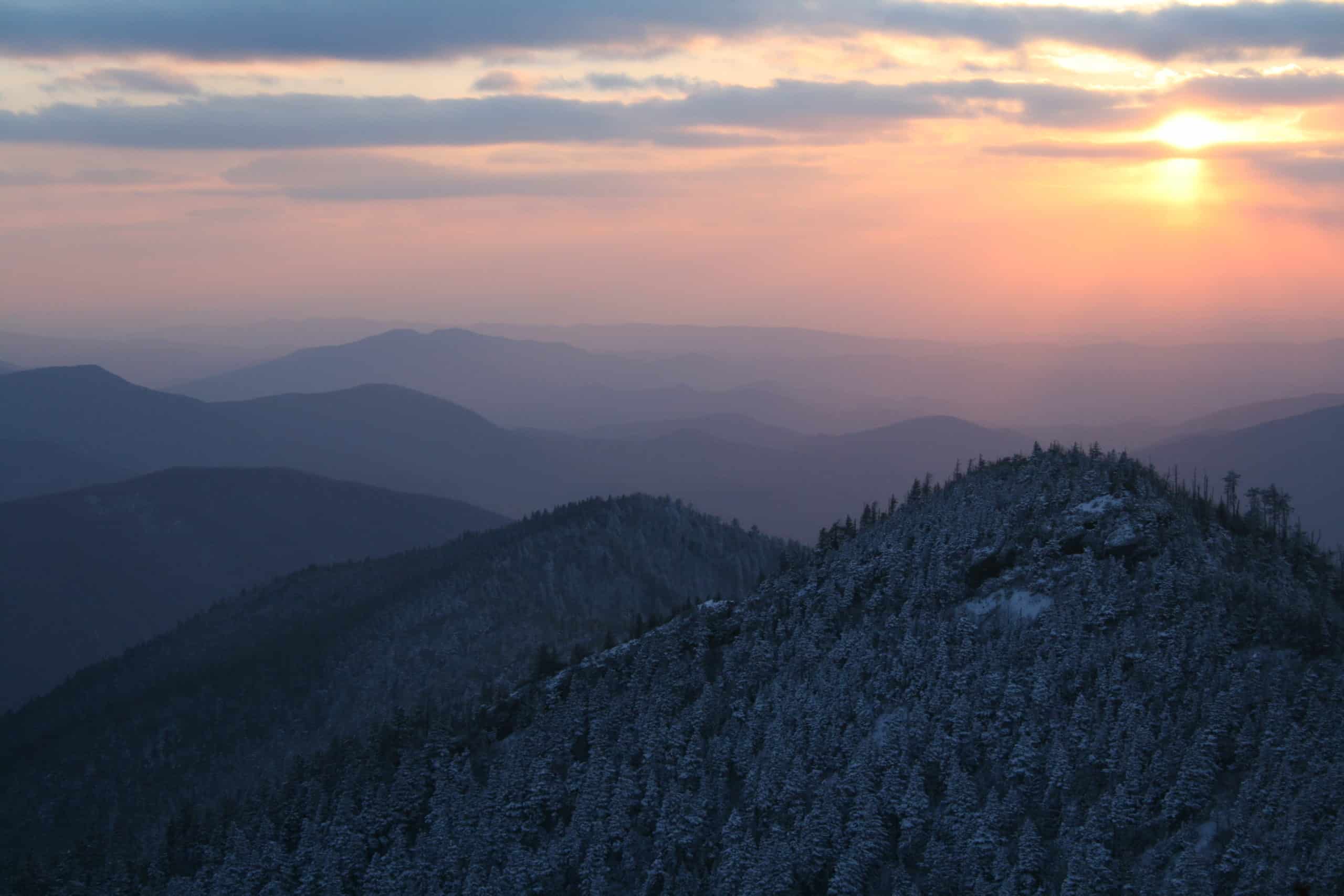
Straddling the border between North Carolina and Tennessee, Great Smoky Mountains National Park is among the most-visited US national parks for its lush forests, wildlife viewing, and miles of hiking trails.
Speaking of hiking, the Great Smoky Mountains National Park includes a portion of the Appalachian Trail, the longest hiking-only footpath worldwide.
That’s not the only unique aspect of the Great Smoky Mountains park – at its highest point, the highest in Tennessee, it boasts an observation tower on the summit of Clingmans Dome for unparalleled 360° scenic views.
And for more panoramic views, take a drive down Cades Cove and watch white-tailed deer, coyotes, groundhogs, raccoons, and more animals in their natural habitat backed by a picturesque backdrop of mountain peaks.
Back to the lushing forests, all seasons are wildflower season at the Great Smoky Mountains National Park! You’ll see wildflowers in bloom complemented by flowy rivers and waterfalls, giving off a breezy spray to indulge you in nature’s beauty.
Get Google Maps directions here!
Guadalupe Mountains National Park, Texas
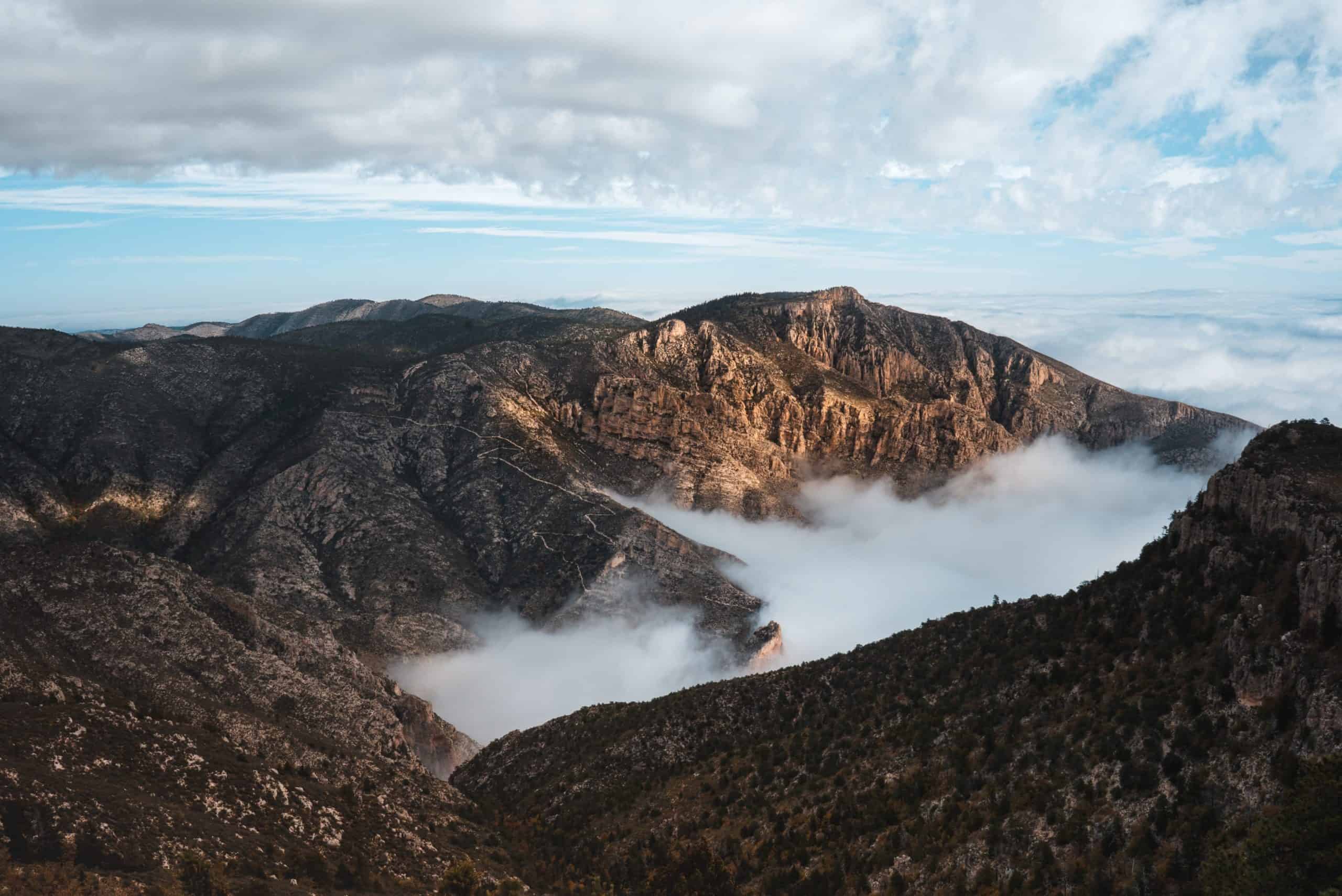
A mountain range that includes the Guadalupe Peak, which is the highest point in Texas, the Guadalupe Mountains National Park is another dazzling park, or mountain range, with three ecosystems all in one and also home to four of the tallest mountains in Texas.
In the Chihuahuan Desert, bushes, mesquite, and salt flats occupy the scene, along with low elevations of grassland and junipers.
As for the canyon’s interiors, which encompass McKittrick, Pine Springs Canyon, and Bear, you see beautiful mountain streams and unique trees like bigtooth maple, velvet ash, and chinkapin oak.
Lastly, the alpine areas are all about forests, including southwestern white pine, ponderosa pine, alligator juniper, and more.
The mountain ranges also house several large cave systems, the most famous being Lechuguilla Cave and Carlsbad Caverns. Make sure to hike Guadalupe Peak Trail, too!
If you make it to the Guadalupe Mountains National Park at night, take a look at the stellar night skies while you’re there!
Get Google Maps directions here!
Haleakala National Park, Hawaii
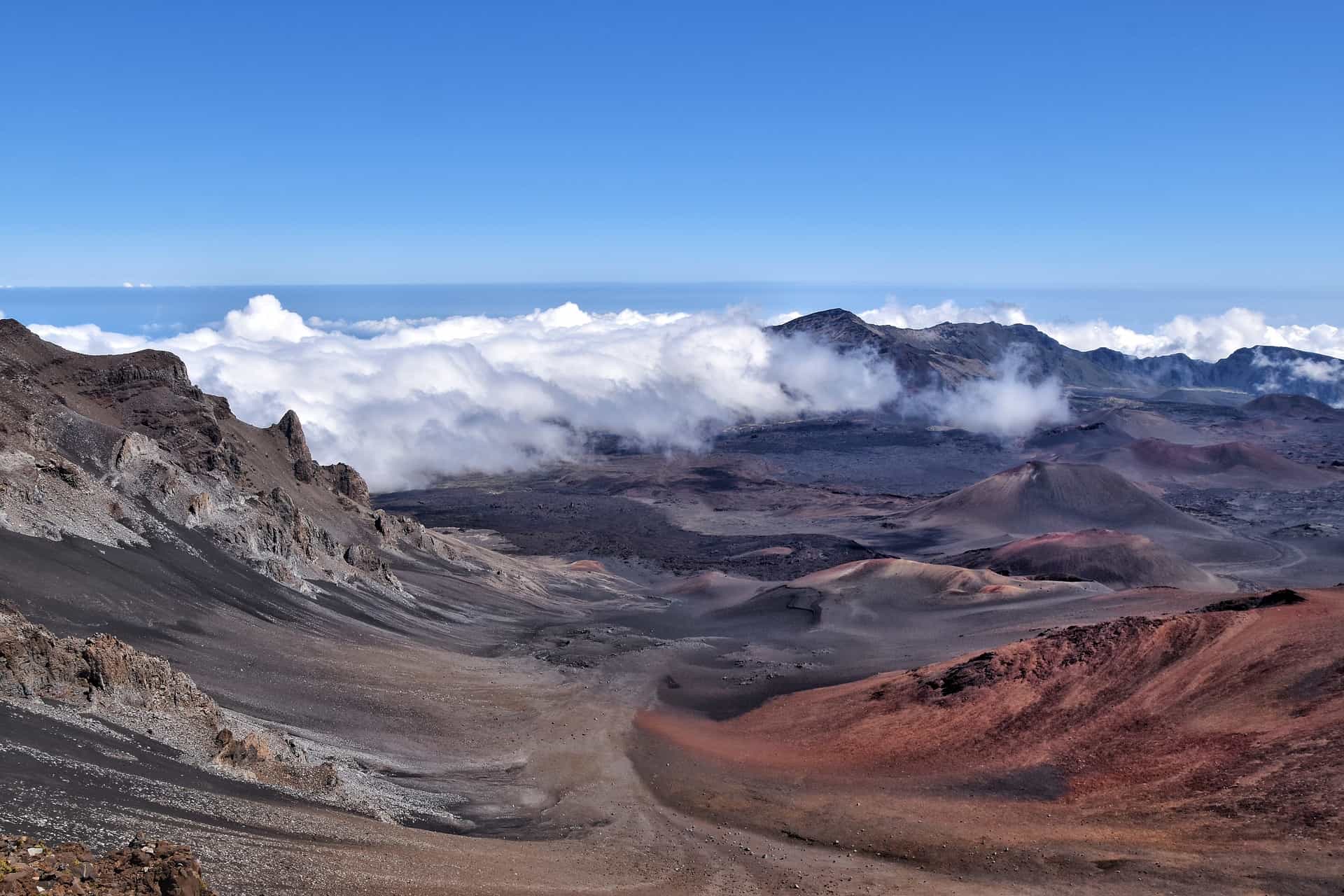
Literally translating into “House of the Sun” in Hawaiian, Haleakala National Park contains a dormant shield volcano, Haleakala, including one of the largest volcanic craters.
Besides being a national park, it’s also a vibrant historical area telling the stories of both ancient and modern Hawaiian culture, and in a way, keeping the bond between land and people alive.
Astonishingly, while the park essentially contains a dormant volcano, it somehow manages to contain the other end of the spectrum; cascading waterfalls, swimming holes, and rocky shorelines near the Pacific Ocean! There, the waterfalls are genuinely a source of endless fascination, surrounded by rare endemic plants adding to the beauty.
For the sake of unforgettable memory-making, make a reservation to watch the sunrise at the summit of Haleakala, but since that’s a common attraction, make sure to book early!
Also, drive to the peak of the Haleakala Crater to see five different ecological zones guaranteed to astonish you!
Get Google Maps directions here!
Hawaii Volcanoes National Park, Hawaii
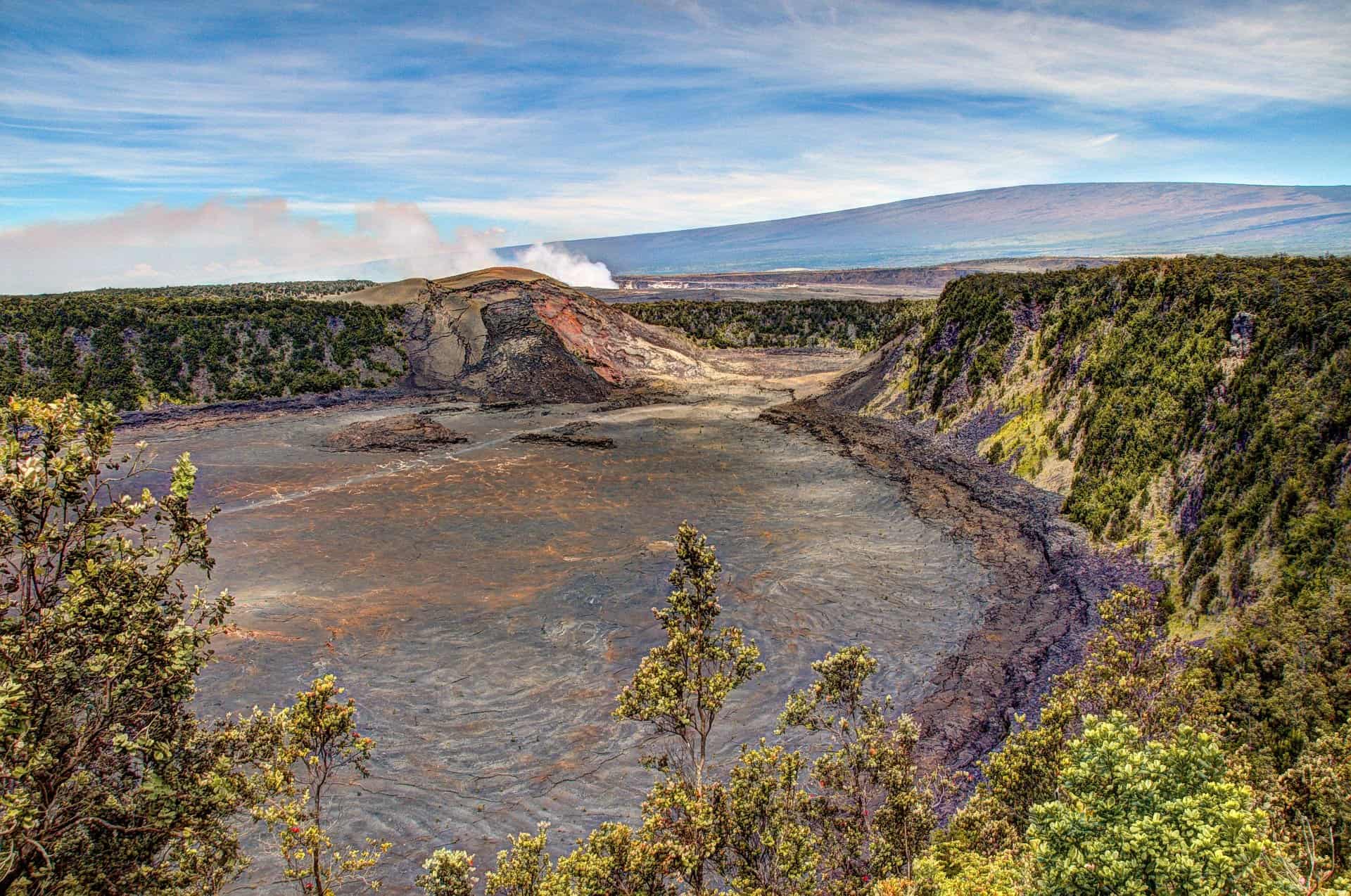
As indicated by its names, Hawaii Volcanoes National Park or The Big Island, the park contains the two most active volcanoes, Kīlauea and Mauna Loa. Impressively, the Kīlauea volcano has been uninterruptedly erupting since 1983, and Mauna Loa is the world’s most massive shield volcano.
The Hawaii Volcanoes National Park park is one of the most incredible, offering incomparable volcanic landscapes. It’s phenomenal how life continues to stem across lava flows and lava beds amid that eruption!
Expect to see ferns, lush plants, and rare flora and fauna as you take scenic drives – the Crater Rim Drive and Chain of Craters Road are an excellent place to start, taking you around Kīlauea. And to “touch base” with the volcanic terrain, a short hike will do!
If you’re worried, there’s always the option of a helicopter flight over the park to lay your eyes on lava flows and watch the scenery while keeping a distance!
Get Google Maps directions here!
Hot Springs National Park, Arkansas
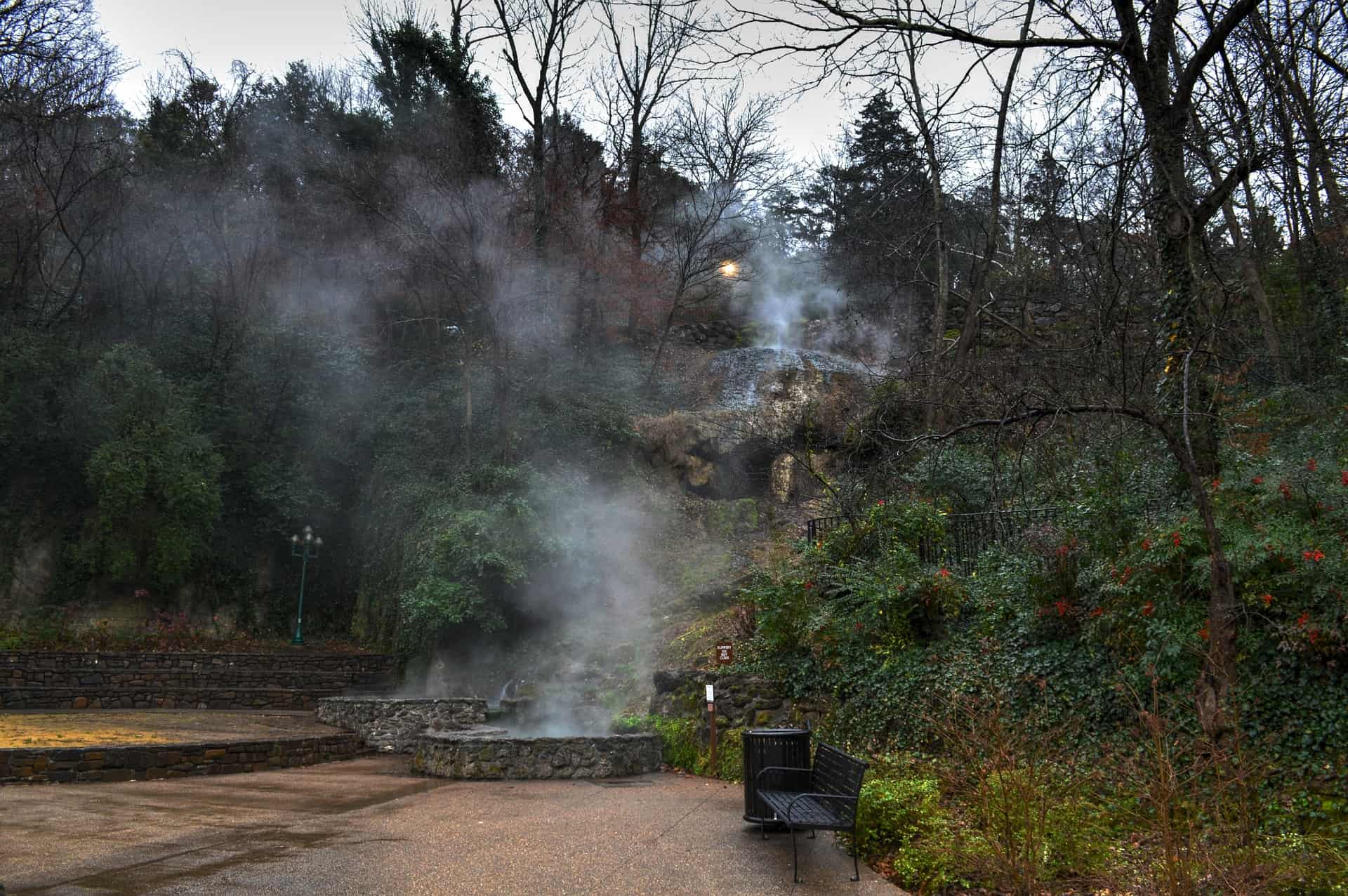
Celebrating its 100th anniversary in 2021, Hot Springs National Park is one of the oldest national parks in the United States (there’s an ongoing debate on whether it’s the oldest or if Yellowstone precedes it!). Known for its 47 thermal springs, the park is a place to heal – be that worries or even, sometimes, diseases.
Since Hot Springs National Park is located in central Garland County, it’s not hard to understand why it’s the smallest national park. Still, the park encompasses three thermal baths heated at 143°F.
Visit Bathhouse Row for bathhouses, gardens, and buildings for a truly relaxing experience. If you want, book a spot to bathe in the waters long considered to be “healing” – with claims that they’ve helped heal patients with skin diseases and arthritis.
On the park’s outskirts, there are some 30 miles of hiking trails offering scenic views of mountains, forests, wildlife sightings, and thermal springs.
I recommend the West Mountain Trails!
Get Google Maps directions here!
Indiana Dunes National Park, Indiana
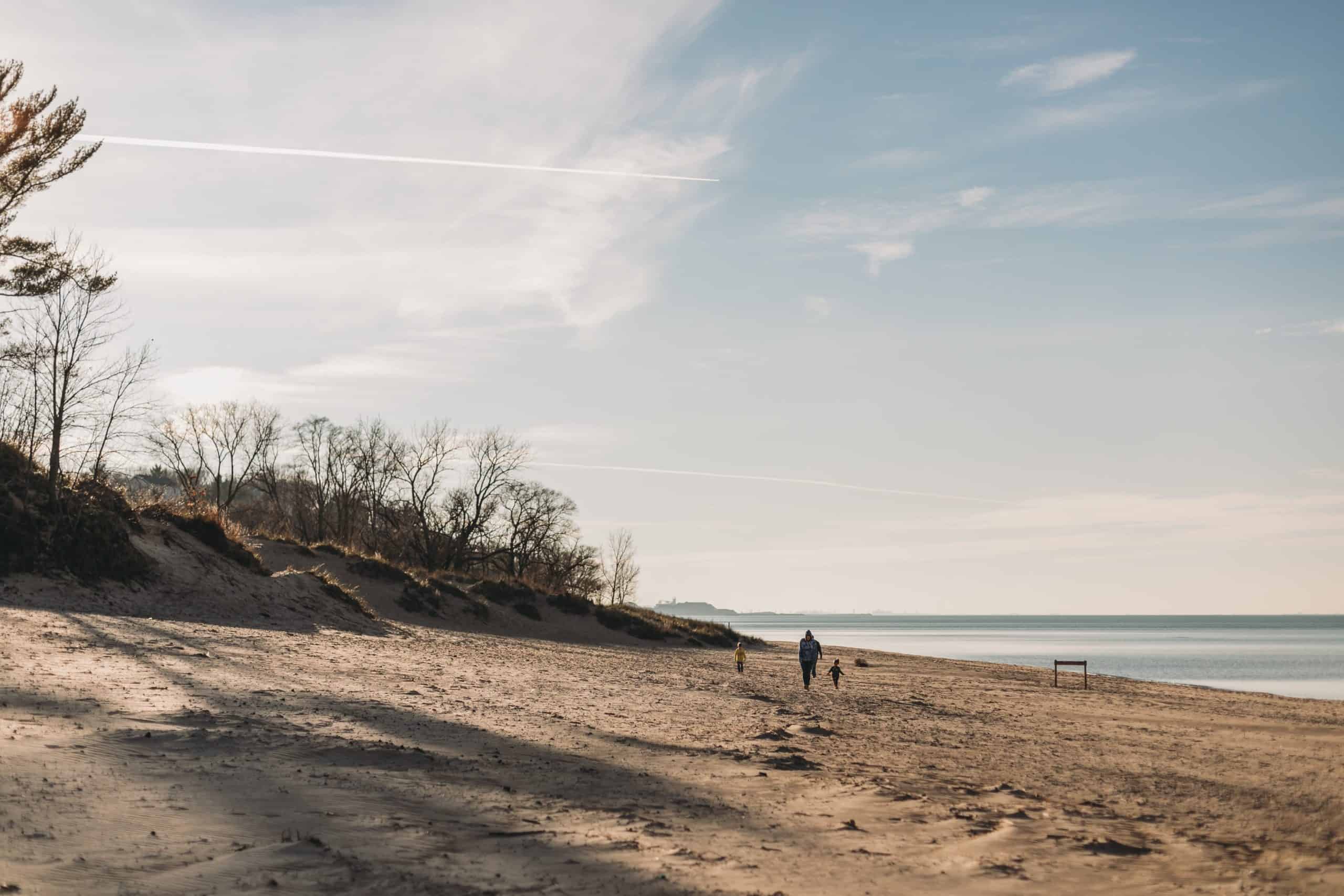
Many people aren’t aware of the existence of the Indiana Dunes National Park, mainly because it’s one of the relatively new ones – it was the 61st national park.
Indiana Dunes was a national lakeshore until early 2019, which explains why it’s an urban park.
If I were to describe Indiana Dunes National Park in one word, it would be “enchanting”.
Since 15 miles of Lake Michigan’s southern shore intersect with the park, summer vibes are hard to miss.
With people bird scouting, kids flying kites on the park’s sandy beaches overlooking the Chicago skyline, sunny prairies, and flowy rivers, tranquillity is your only option.
For those on the move, the park enjoys 50 miles of trails for ideal hiking experiences. The rails fall over wetlands, forests, rugged dunes, sand dunes, and enormous prairies, so there’s a lot to explore!
Some popular trails include Dune Ridge, Mount Baldy, and Heron Rookery.
Indiana Dunes National Park is the perfect escape from the city!
Get Google Maps directions here!
Isle Royale National Park, Michigan
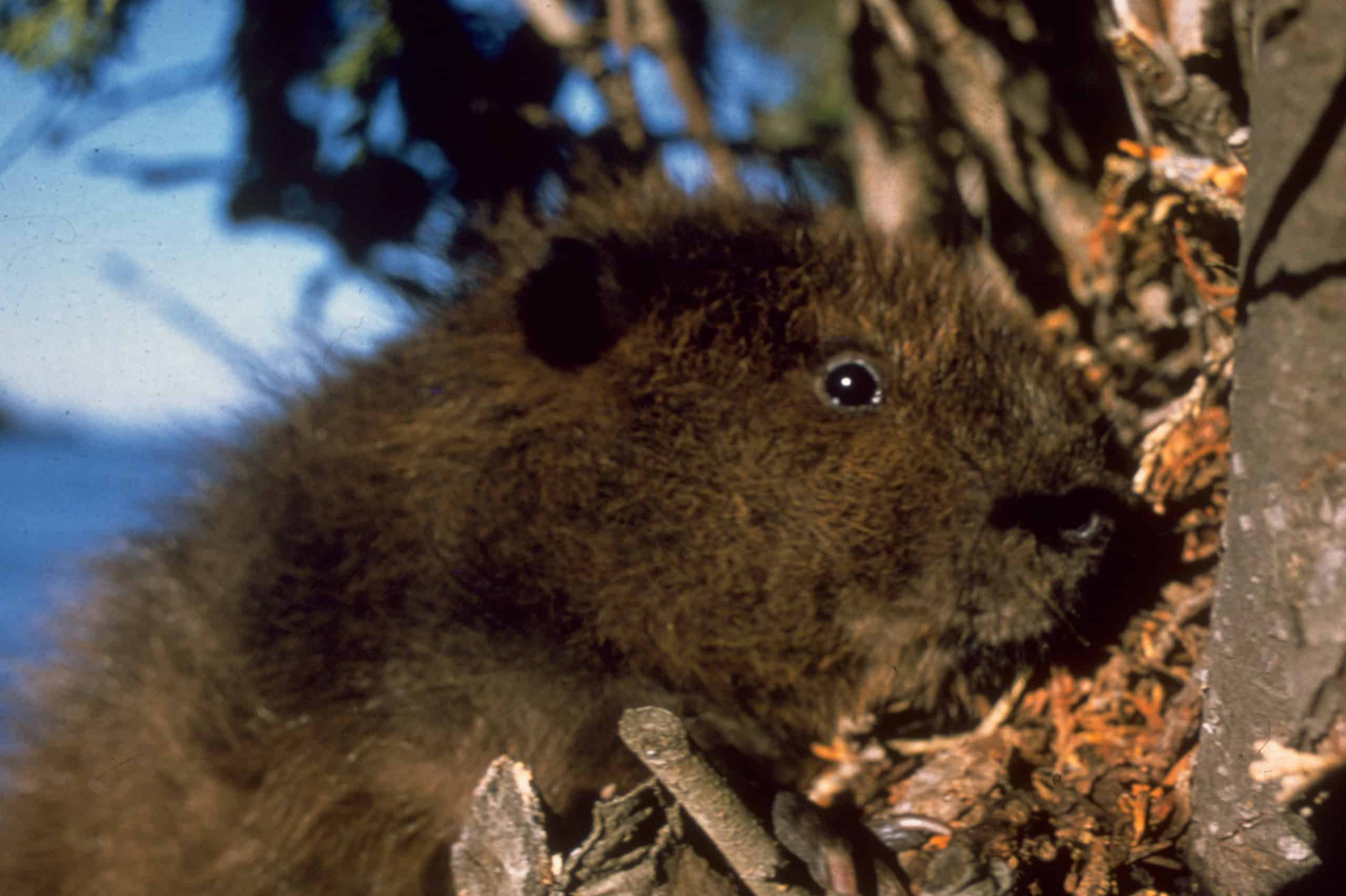
Isle Royale National Park is a remote, isolated land – far from anything and everything. Simply surrounded by Lake Superior, this is the escape for unmatchable solitude and tranquility and makes for the perfect adventure for backpackers, kayakers, scuba divers, hikers, and adventurers in general.
While the scenic beauty offers great tranquillity for those seeking it, adrenaline opportunities are there, enabling memory-making at all levels.
However, things worth having don’t come easy, which is why the Isle Royale National Park isn’t easy to access – it requires a plane or boat.
It’s also for that reason that it’s one of the least-visited national parks in the US, which is either good or bad depending on how you want your visit to be. But to be fair, ferry services are pretty common from Michigan’s upper peninsula, so it’s not impossible to reach the park! And when you do, you can always camp next to Lake Superior!
Get Google Maps directions here!
Joshua Tree National Park, California
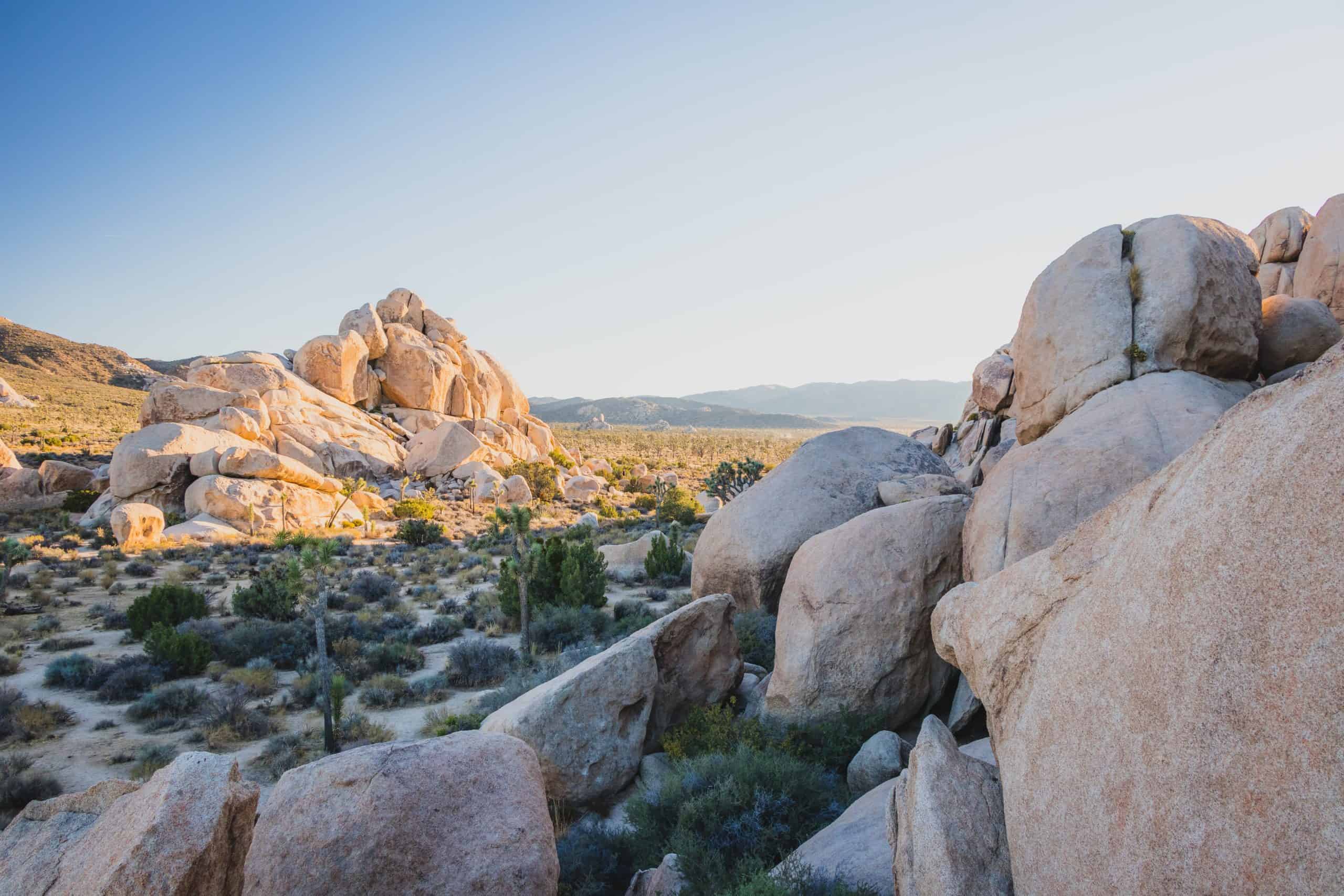
If you’re into both rock climbing and landscapes, Joshua Tree National Park should be at the top of your list.
It’s long been a major attraction for climbers and carabiners. At the same time, it’s where the Colorado and Mojave Deserts melt into one another to create a “wallpaper-like” scenery.
The Joshua Tree National Park is distinguished by its rugged rock formations, archaeological sites, and vast desert landscape, accompanied by a wide variety of animals and plants that it’s been home to for years.
You’re guaranteed to see new flora and fauna among the 700+ plant species in the Joshua Tree National Park.
Of course, that’s not to mention the infamous Joshua Trees, gigantic branching yuccas, and twisted, high-rising trees in large-scale forests.
Just like history says it, the Joshua Trees, growing for hundreds of years, do tell a story of resilience and perseverance, and you’ll feel it just by taking a single glance at them.
Get Google Maps directions here!
Katmai National Park and Preserve, Alaska
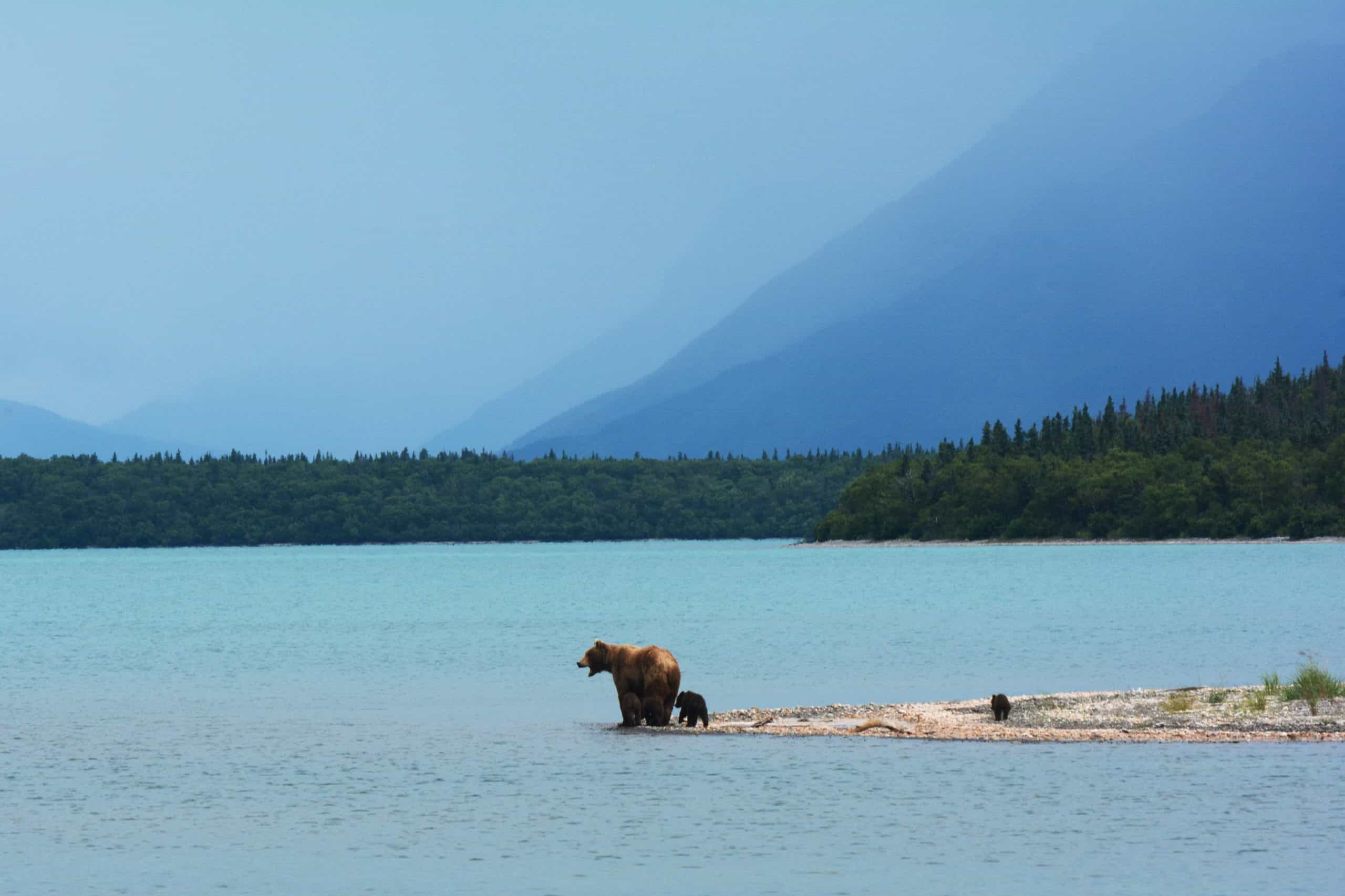
Located on a peninsula, Katmai National Park and Preserve protects the volcanically devastated area around Novarupta and the Valley of Ten Thousand Smokes, along with 9,000 years of history. On top of that, it’s now one of the crucial habitats for thousands of brown bears and salmon.
Those very bears are what attract crowds to Katmai National Park and Preserve yearly, at Brooks Camp, to be precise.
You may have noticed that before hibernation begins each year, the park launches a social media campaign called “Fat Bear Week”. Plus, a live feed on Brooks Falls is always available once the bears start to arrive and salmon swim upriver.
Other than the amusing day-to-day animal lives, the park is well-known for the Valley of Ten Thousand Smokes, where eruptions from 100 years back left a trace that’ll take your breath away. Take a scenic drive on the road leading to it, but note that it’s only accessible by shuttle bus.
Get Google Maps directions here!
Kenai Fjords National Park, Alaska
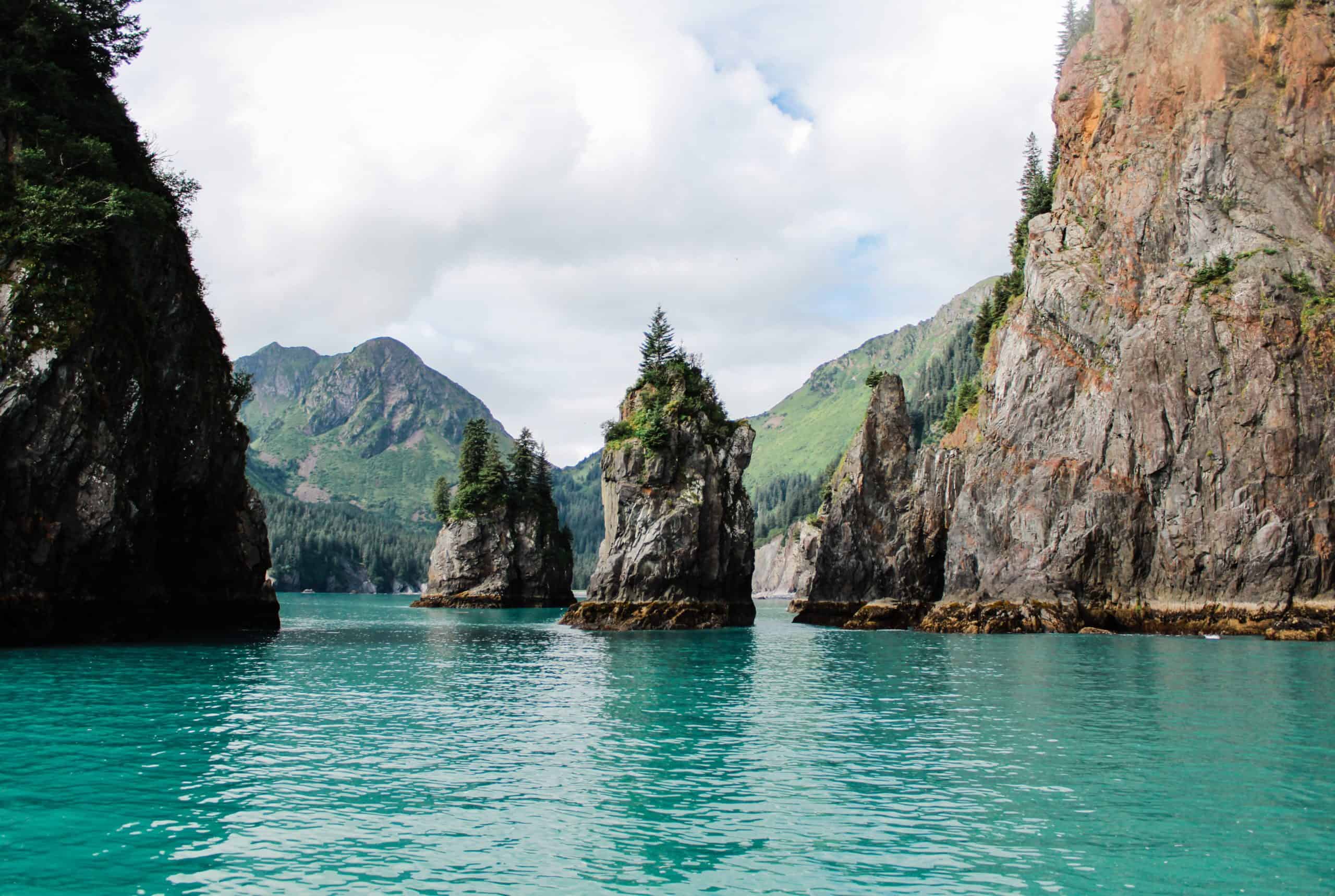
Kenai Fjords National Park lies at the Kenai Peninsula’s edge, providing a one-of-its-kind destination for ice glaciers to linger. With more than 40 glaciers flowing from the Harding Icefield, Kenai Fjords National Park serves to preserve the icefield and islands.
Flushing with marine life and magical fjords, Kenai Fjords National Park is best seen through boat trips.
Take one from Seward town’s boat harbor during the summer and count on the tour to show you all there is to see, from wildlife and fjords to scenery. If you take the trip to Fox Island, get ready for some sea kayaking and a memorable experience.
If boat trips aren’t your cup of tea, a short walk is certainly doable to Exit Glacier (the only park area that you can access by road) but get ready to be startled by the fast-moving ice and shrinking glaciers! Unfortunately, this is where you get to see the effects of global warming first-hand.
Get Google Maps directions here!
Kings Canyon National Park, California
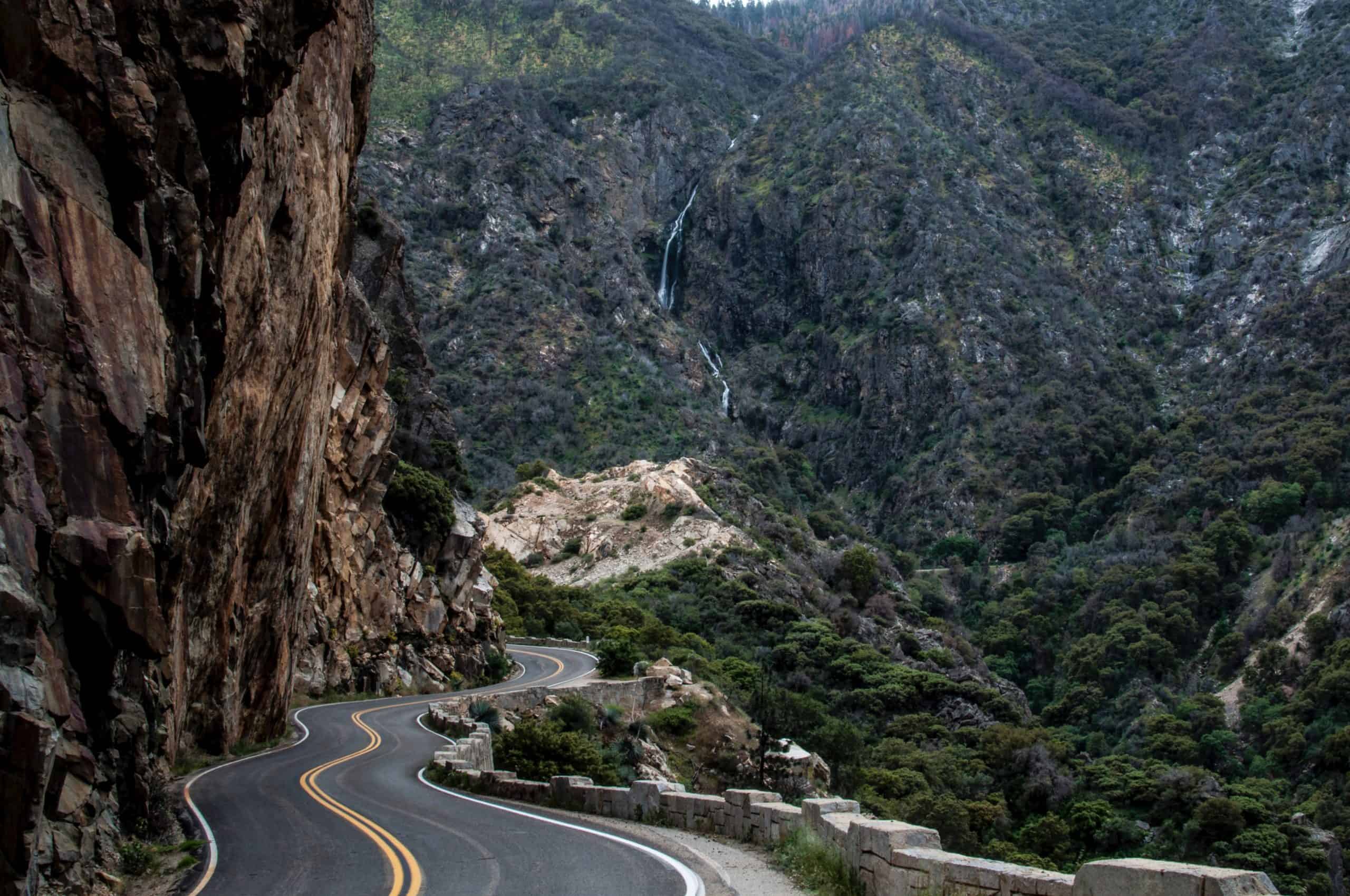
Located right next to Sequoia National Park in California and jointly managed by the National Park Service, Kings Canyon National Park is a rugged valley with a glacier-carved more than a mile deep.
What’s more, among its emphasized natural features are several 14,000-foot peaks, flowing rivers, super high mountain meadows, and of course, the largest standing sequoia trees.
That said, the majority of the park is designated wilderness, so if you’re planning to get to its backcountry or high country, you’d need to do so overnight.
For the ultimate scenic drive, go for the Kings Canyon Scenic Byway to traverse some spectacular miles leading to the actual Kings Canyon, the deepest in North America. Plus, make a point to see the General Grant Tree, known as the “Nation’s Christmas Tree”, since it’s the second-largest in the world!
Before you go, if you’re into horseback riding, Grant Grove Stables are a can’t-miss for guided horseback rides through the forests!
Get Google Maps directions here!
Kobuk Valley National Park, Alaska
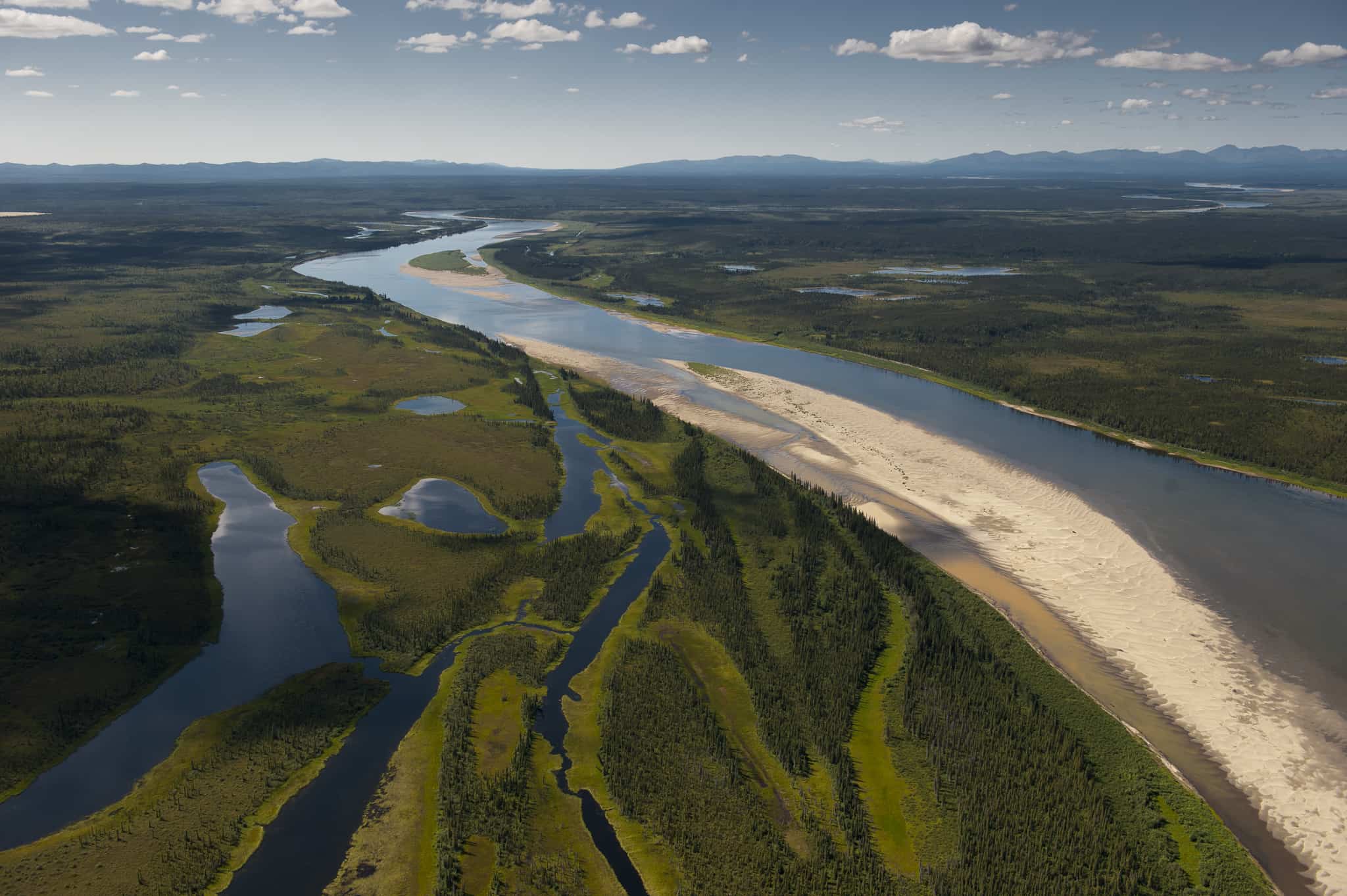
Interesting fact: for more than 9,000 years, people resorted to Onion Portage in Kobuk Valley National Park to harvest caribou while enjoying swimming. That tradition is still ongoing.
To date, more than half a million caribou migrate through Onion Portage, and the scenery of their migration during the fall has caught the attention of numerous photographers.
Because so many people depend on Kobuk Valley National Park, including Native Alaskans and caribous, it’s seen as a somewhat functional national park rather than a recreational one.
However, I beg to differ, despite that there aren’t any developed facilities in the park. Camping overnight in the midst of the sand dunes is a recreational adventure that’s hard to forget, especially if it clashes with the annual caribou migration!
Plus, remote backcountry acres leave plenty of room for adventures – from hiking, backpacking, and fishing to wildlife watching and photography! Just tag your equipment along, and you’re set.
Get Google Maps directions here!
Lake Clark National Park and Preserve, Alaska
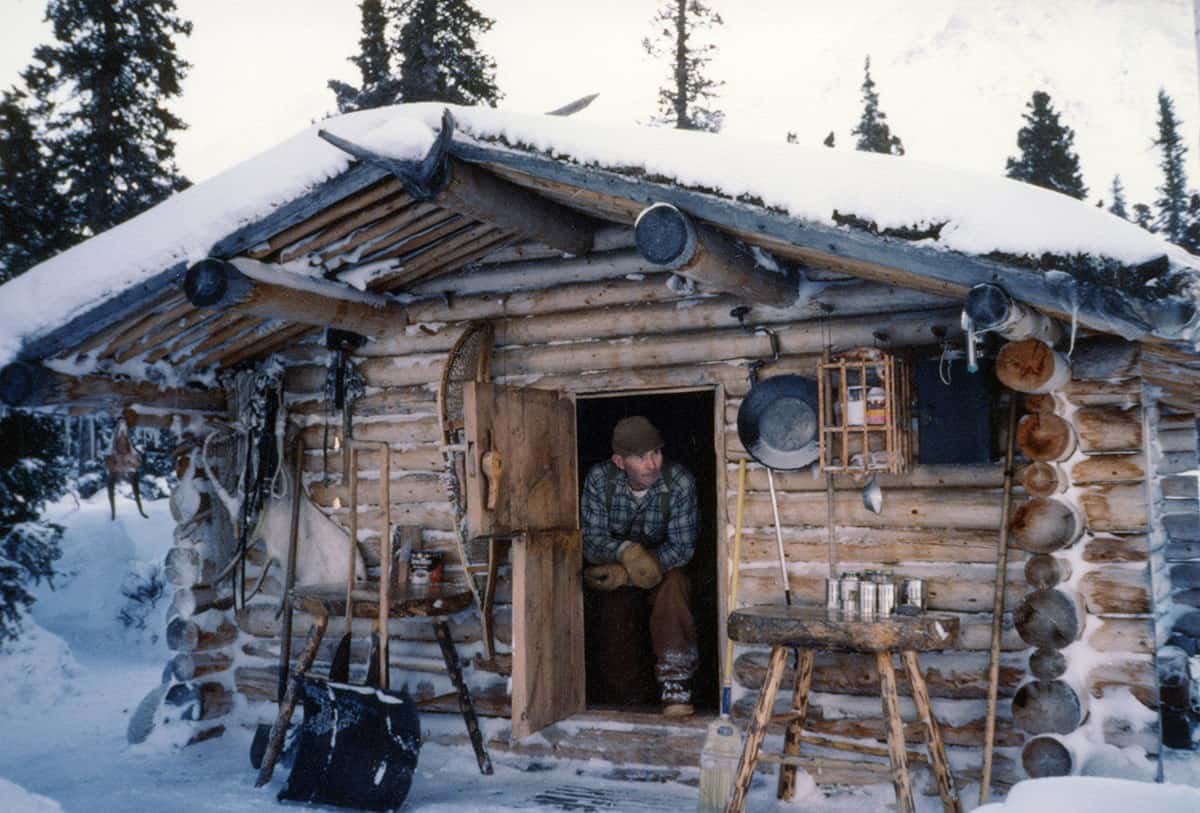
While it’s called Lake Clark National Park and Preserve, this park is, in fact, very much all about wilderness.
Encompassing craggy mountains, steaming volcanoes, running salmons, foraging bears, enormous rocky mountains, and shimmering lakes, this is a dynamic park that’ll keep you busy.
Speaking of dynamics, I have a thing for parks with a community, and this is one of them!
Native Alaskans still reside in the park, and they depend on the land and water for a living, so that humane experience is genuinely part of what makes the park visit remarkable. In getting acquainted with their culture, you simultaneously get acquainted with Lake Clark.
Generally, the summer months are ideal for fishing experiences at Lake Clark National Park, and if you’re looking to see bears, that would be during June.
Whenever you visit, stop by Richard Proenneke’s Cabin, by floatplane, or backcountry hiking – it’s a movie-like cabin thanks to its remarkable craftsmanship!
Get Google Maps directions here!
Lassen Volcanic National Park, California
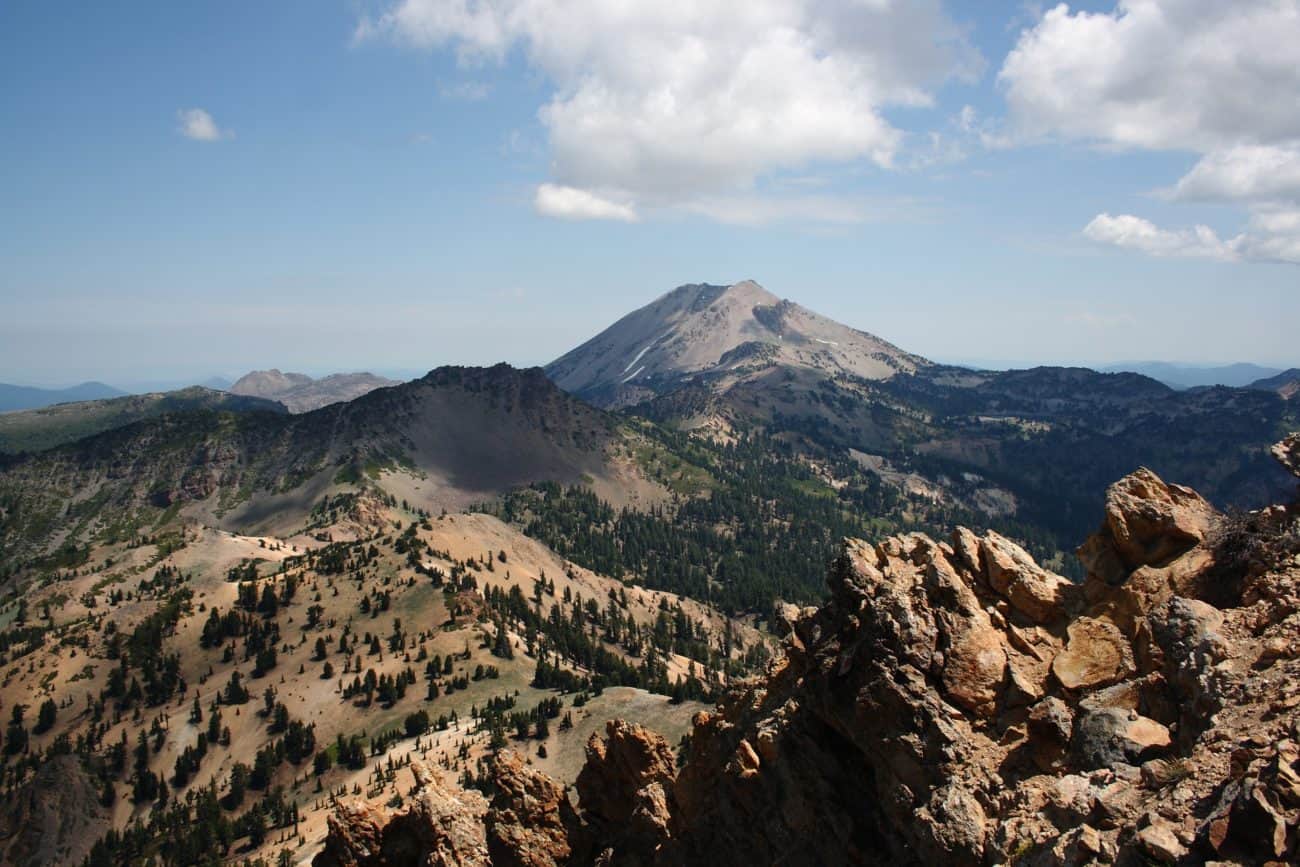
Surrounded by the Cascade volcanoes, Sierra Mountains, and the Great Basin desert enables Lassen Volcanic National Park to offer one of the unique geological areas you could step foot on.
To be frank, what also makes visiting Lassen Volcanic National Park memorable is that its sort of a hidden gem, so you won’t have to worry about crowds and trying to make your way to your planned destinations. And that includes seeing the world’s hottest fumaroles, so make sure to walk along the Bumpass Hell Trail and boardwalk.
For a scenic drive, the Lassen Volcanic National Park Highway is the only route through the park, so you’re guaranteed to see Mill Creek Falls, Summit Lake, Chaos Jumbles, Manzanita Lake, and Sulphur Works as you go.
During the winter and snow seasons, the park has multiple adventures to offer, including steep slopes and sweeping vistas, especially in the Manzanita Lake Area – perfect for snowshoeing, snow camping, and cross-country skiing!
Get Google Maps directions here!
Mammoth Cave National Park, Kentucky
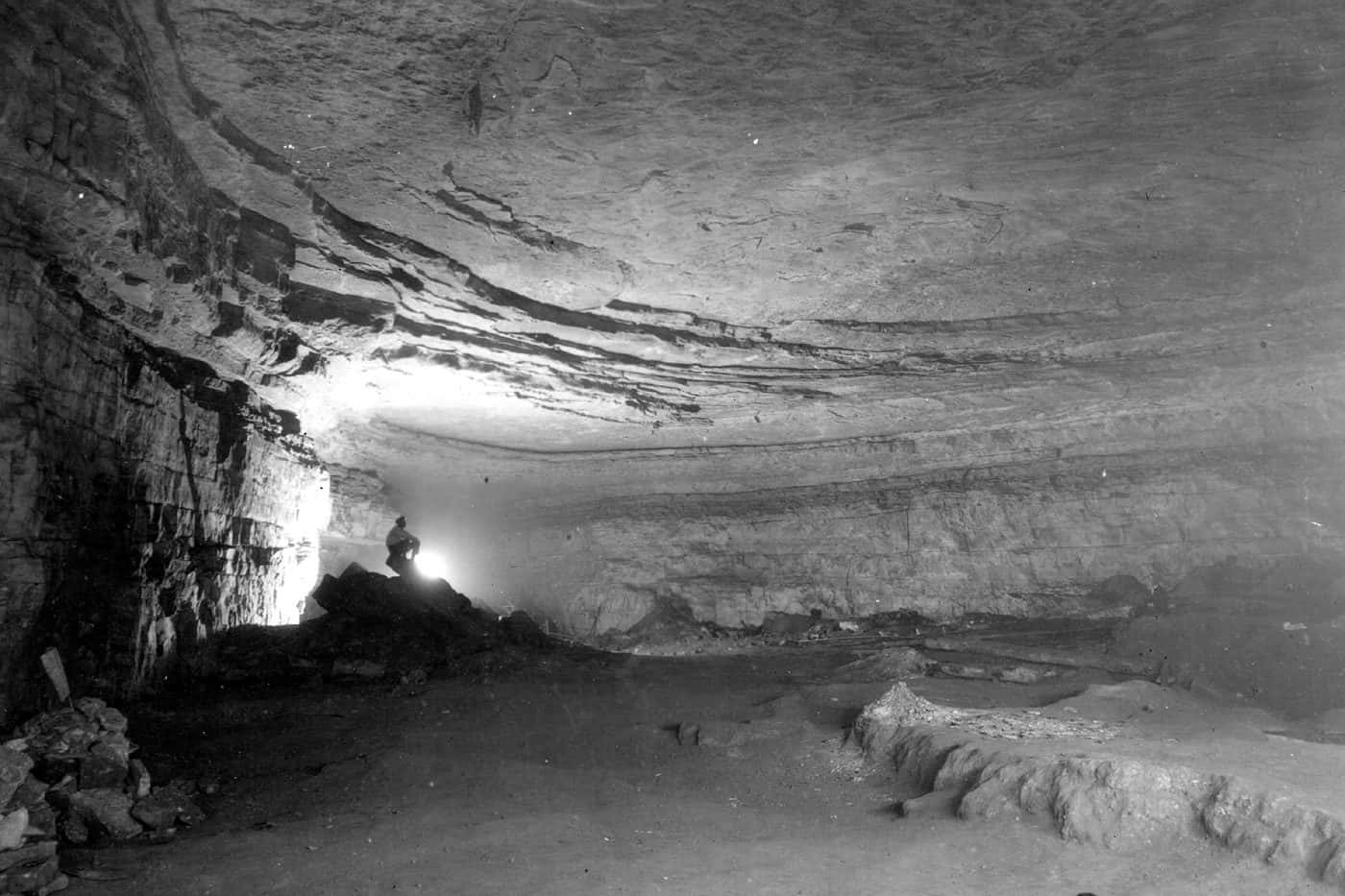
Known as the world’s largest cave system, Mammoth Cave National Park has rightly earned itself the UNESCO World Heritage Site and International Biosphere Reserve titles.
And that’s not only because of its cave system but also the history behind it, dating thousands of years back.
Encompassing 400+ miles of explored lands, the Mammoth Cave National Park has jaw-dropping stories, starting with the remains of Native Americans and graffiti found in its depth. This cave was also once a tuberculosis hospital and was mined for gun powder material.
Those are only the passageways that have been explored, but there’s more. Beyond the cave’s surface, cave bacon, flowstone, tunnels, and waterfall labyrinths dominate the scene.
To know all about the Mammoth Cave’s fascinating history, the Violet City tour is your best bet!
As for hiking, the park houses more than 80 miles of trails among the 400 miles. Popular favorites are Big Hollow, Cedar Sink, White Oak, and Mammoth Cave Railroad.
Get Google Maps directions here!
Mesa Verde National Park, Colorado
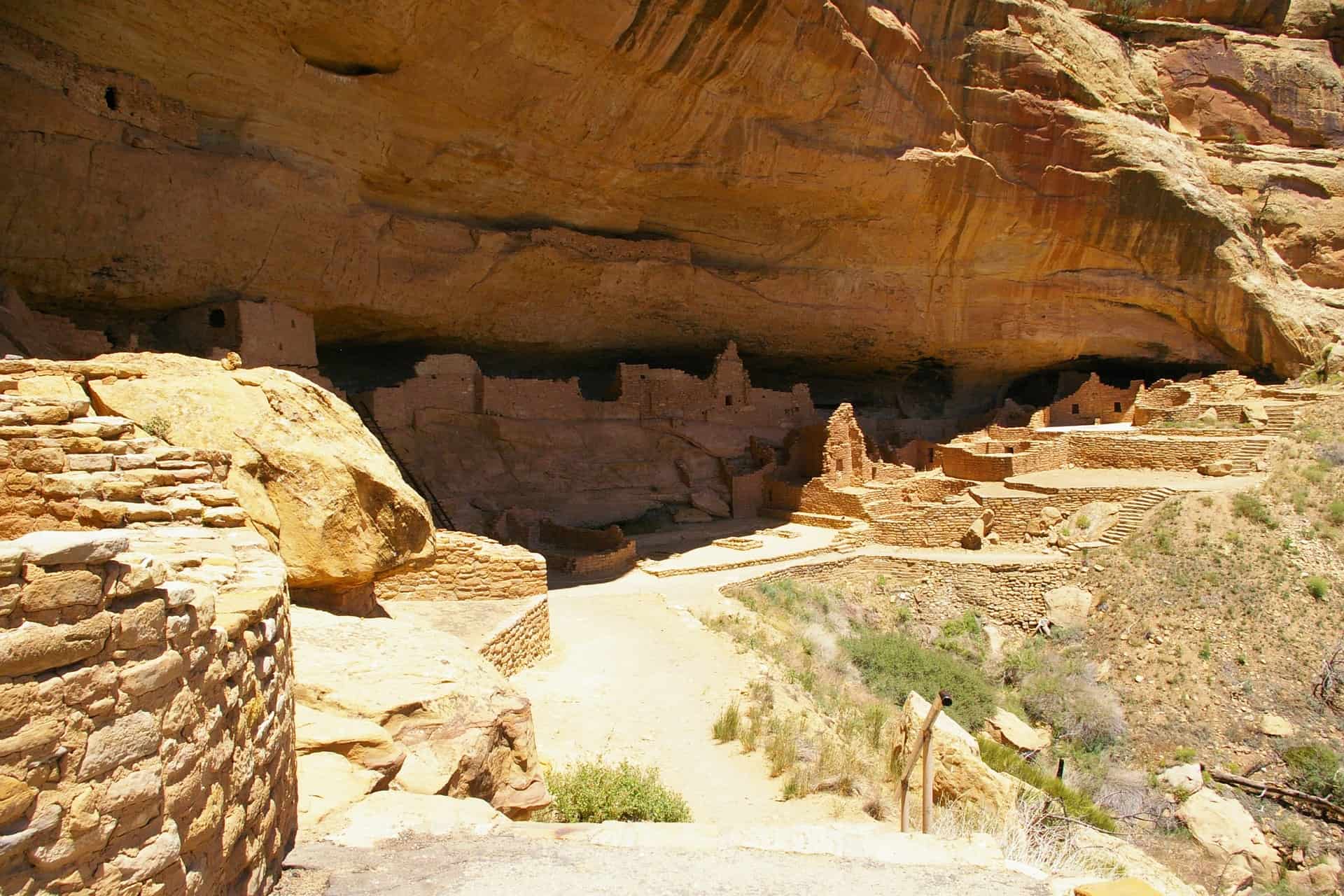
Made to preserve history, the Mesa Verde National Park protects the Ancestral Pueblo people’s archaeological sites who resided in the park for more than 700 years.
For a diverse collection of archeological sites, you’ll have more than 5,000 of them to explore.
Among the notable sites of Mesa Verde National Park are its 600 cliff dwellings, especially the Cliff Palace, the largest of the dwellings containing around 150 rooms and above 20 kivas.
The Spruce Tree House is also a common attraction; it’s the third-largest dwelling and mainly contains ruins but is among the most preserved!
And for the sake of history, the Chapin Mesa Archeological Museum is full of exhibits and artifacts on ancient Native American culture.
While most housing complexes can be easily accessed, others require a park ranger’s guidance, especially those in remote areas, and require scale ladders and railings to make your way.
Get Google Maps directions here!
Mount Rainier National Park, Washington
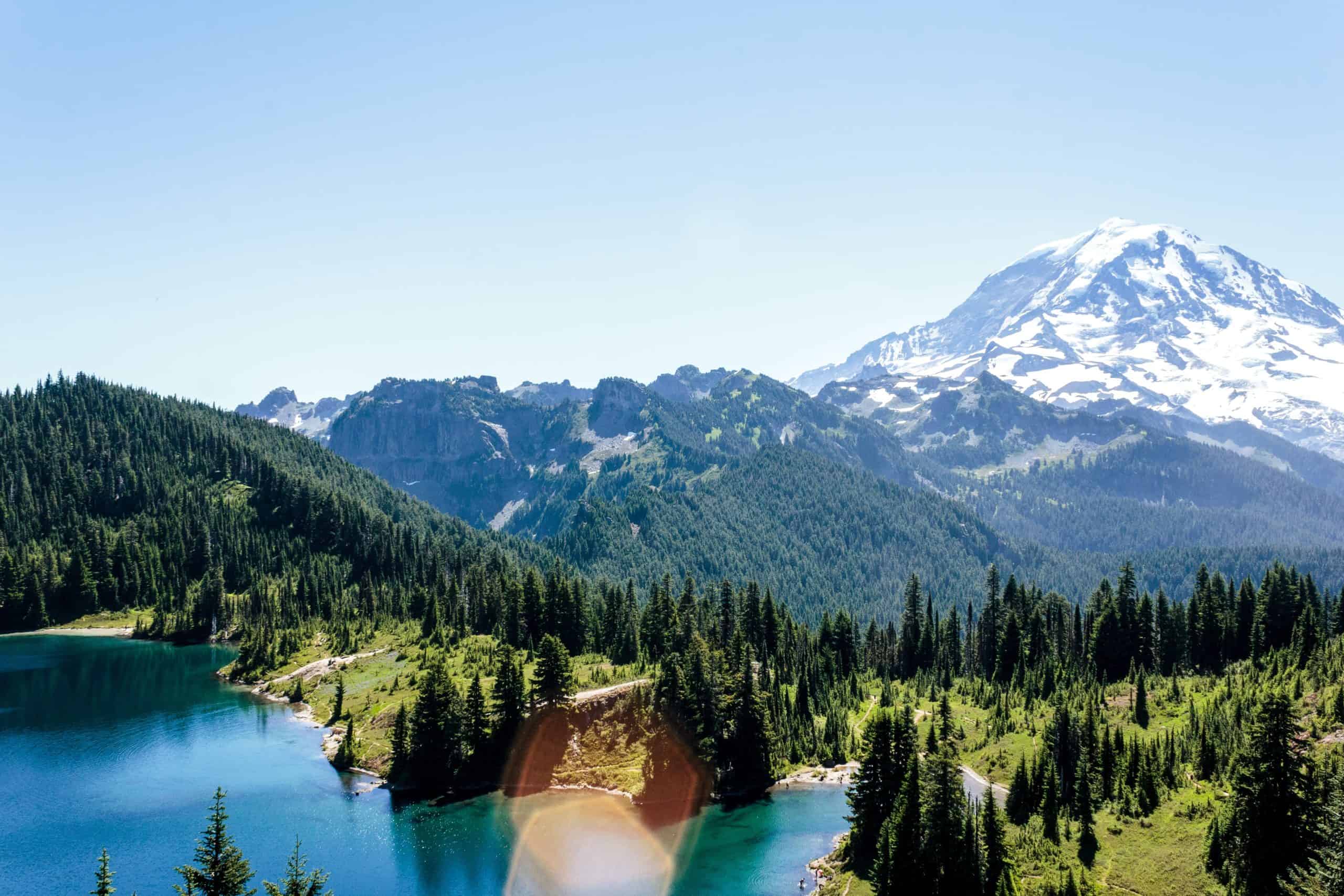
Mount Rainier National Park is the residence of one of Washington’s landscape icons, Mount Rainier!
Rising 14,410 feet above sea level, the most glaciated peak in the United States, and continuing to be an active volcano, Mount Rainier offers unlimited mountaineering opportunities.
While it’s certainly a challenge to climb an active volcano, sometimes that’s exactly the kind of adventure you want! Not to mention, if you’ve settled on making it to Everest one day, consider this a “simulation” opportunity for that.
When it comes to hiking trails, Mount Rainier National Park has more than 250 miles of hiking trails suitable for every hiker, regardless of their skill set. So, be prepared to explore the park’s backcountry!
And if you aren’t into adventures altogether, no worries! The crown jewel that is Mountain Rainier National Park has an overabundance of subalpine meadows (don’t miss the Paradise meadows), old-growth forests and lands, wildlife animals, and five rivers to take your breath away!
Get Google Maps directions here!
National Park of American Samoa, American Samoa
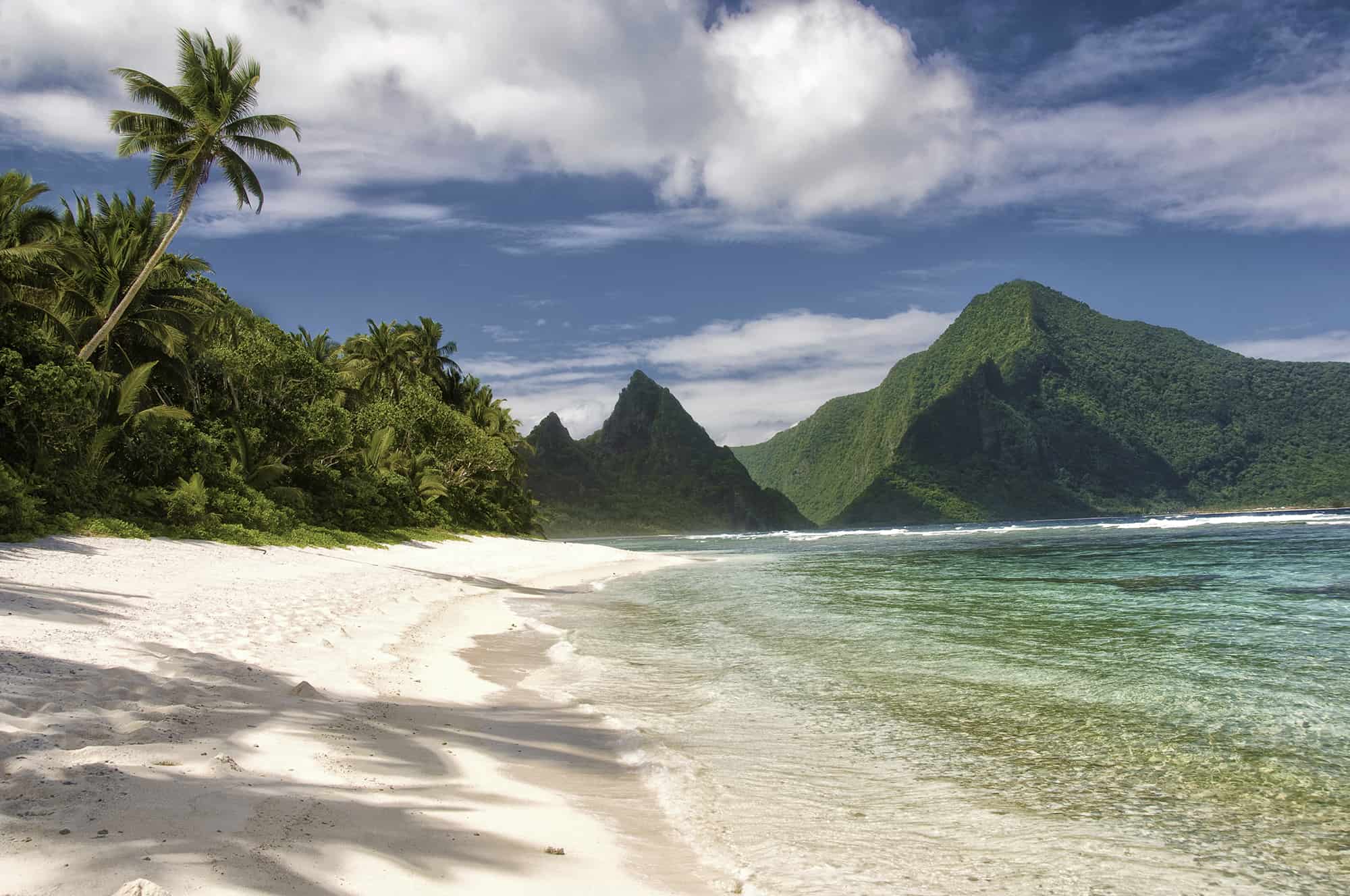
The National Park of American Samoa is the only national park located wholly in the southern hemisphere. The park consists of three islands: Tutuila, Ofu, and Ta‘ū, and preserves coral reefs, tropical rainforests, and fruit bats – but most importantly, the American Samoan culture.
When you visit the park, you’ll be surprised to know that the islands had native inhabitants for thousands of years, but it doesn’t show – everything is miraculously preserved.
What’s most astonishing are the cloud forests that overshadow volcanic peaks!
If you genuinely want to experience the park for what it is, stay with an American Samoa family! Yes, that’s right, they’re still there.
As part of the National Park Service’s homestay program, you get to experience living with an American Samoa family and participate in village activities, from cutting the Pandanus tree leaves to drying to weave mats!
Hiking the park’s rainforests is also amazing! Try World War II Heritage Trail or Mount’ Alava Adventure Trail.
Get Google Maps directions here!
New River Gorge National Park and Preserve, West Virginia
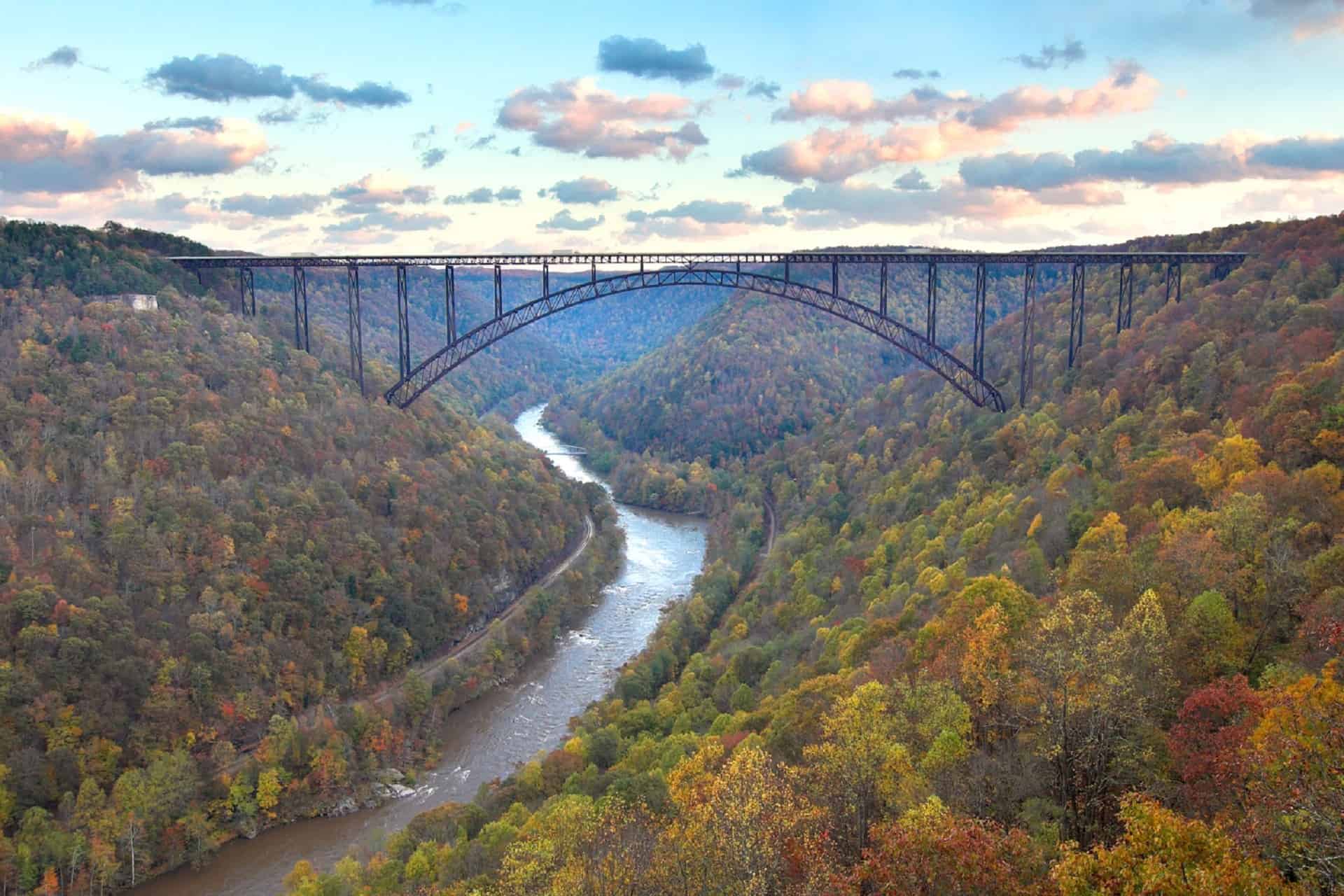
New River Gorge was once a national river, but just recently, it was designated the 63rd of the US national parks, becoming New River Gorge National Park and Preserve.
It’s exclusively designed to preserve the new River Gorge in the Appalachian Mountains, a beautiful whitewater river flowing through the deepest canyons.
Encompassing more than 70,000 acres of land, the park celebrates the history of West Virginia and makes sure no one misses out on all the fun while enjoying the natural features.
Visit the Canyon Rim Visitor Center and take a walk to the boardwalk paths for a view of the New River Gorge Bridge, and go on a whitewater rafting trip!
The park film is also available to watch for a comprehensive overview of the history of the park.
For hiking, the Kaymoor Miners Trail is impressive, and so is the beaten path leading to the Trump Lilly Farm!
Get Google Maps directions here!
North Cascades National Park, Washington
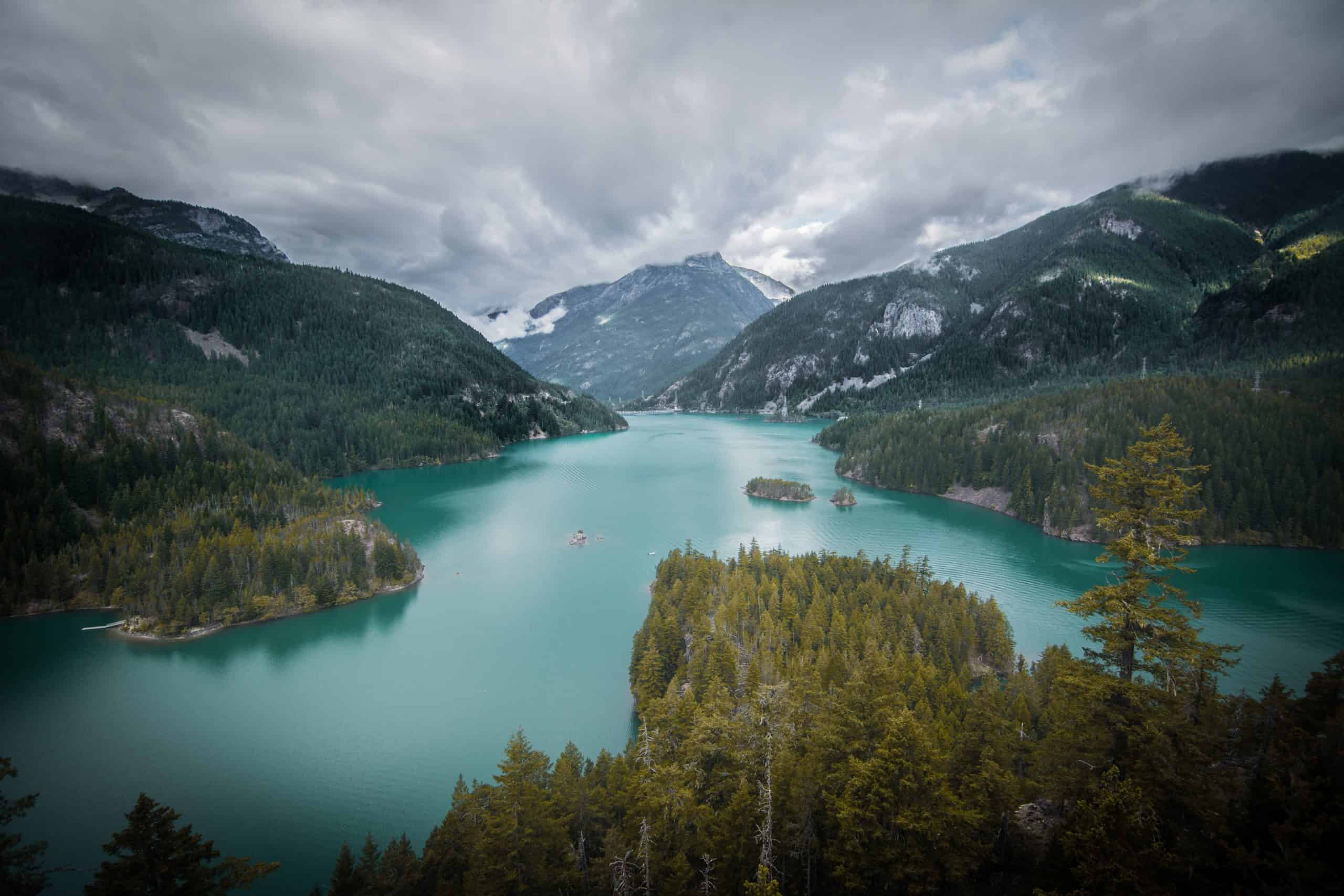
Sheltering grizzly bears, gray wolves, and more than 200 bird species, North Cascades National Park feels like a remote community where you get to be on your own with nature, despite its very active ecosystem.
To begin with, the North Cascades National Park features more than 300 glaciers. As a result, creeks, waterfalls, and rivers are all over the place, all contributing to the relaxation you feel when you’re in the park.
And that’s not even it; there are millions of acres of wilderness full of alpine tundra, flowers, jagged peaks, forested valleys, and so much more.
While it’s hard to see everything, a boat tour in Ross Lake or Lake Chelan National Recreation Areas is an excellent starting point!
Plus, the North Cascades Scenic Highway and Stehekin Valley Road are the go-to for scenic drives to take you through both the wilderness and mountains!
Get Google Maps directions here!
Olympic National Park, Washington
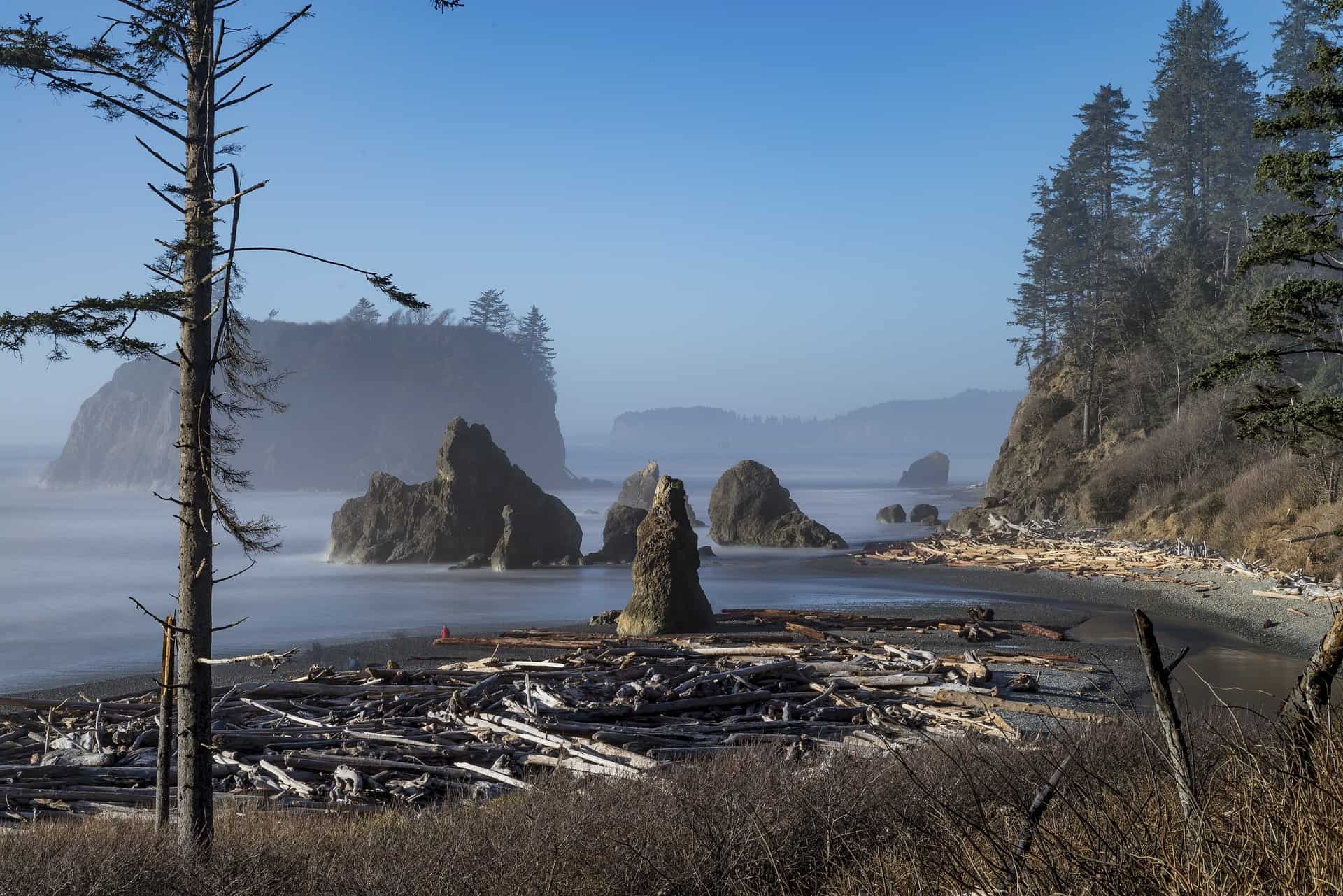
The Olympic National Park is a diverse one, consisting of four regions: alpine areas, dry forests of the east side, temperate rainforests of the west side, and the Pacific coastline.
On that account, the park encompasses three ecosystems, including a wildflower meadow and subalpine forest, temperate forest, and the rugged Pacific coast.
Since the park has a little of everything, deciding which areas to focus on is ultimately a matter of preference – some choose the peaks of the highest mountains, others prefer the lush rainforests, and others place the sandy beaches as a priority.
Yet, it’s worth noting that the hallmark of the Olympic National Park is the Hoh Rain Forest, one of the “Seven Wonders of Washington State”, a World Heritage site, and a UNESCO Biosphere Reserve for its fog and mist that make it ever-so-lush.
Before leaving, visit the Kalaloch and Ruby Beach – not just for beach walking but for the bird watching and beautiful landscapes!
Get Google Maps directions here!
Petrified Forest National Park, Arizona
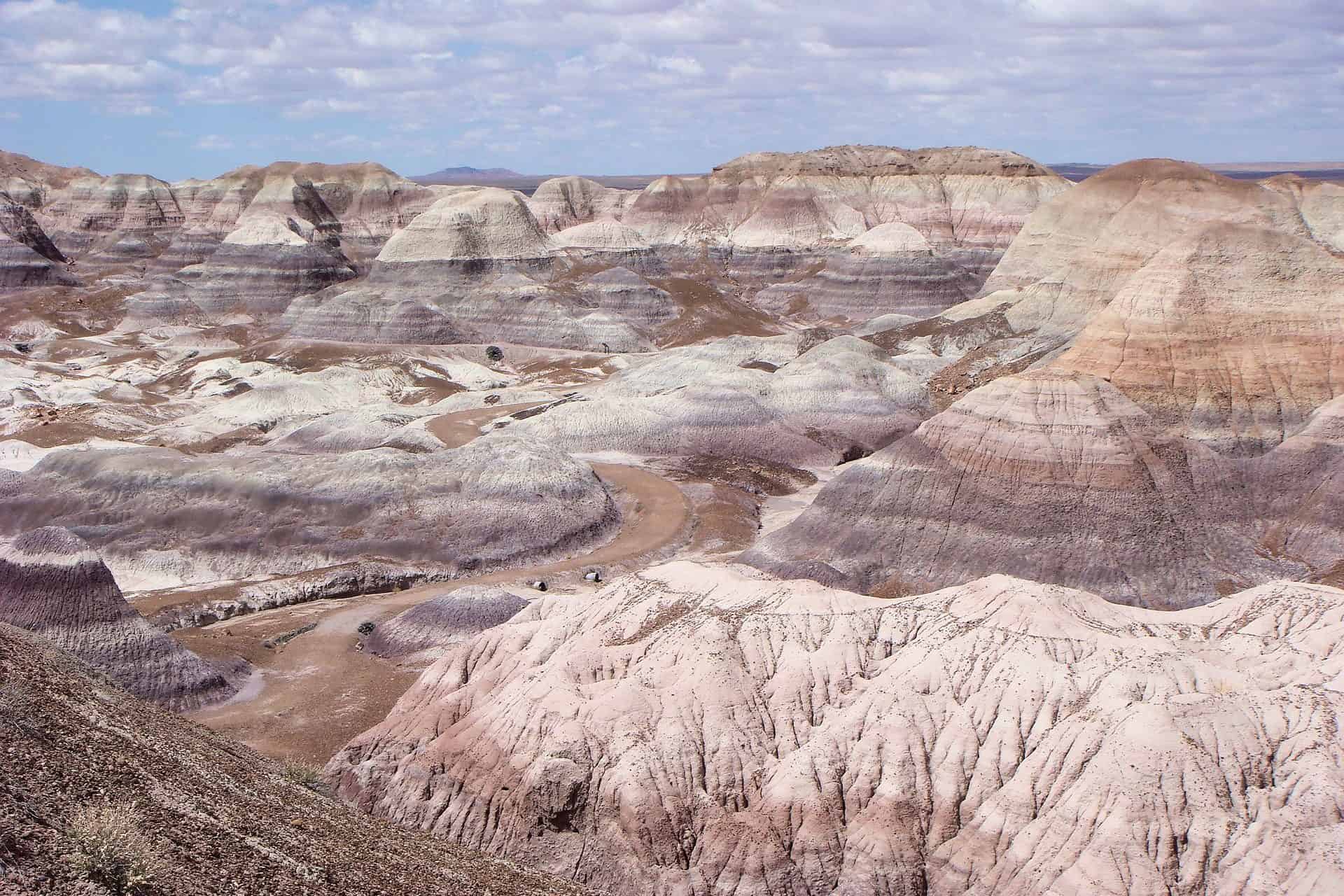
The Petrified Forest National Park in Arizona is most certainly not getting the popularity it deserves. While it’s globally known for its petrified logs, not many people have explored its crown jewels – fossils, ancient petroglyphs, badlands, buttes, and mesas.
The Petrified Forest National Park isn’t exhausting. Whether you choose to take a short scenic drive, walk a trail, or hike into the backcountry, you’ll have plenty to enjoy.
For some excitement, the Billings Gap, Blue Forest Trail, Dead Wash Overlook, and Devil’s Playground are some of the off-the-beaten-path routes to pursue!
In contrast, if solitude is what you’re seeking, head to the Painted Desert for a color wonderland ranging from lavenders and reds to greys. It’s a natural canvas that’s hard to take your eyes off!
Get Google Maps directions here!
Pinnacles National Park, California
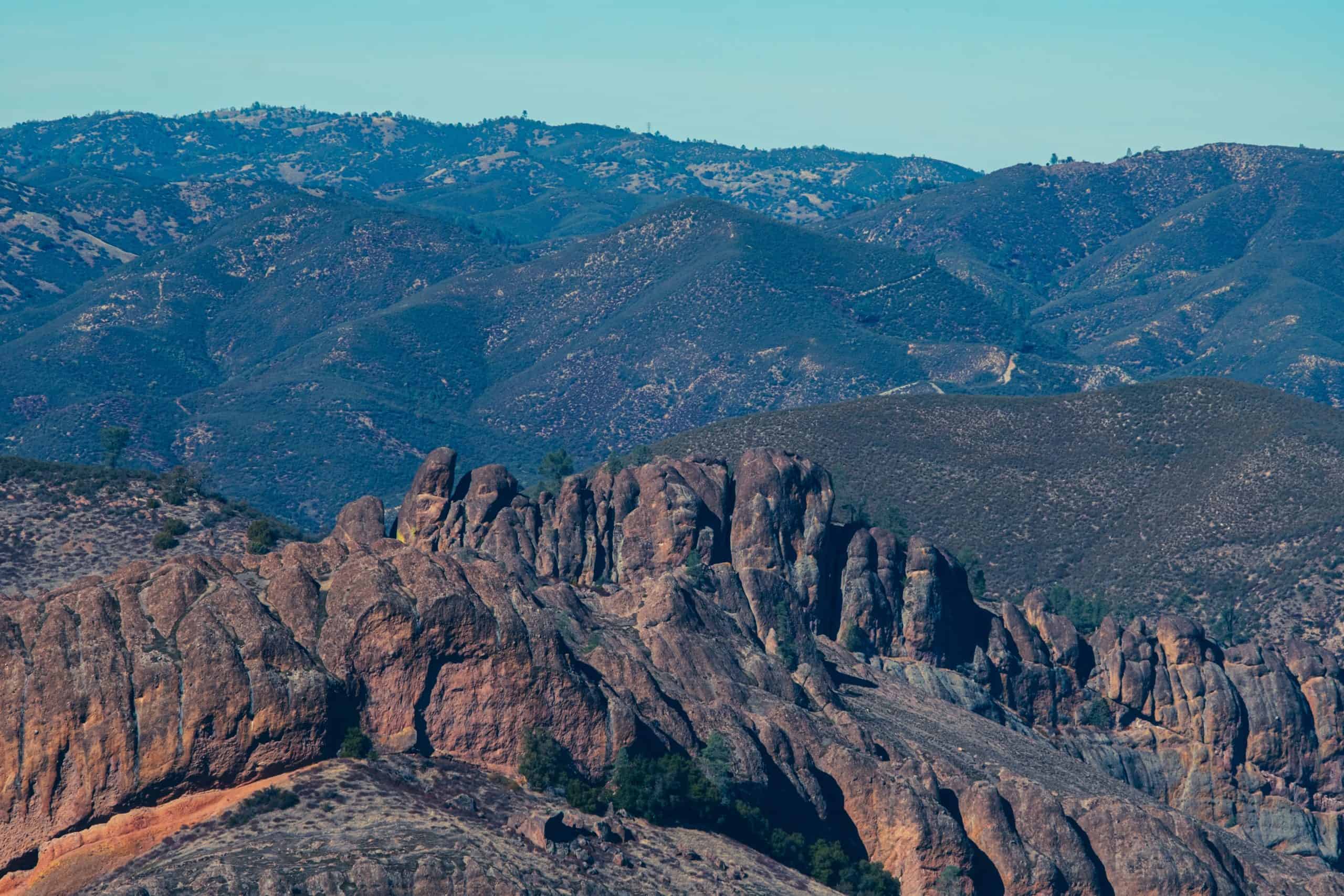
Formed as a result of the eruption of multiple volcanoes, Pinnacles National Park provides a unique landscape that one would never think is a result of an eruption.
Originally, Pinnacles was a national monument and was only “upgraded” to a national park in 2013.
From oak woodlands and dark caves to canyon bottoms, Pinnacles National Park is full of life, further accentuated by the presence of peregrine falcons, golden eagles, the California condor, and even red-legged frogged in the caves.
Furthermore, its spring wildflowers are mostly always booming, making for a gorgeous sight.
This natural beauty deserves to be explored on foot, so if you’re into hiking, hike through the talus caves and some of its trails.
The Pinnacles National Park is ideal for camping, and it’s one of the few national parks in the United States with trail opportunities that suit entire families and serious adventurers.
Get Google Maps directions here!
Redwood National and State Parks, California
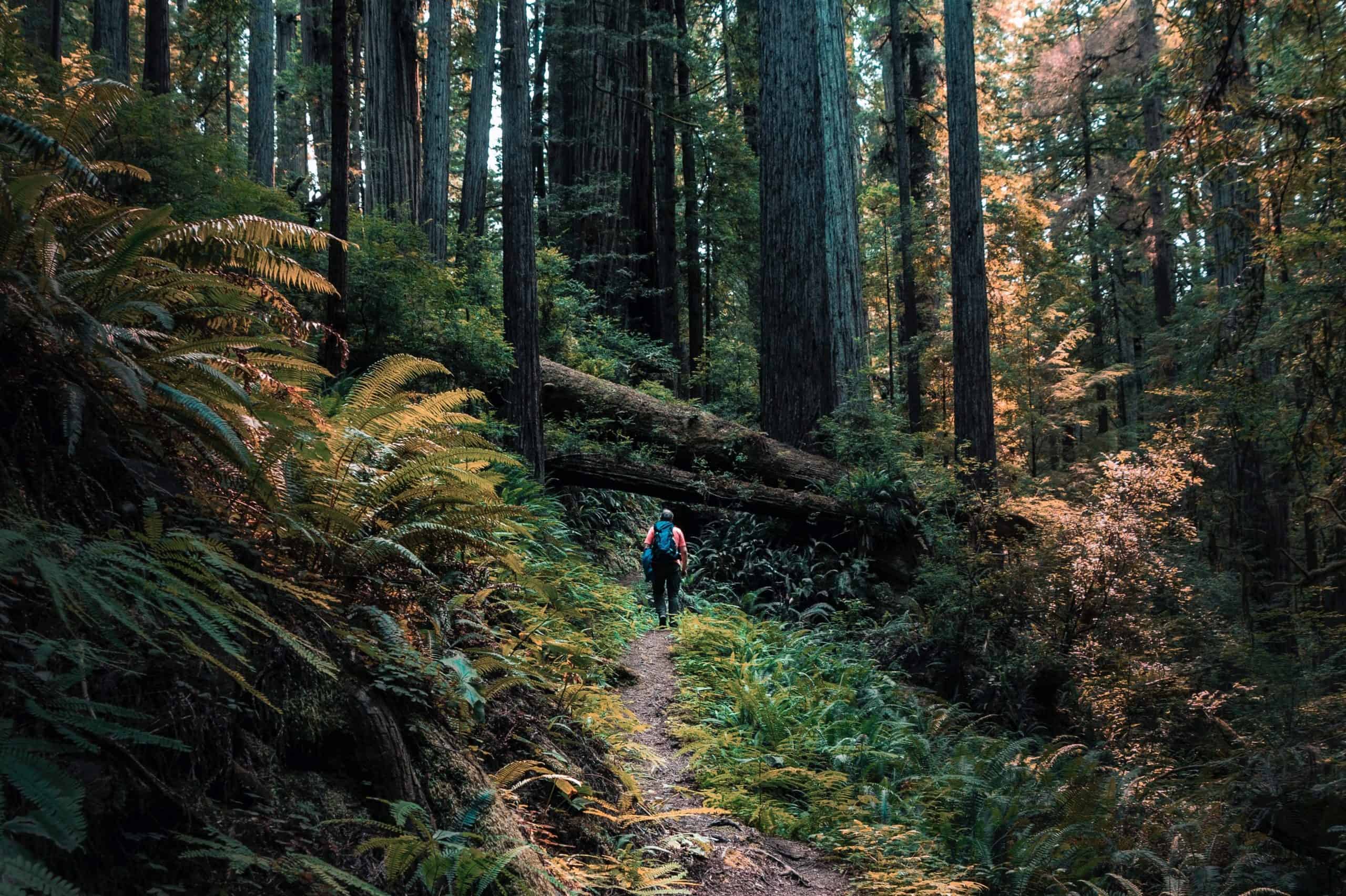
Most people know Redwood National and State Parks for the tallest trees on Earth, the Redwood trees. However, many people don’t know that the park serves as a protection for oak woodlands, riverways, vast prairies, and 40 miles of rugged coastline.
Of course, start with the Redwood trees since you can’t visit the Redwood National Park without enchanting yourself with these trees that lived for centuries! So head directly to Tall Trees Grove or Big Tree Wayside to walk among them.
I then advise you to walk the Lady Bird Johnson Grove, a scenic trail honoring a former environmental activist First Lady. It’s a short trail in a redwood upland environment providing you an up-close look at the beautiful forests.
Also, bicycling in the Redwood National Park is on a different level! While there are many hike and bike trails in the park, the central hub for bikes is in the southern part.
Get Google Maps directions here!
Rocky Mountain National Park, Colorado
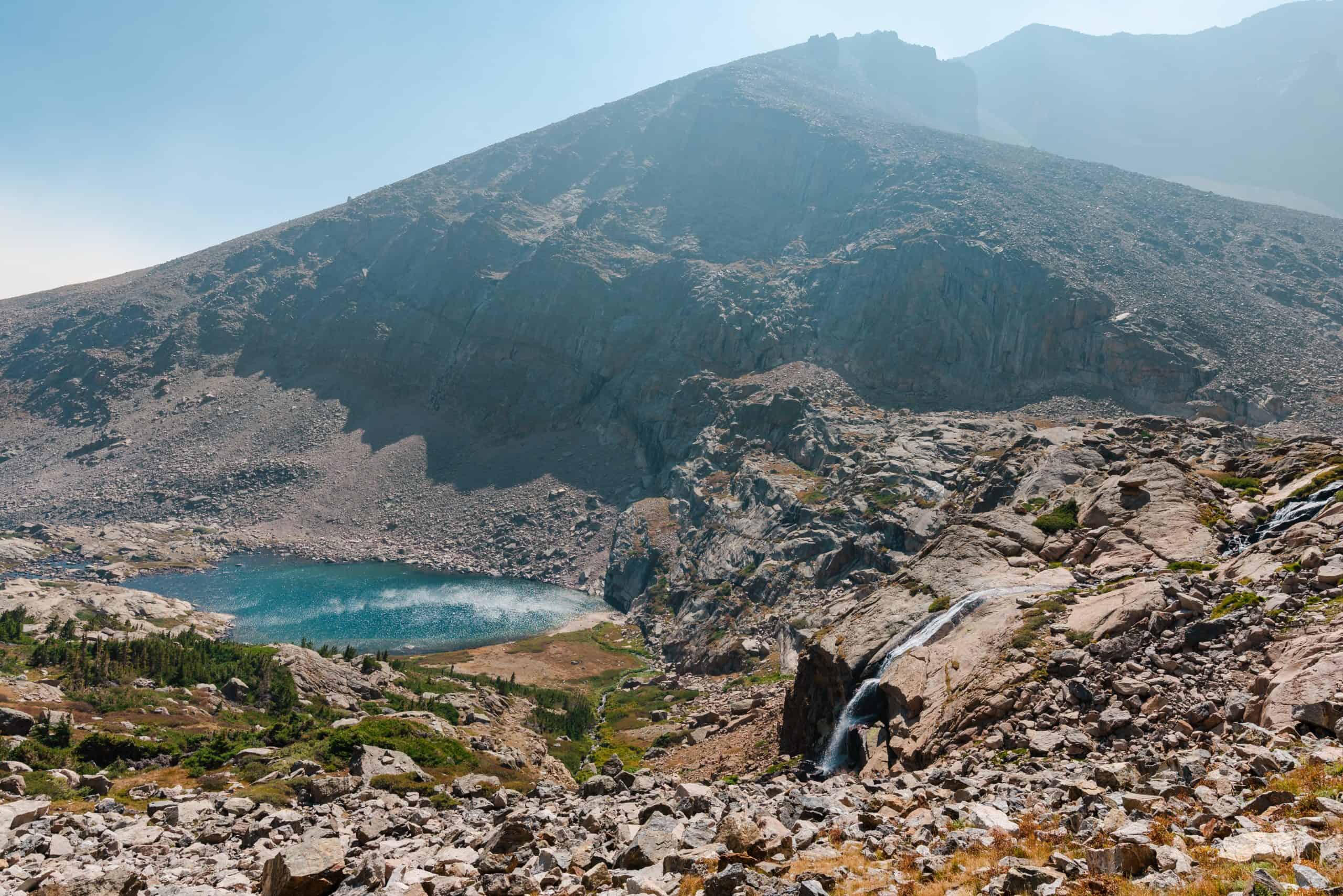
One of the US national parks surging in popularity, Rocky Mountain National Park, as its name implies, is all about hiking trails and adventures to get your adrenaline pumping.
Spanning more than 266,000 acres, any adventure that crosses your mind is possible at the Rocky Mountain National Park.
The park includes:
- Hiking opportunities and backpacking trails.
- Climbing on ice.
- Rock climbing.
- Horseback riding into the wild.
- Fishing in the sparkling mountain lakes.
- Whitewater rafting.
- Biking on mountains.
- And of course a lot more.
Not interested in adventures and seeking scenery? There’s incredible scenery to take your breath away.
The Rocky Mountain National Park’s stunning reviews encompass rocky crags, tundra lands, clear scenic streams, wildlife roaming the valleys, and wildflowers blooming everywhere.
For a scenic drive, drive down Trail Ridge Road and thank me later!
Since Rocky Mountain National Park is open 365 days a year and suits the outdoor adventurer and family travelers alike, it’s not hard to see why this park is always busy!
Get Google Maps directions here!
Saguaro National Park, Arizona
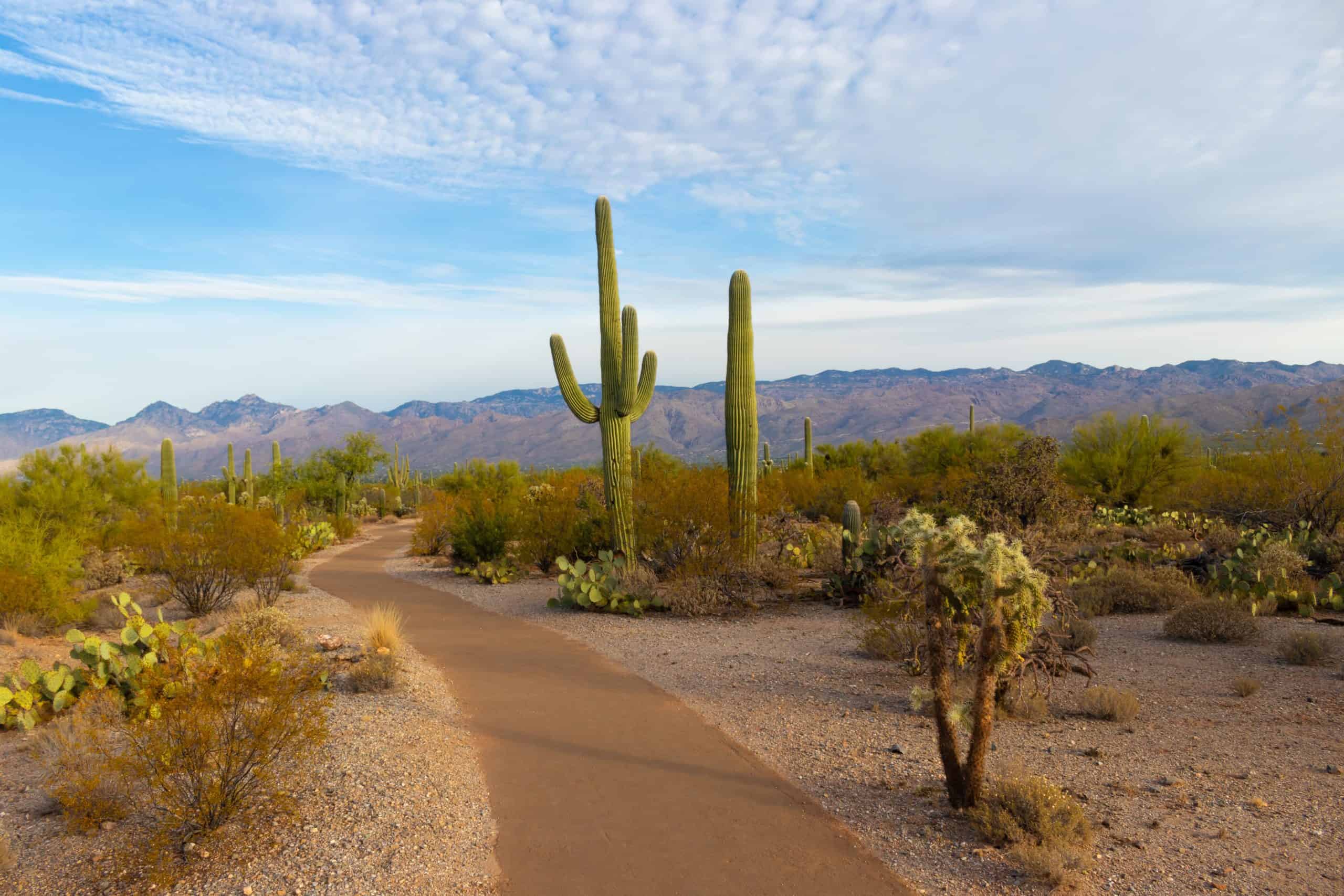
Named after the large saguaro cactus, the Saguaro National Park has the largest cacti in Arizona, and since they’re uncommon to find, the park preserves them to the east and west of Tucson city.
At Saguaro National Park, namely in the Tucson Mountain District on the west, you witness the cacti first-hand in their usual habitat, a desert. But this is no ordinary park; it’s a magnificent one protecting a lot more unique plants and animals beyond cacti.
In the Rincon Mountain District to the east, the park protects animals like Gila monsters, kangaroo rats, collared peccaries, and horned lizards. The cause in itself is such an inspiration!
Cactus Forest Drive road is your best bet if you want to spectate striking desert landscapes the park features. However, if you’re going to stay occupied and engage in activities, hiking, backcountry camping, and guided programs are available! I’d recommend Freeman Homestead Natural Trail as a start for all skill levels.
Get Google Maps directions here!
Sequoia National Park, California
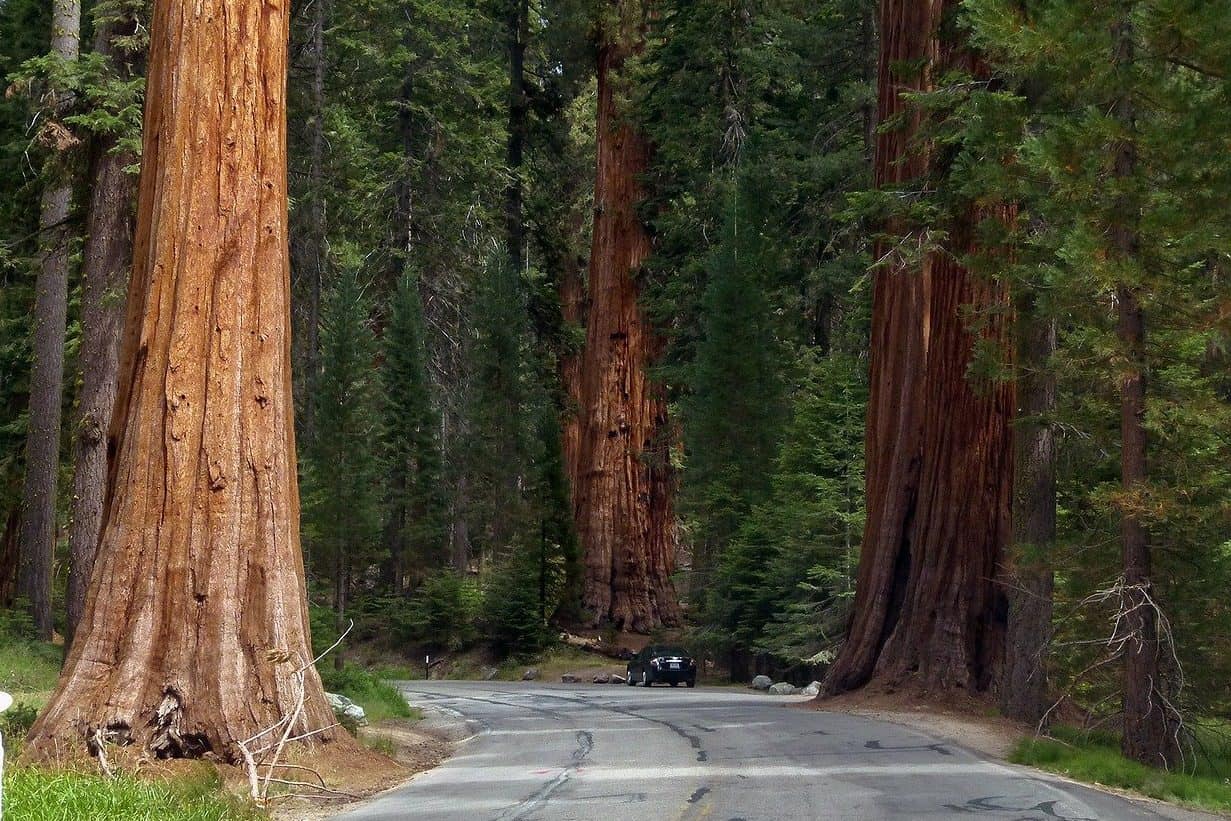
Associated with Kings Canyon National Park since it’s located south of it, the Sequoia National Park is known for its giant sequoia trees, especially the General Sherman Tree, the largest on Earth by volume.
Along with the General Sherman Tree, five of the world’s ten largest trees grow in the same forest, called the Giant Forest.
However, it would be unfair to limit the park to its trees, because honestly, it offers more than giant trees, but before I leave this point, walk the Big Trees Trail to witness the giants yourself. And on your way, look around at the rugged foothills and deep canyons to be amazed.
The park’s lower elevations include blue oak woodlands, grasslands, yucca plants, mild river valleys, and abundant wildlife!
Rattlesnakes and mule deer are a common observance, and there’s a chance you see mountain lions too! Plus, it’s in the works to introduce the bighorn sheep to the park once again.
Get Google Maps directions here!
Shenandoah National Park, Virginia
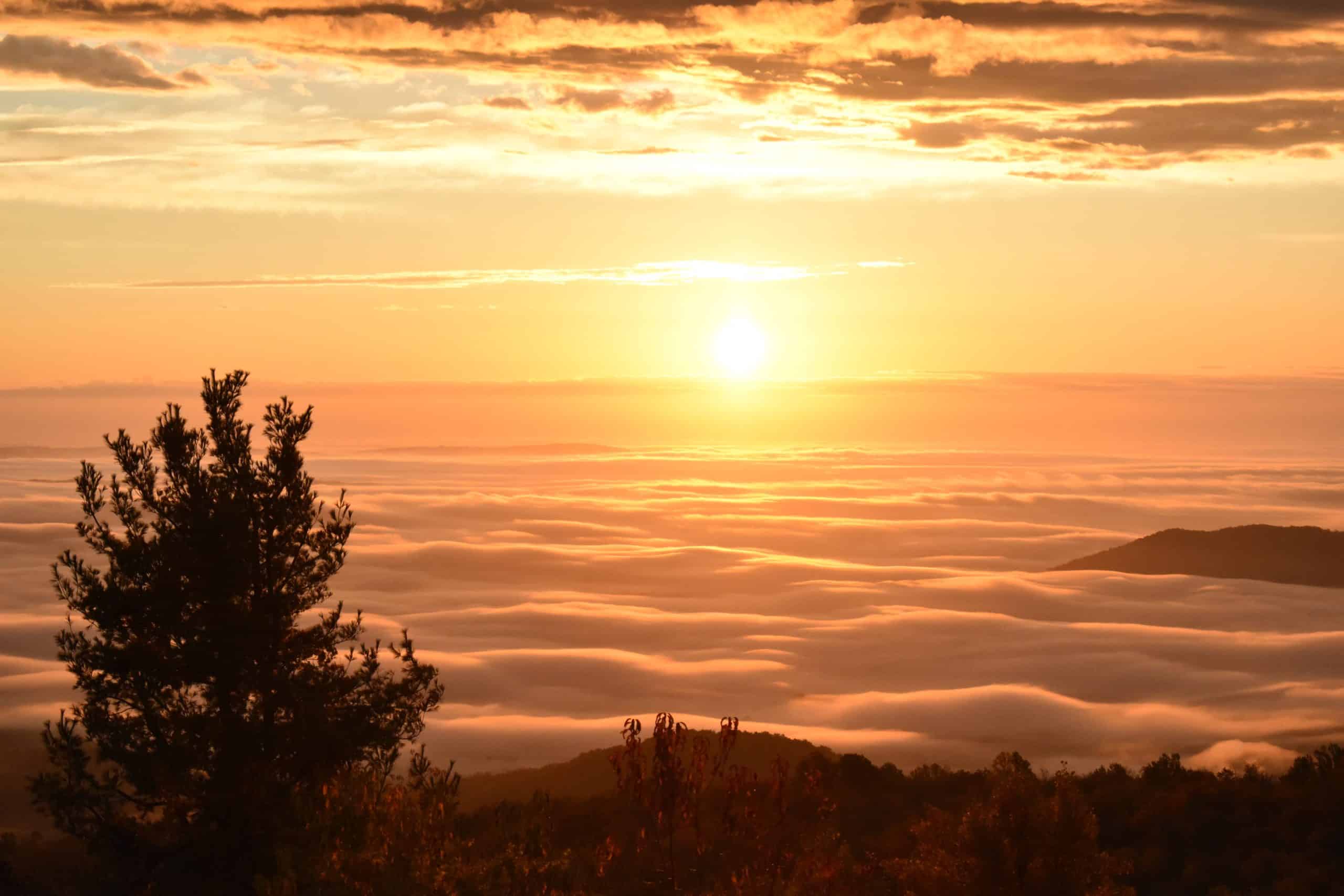
Virginia’s first national park, Shenandoah National Park, is one that needs to be visited more than just once to fully take in all the beauty it has to offer, from preserved human history to trails and recreational activities.
Consisting of 200,000 acres of protected lands and located 75 miles from Washington, the park is the dream getaway from daily life.
It mostly consists of forests showcasing nature’s beauty. Still, it extends to waterfalls and rocky peaks, including the Hawksbill and Old Rag mountains, and unique bird species and animals, like the black bear!
Not to mention, the Shenandoah National Park has 500 miles of trails, 101 of which are of the Appalachian Trail, making it paradise for hikers who could create a whole new bucket list just for the trails the park offers.
Since the Skyline Drive runs the length of the Shenandoah National Park, it’s an excellent idea to take a trip down for precious scenes!
Get Google Maps directions here!
Theodore Roosevelt National Park, North Dakota
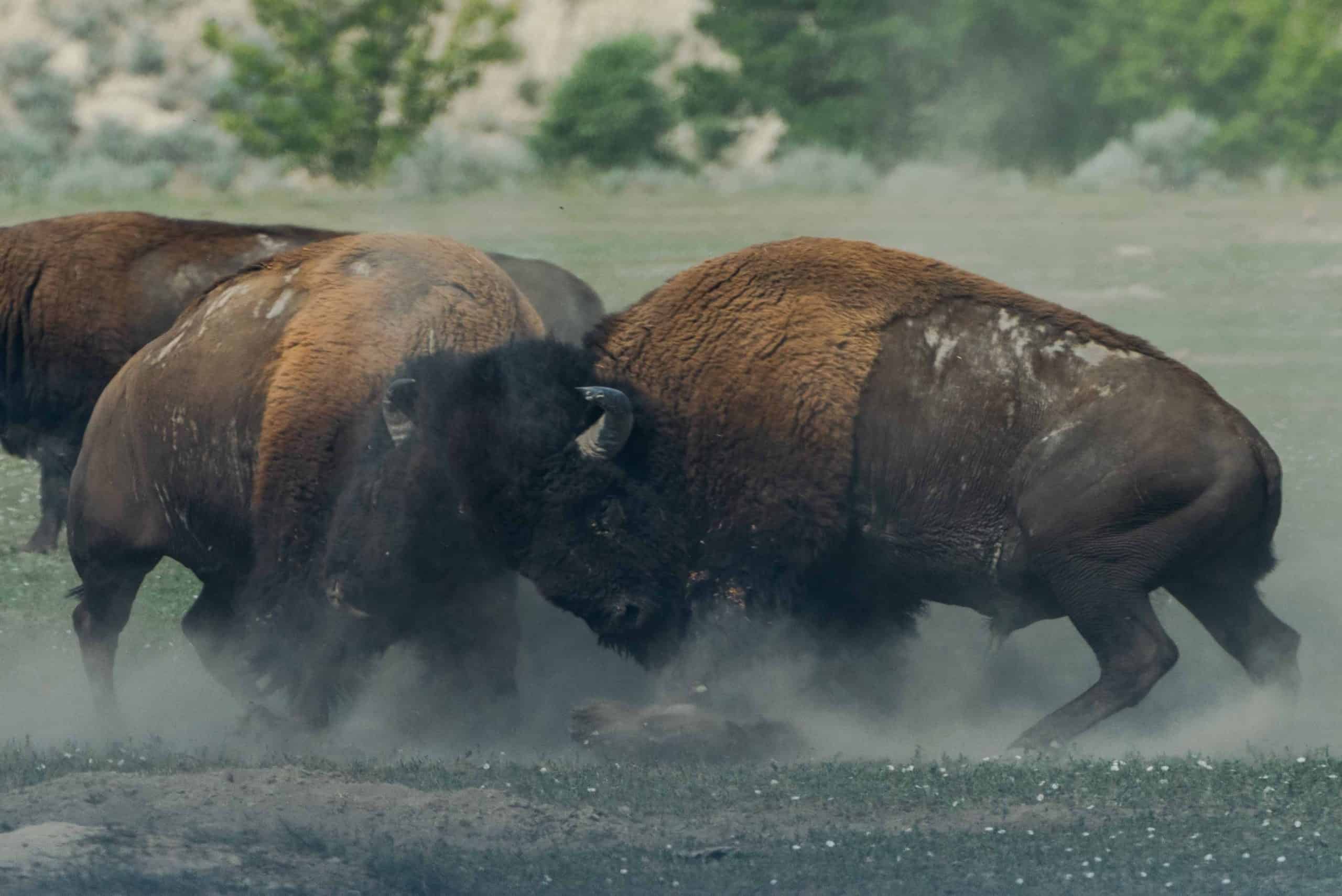
Home to the Maltese Cross Cabin, where President Theodore Roosevelt once lived, Theodore Roosevelt National Park consists of three geographically dispersed areas of badlands linked by the Little Missouri River, leaving much room for recreational opportunities.
Taking you years back, the Theodore Roosevelt National Park is full of flowing rivers, evergreen shrubs, roaming wild horses, and other animals – other animals include bison, elk, and prairie dogs.
Take a scenic drive on either side of the park. I recommend the Scenic Loop Drive on the south and the Scenic Drive on the north.
For a literal glimpse of history, you can visit the cabins President Theodore Roosevelt once owned, which are accessible through the visitor center or backcountry trail. The Maltese Cross Cabin, in particular, is located at the visitor center.
The most commonly hiked trail is the Painted Canyon since it’s easy to hike (soft sand), making it family-friendly.
Get Google Maps directions here!
Virgin Islands National Park, U.S. Virgin Islands
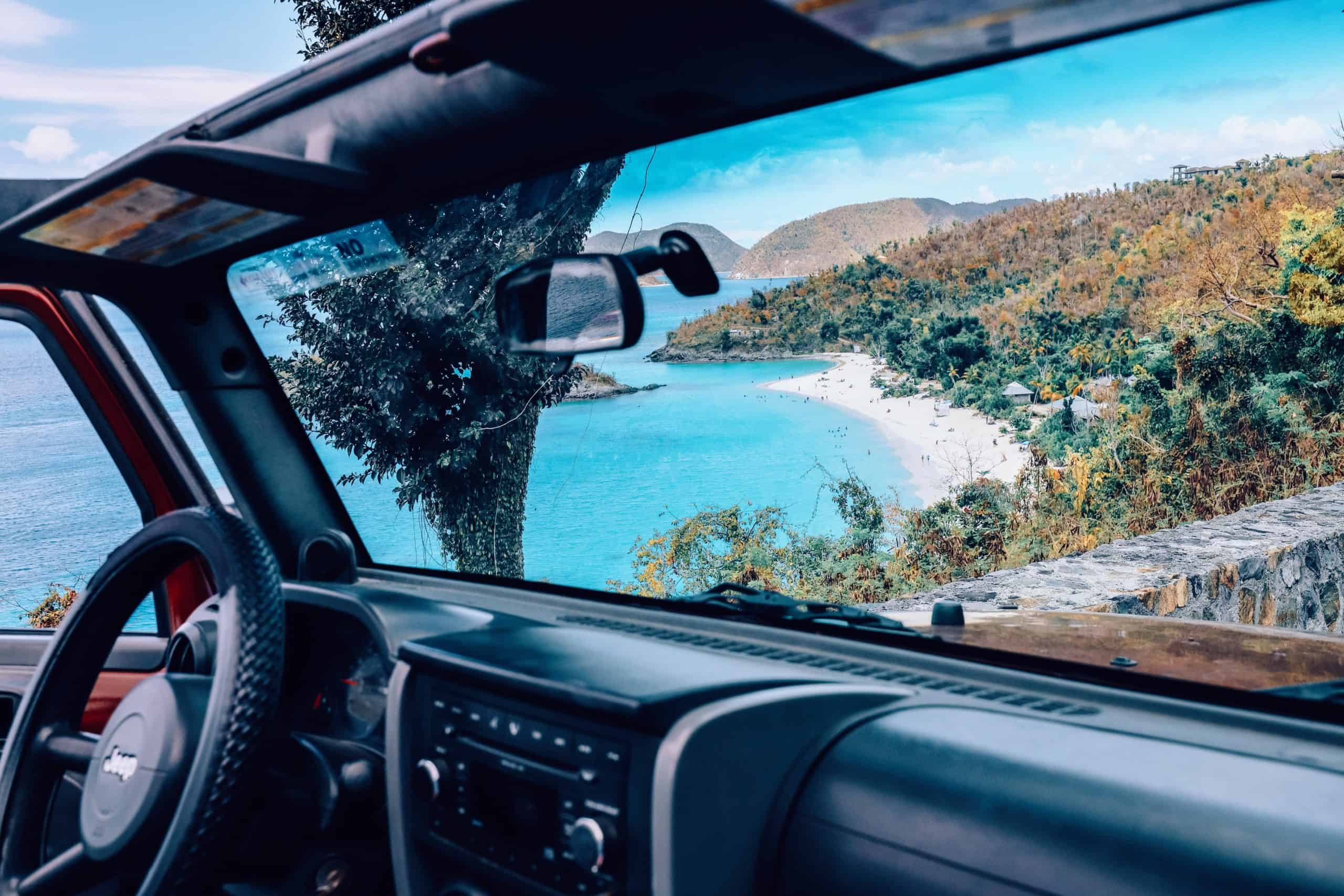
A literal “lush tropic paradise”, Virgin Islands National Park has it all: white sand beaches, 3,000 years of human history, recreation opportunities, coral reefs, emerald mountains, animals, forests, and the sky’s the limit.
What’s more, the park protects 60% of the land area of Saint John in the United States.
The upsetting part is that the United States Virgin Islands National Park will undoubtedly change once and for all due to warming oceans.
The wildlife is worth seeing, if once in a lifetime! Sea turtles, pearly-eyed thrashers, seabirds, red-eyed coqui, bananaquits, and Saint Croix ground lizards are just a few examples.
Moreover, an essential activity is the self-guided Coral Reef Underwater Park Trail. This is the main tourist attraction – all you need to do is bring along your snorkeling gear (or rent it) and delve into the undersea heaven of coral and fish!
Get Google Maps directions here!
Voyageurs National Park, Minnesota
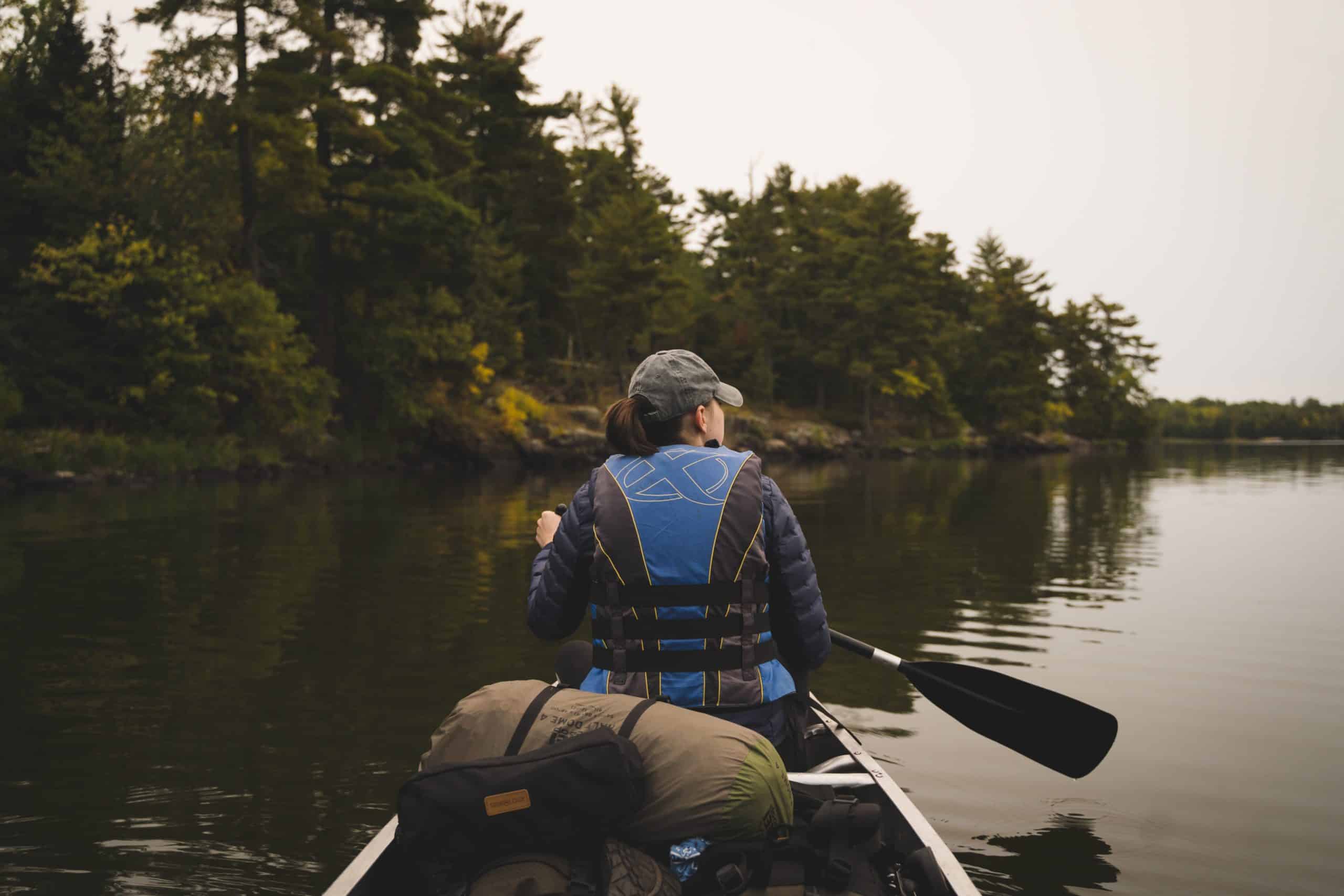
Slightly similar to Everglades the waterways internally link it. Voyageurs National Park is a water-based park, making it ideal for every water activity you could think of – taking a guided park-ranger boat tour, reserving a watercraft, or bringing your own with you, the possibilities are endless.
Since the Voyageurs National Park shares a border with Canada, the waters are diverse and different from each other, so cross-country skiing and snowshoeing are an option! That’s in addition to fishing, of course.
A canoe is your best option to experience the park’s waterways wholeheartedly, followed by a ranger-led boat trip. That way, you’ll ensure seeing the hidden wildlife, including wolves, loons, and beavers.
By the way, the Northern Lights (Aurora Borealis) can be seen from the park, depending on the sun radiation type, but the chances are much higher in the winter because the hours of the night are longer, exposing the Northern Lights!
Get Google Maps directions here!
White Sands National Park, New Mexico
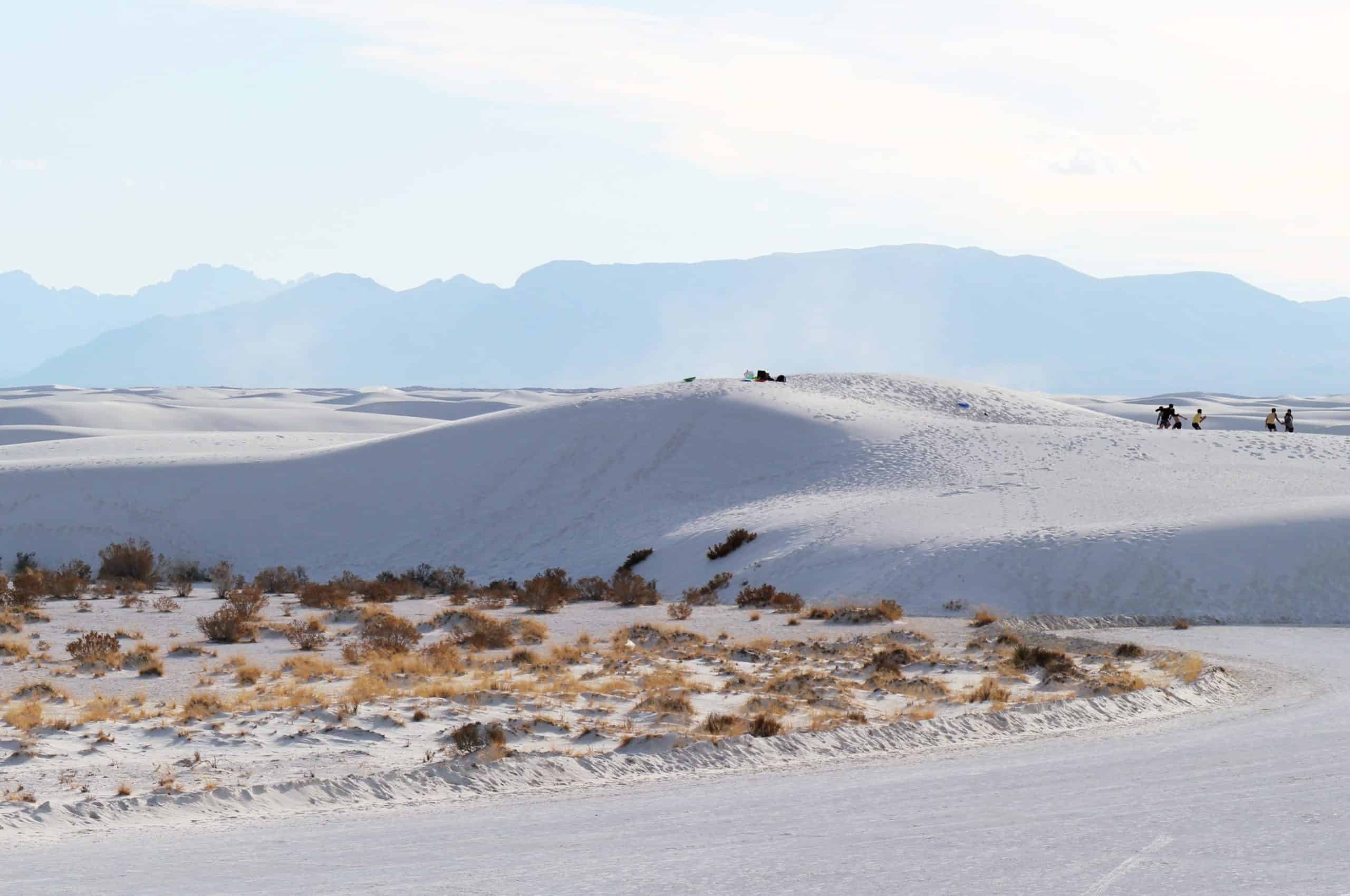
Having joined the list of national parks in the United States in December 2019 (after being among national monuments), White Sands National Park now preserves a significant segment of wave-like dunes of gypsum sand that make up the largest gypsum dune field.
Besides, the White Sands National Park preserves human history remnants dating as far back as 10,000 years, such as weapon advancements, which is why it was a national monument, to begin with.
Since the White Sands land is untamable, so are its animals. Despite the White Sands desert environment, they’ve managed to stay active and survive. These include coyotes, bobcats, foxes, porcupines, and rabbits, to name a few. Plus, native plants provide food and shelter for the animals.
The best thing to do at White Sands National Park is taking walks in the beautiful white sand dunes; the scenic drive on Dunes Drive immerses you into the gypsum dune field. Better yet, you can hike the dunes on the park’s five trails!
Get Google Maps directions here!
Wind Cave National Park, South Dakota
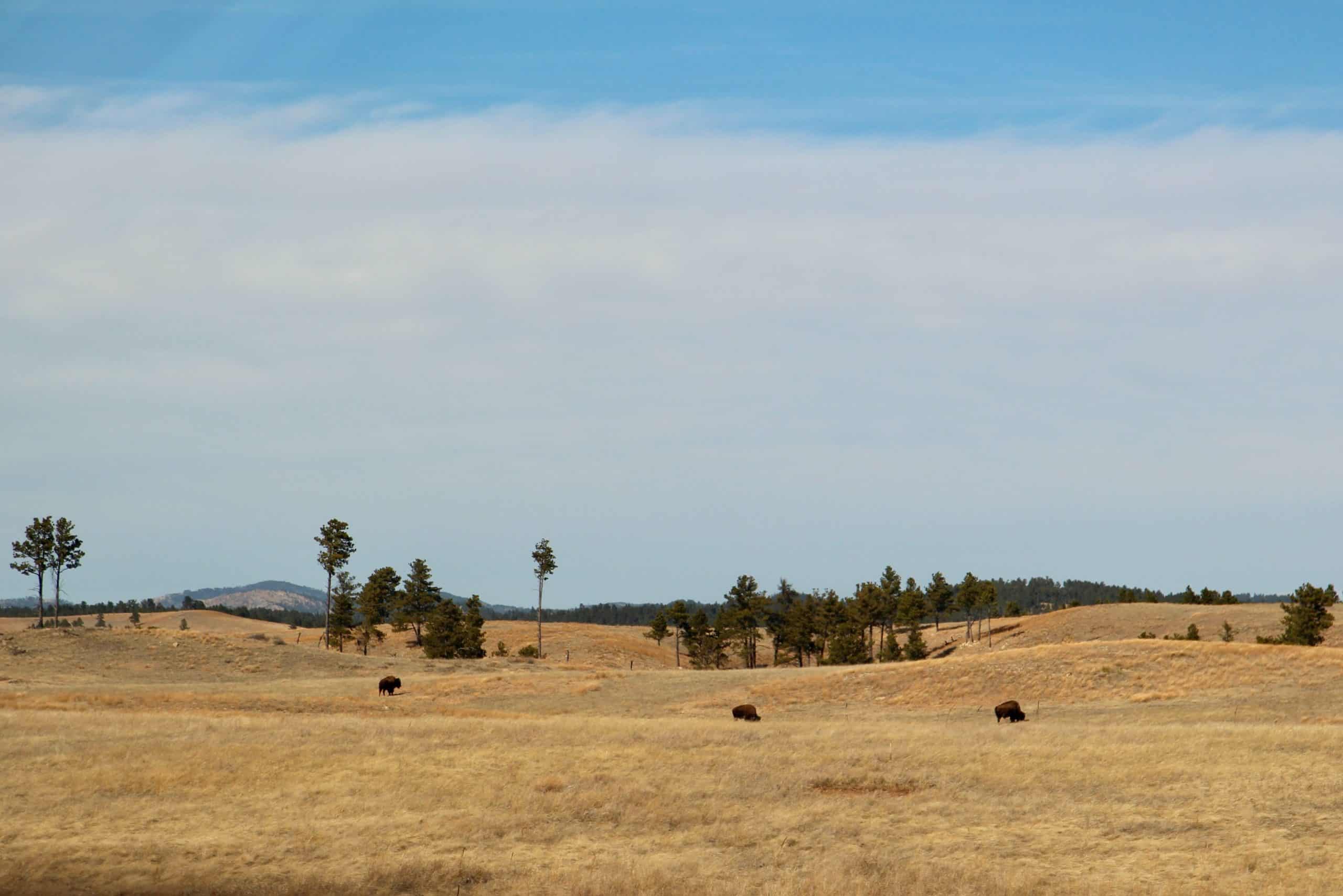
Wind Cave National Park was the first national park stemming out of a cave. Today, it houses the world’s largest concentration of rare boxwork formations along with forests and prairies, making it an attraction for diverse wildlife.
It’s not unusual for cave parks to mainly protect caves lying underground, but what’s unique about this park is that it does that and goes beyond to protect land above the ground.
To get enough of its natural wonders, it would be best to take a ranger-guided tour for watchable wildlife and forested hillsides.
Needless to say, of course, allocate time for the cave tour! While it’s been down for repairs since June 2019, it’s sure to resume at one point and offer a primitive caving experience, including wriggling, climbing, crawling, and most importantly, fun!
For hiking, the park has over 30 miles of trails to empower you to make the most out of the attraction!
Get Google Maps directions here!
Wrangell – St. Elias National Park and Preserve, Alaska
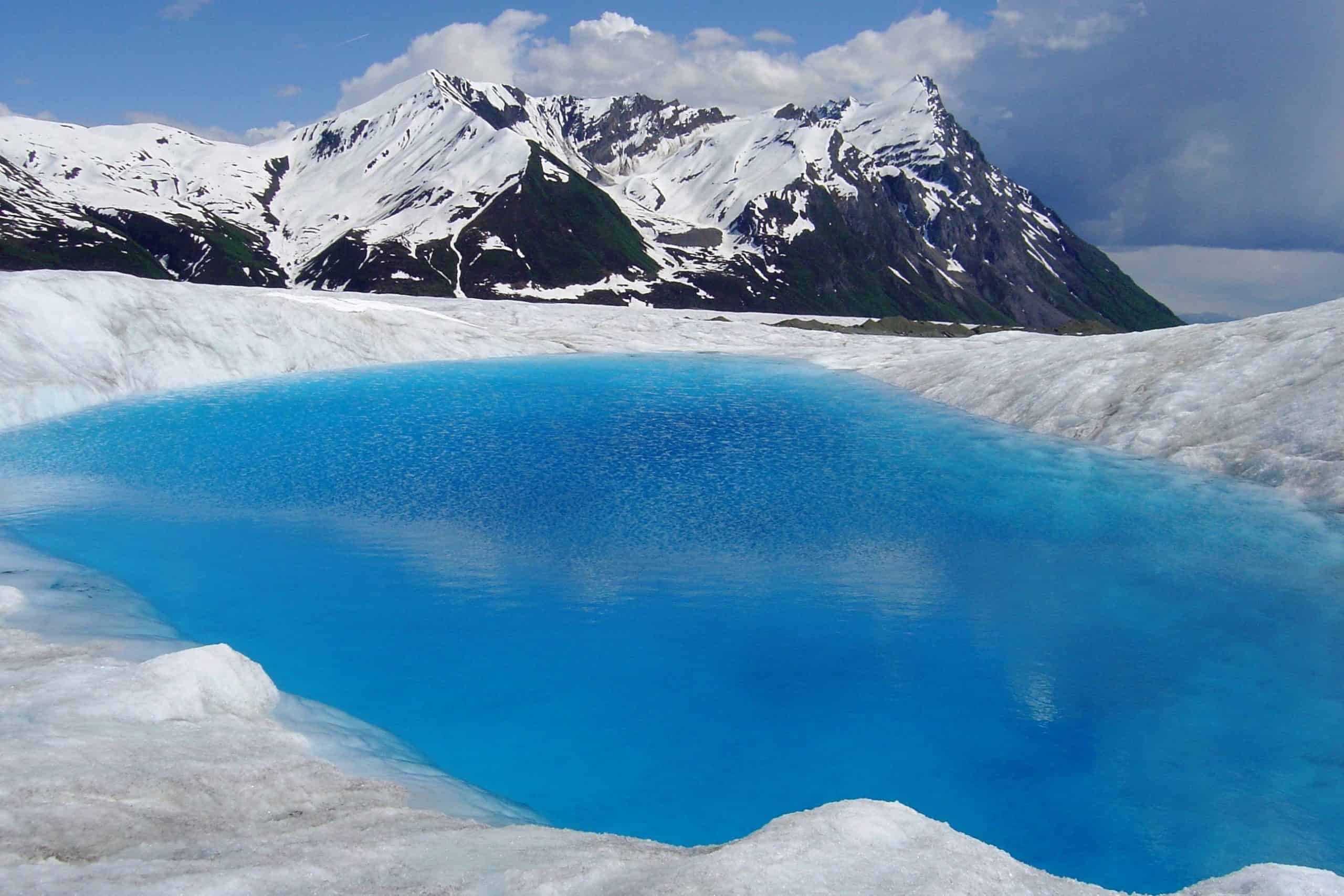
No matter how much I talk about Wrangell – St. Elias National Park and Preserve, I don’t think any words would do it justice. But, let’s just say that this is the largest US national park (spanning six times the size of Yellowstone National Park). And with that size, do you think there’s anything it doesn’t include?
From mountain peaks and glaciers to wildlife and historical mining sites, the Wrangell St. Elias National park is a gem that would take a long time to roam fully.
On that note, I want to mention that the only two roads you can access the park from are being maintained during the summer, so plan accordingly!
For a remarkable experience, make sure to drive McCarthy Road for a scenic drive you won’t forget.
Also, if you can, hike on Root Glacier for top-notch mountain and glacier views. You might even get lucky and see bears walking around!
Get Google Maps directions here!
Yellowstone National Park, Wyoming
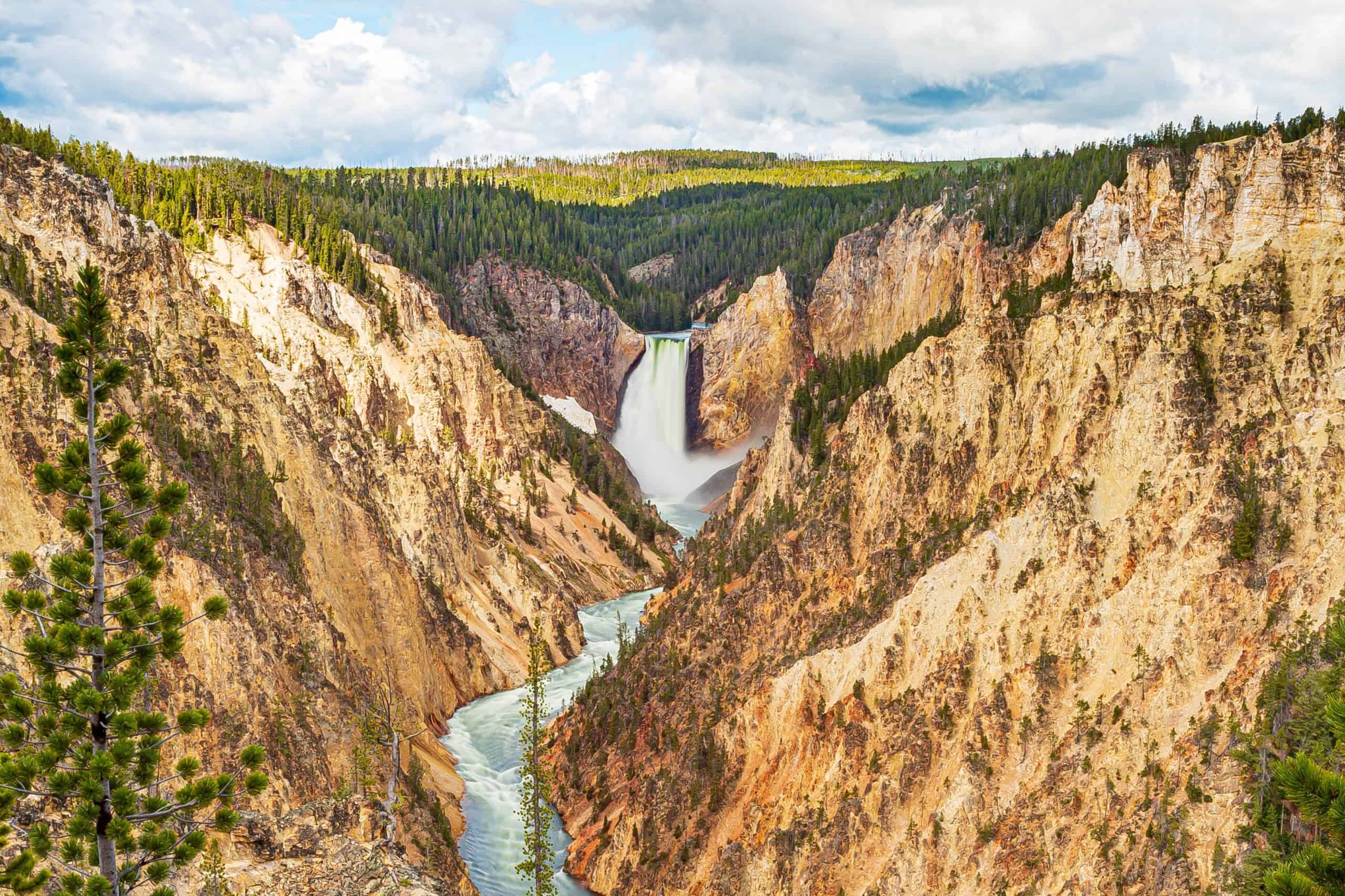
Being the first US national park the world ever knew, Yellowstone National Park combines everything you could see in any other national park and more in its nearly 3,500 square mile area. Adding to its uniqueness, it’s not just located in Wyoming but also spreads to Montana and Idaho.
Being located above a volcanic hot spot is just the beginning of Yellowstone National Park’s magic. Over and above that, it encompasses awe-inspiring canyons, lush forests, extravagant geysers, and alpine rivers. The park’s most famous geyser is Old Faithful, a geyser that has unceasingly erupted every 44 minutes to 2 hours at most since 2000.
Plus, if you’re an animal lover, this national park has its doors open for hundreds of animals, including bison, wolves, elk, bears, antelope, moose, badgers, otters, and newborn critters.
Since this park is a well-known one and not easy to navigate, check out Expedia’s guide for what not to miss!
Get Google Maps directions here!
Yosemite National Park, California
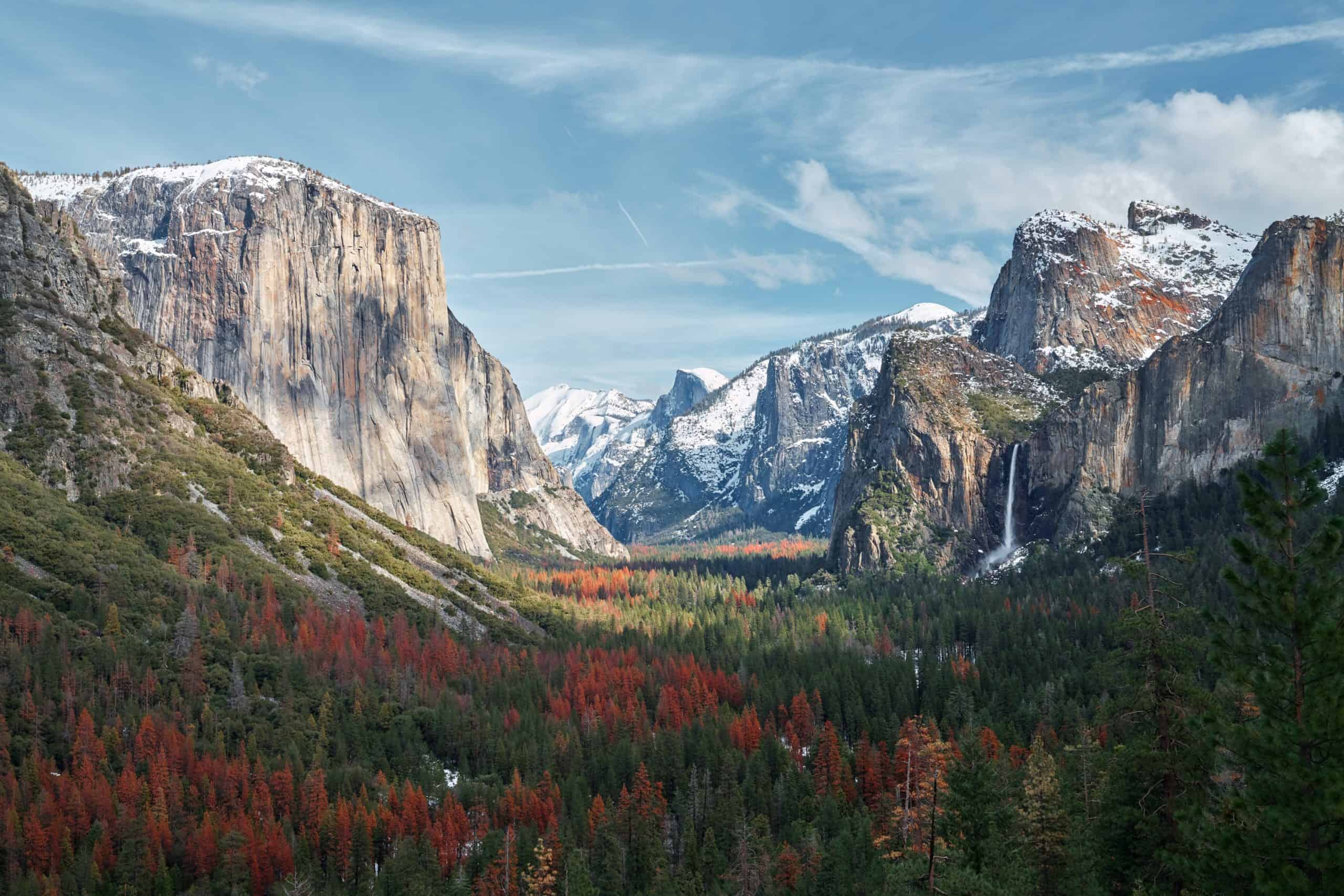
Among the popular US national parks located in California’s Sierra Nevada mountains, Yosemite National Park has everything from iconic sceneries, galleries, and museums, to shops and restaurants.
Because it’s easy to get immersed in the park’s majestic attractions, I must remind you not to miss the opportunity to visit the Tunnel View to experience the Yosemite Valley’s expansive views. You can see El Capitan and Bridalveil Fall rising with Half Dome as the backdrop.
Tip: It’s incredibly beautiful during snow and mist-time!
Other must-visit places in the Yosemite National Park include Glacier Point, Yosemite Valley, and Hetch-Hetchy, a peaceful treasure in the form of a valley, reservoir, and water system.
Within Yosemite Village lie the shops, restaurants, and the Yosemite Museum and Ansel Adams Gallery. So if you’re not a photographer yourself, take home some black and white photographs to carve the memories of your visit to Yosemite National Park.
Get Google Maps directions here!
Zion National Park, Utah
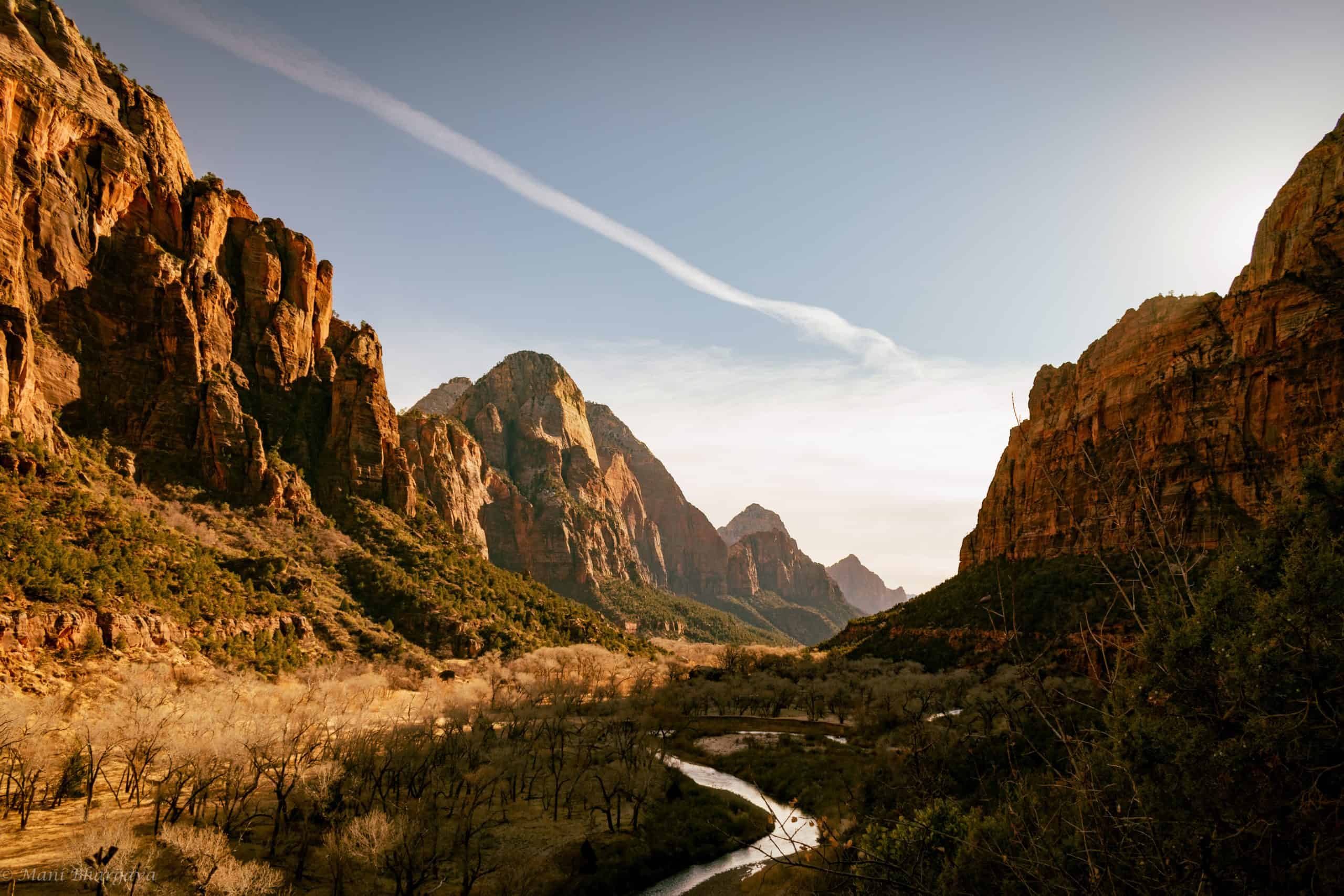
If you would like to visit the majority of a national park, you’ll love Zion National Park. It’s smaller compared to most of the parks on this list, spanning over approximately 594 kilometers. Still, it’s heaven on Earth for climbers.
Consisting of 2,000-foot sandstone cliffs with unlimited space for climbing, Zion National Park offers you a memorable climbing experience on its red and sedimentary rocks holding stories of ancient history, especially near Kolob Canyons.
Whether you’re scrambling up to Angel’s Landing, Weeping Rock, or Emerald Pools Trails, you’re in for a remarkable experience.
Other enjoyable activities you could experience include backpacking in designated tranquil areas, camping under Zion’s uniquely dark skies, horseback riding through pine forests, and dramatic sceneries. The activities are many!
And because national parks would be incomplete without sceneries to gaze at, Zion National Park is host to unusual plants and wild animals – all in a rich desert with colorful canyons.
Get Google Maps directions here!
Start Planning Your Next US National Parks Trips!
Now that you’ve acquired a wealth of information on all the US national parks, it’s time to load up your car and start exploring!
Just remember: regardless of which of the 63 national parks you’re visiting next, choose the right time to go, prepare your travel guide, and plan your time in the park to make the most of your visit.
I hope this list has been handy!

